

20 Top-Rated Tourist Attractions in Luxembourg
Written by Bryan Dearsley Updated May 26, 2022
Although a small country of just 600,000 people that only covers around 1,650 square kilometers, the Grand Duchy of Luxembourg delivers a considerable diversity of attractions and fun things to do.
While many of the country's top sightseeing opportunities and points of interest lie in vibrant Luxembourg City (Stad Lëtzebuerg in Luxembourgish), the old quarter of which has been designated a UNESCO World Heritage Site , Luxembourg's many small towns are equally lovely and are well worth exploring.
It's also an extremely easy country to travel around. Whether you're exploring on foot in the capital city, are planning on taking a driving tour through the picturesque countryside, or are doing some town-hopping by train, you'll never have to travel too far before finding something worth seeing.
Old fortresses and castles complement the country's beautiful scenery, making it a popular tourist destination that is frequently visited in combination with surrounding countries such as Belgium and the Netherlands.
You'll find the best places to visit in this charming West European country with our list of the top attractions in Luxembourg.
The Old Quarter of Luxembourg City
National museum of history and art, luxembourg city, the bock casements, luxembourg city, grand ducal palace, luxembourg city, the walls of the corniche, luxembourg city, william square (place guillaume ii), luxembourg city, grand duke jean museum of modern art (mudam), luxembourg city, echternach and its benedictine abbey, the luxembourg ardennes, luxembourg city history museum, bourscheid castle, mondorf-les-bains and the moselle, upper sûre natural park and esch-sur-sûre, walferdange and its castle, notre-dame cathedral, luxembourg city, beaufort castle, vianden castle, parc merveilleux.
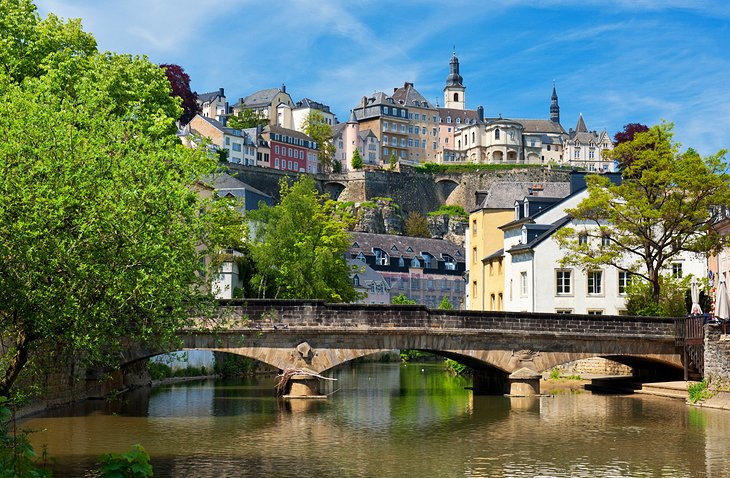
There's no better place to begin exploring beautiful Luxembourg City than in its historic Old Quarter. Often referred to locally as simply "d'Stad," this wonderfully preserved old city center was designated a UNESCO World Heritage Site in 1994.
The city's impressive ancient fortifications also ensured its place as one of the most strategically important of Europe's major cities. The fortress was so impregnable, in fact, it was dubbed the "Gibraltar of the North." Although the original fortress was dismantled between 1867 and 1883, its impact upon the Old Quarter is evident everywhere.
Today, the old fortifications have given way to beautifully laid out parks and gardens, while its cobbled streets are lined with charming old homes and buildings. It's a great place to spend a few hours exploring as you cross its many bridges, including the spectacular Adolphe Bridge , considered a city landmark. You'll also traverse many interesting alleyways. For an added dose of fun, don't make use of a map; instead just follow your nose and see where you end up!
While there's ample public parking, if you're arriving by car, consider using one of the city's excellent park-and-ride facilities. Better still, arrive by train and book a stay in an Old Quarter hotel.
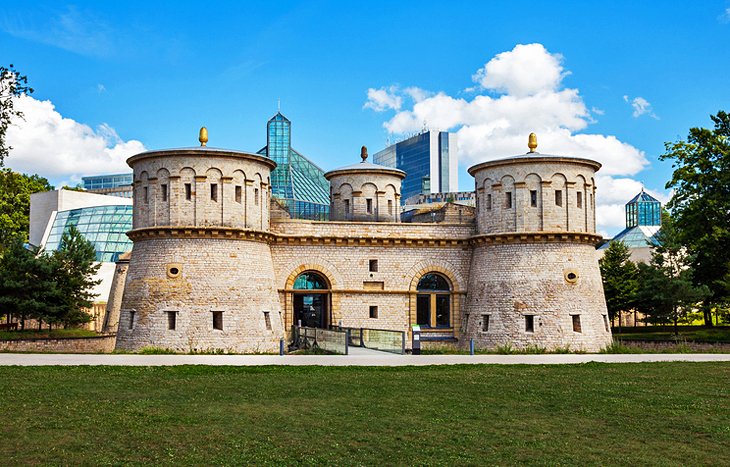
If you were to judge Luxembourg City on the quality of its museums, never mind its status as one of Europe's most historically important cities, it would still rank extremely high on the list of the continent's must-see cities. Topping the list is the National Museum of History and Art (Nationalmusée fir Geschicht a Konscht, or (MNHA).
It's located in the historic Fish Market area, once the original town center. The MNHA's collections include art objects, archeological finds, furniture, tools, coins, arms, and documents dealing with the history of the country, all of them housed in a stunning new building.
There's a particular emphasis on the Gallo-Roman period, with numerous fine displays illustrating the artistic, social, religious, and intellectual life of Luxembourgers from the 16th to the early 20th centuries. The contemporary art section is also a must-see, and is furnished with works by many of the most important artists of the 20th century. Guided tours in English are also available, and a research library and shop are also located on-site..
The unique Am Tunnel , or Galerie d'Art Contemporain Am Tunnel, is also worthy of a visit for art lovers. Located, as the name suggests, in an old tunnel, this contemporary art gallery with its first-rate collection of visual arts offers a pleasant respite from the many larger, busier museums and galleries in the city.
Address: Marché-Aux-Poissons, 2345 Luxembourg City
Official site: www.mnha.lu/en/
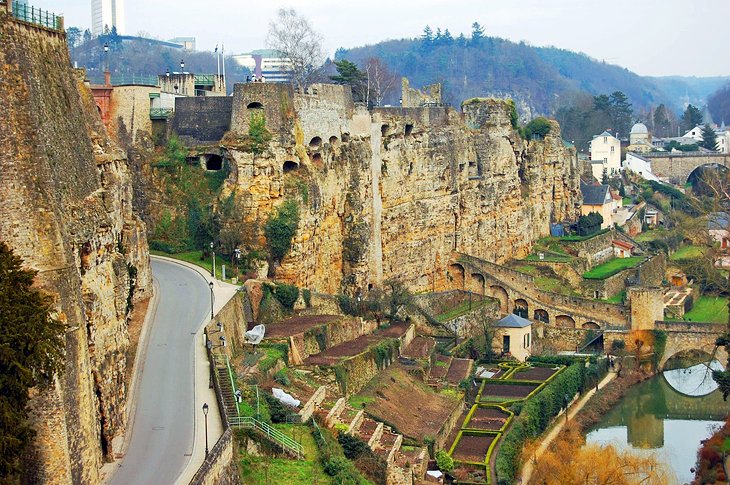
Luxembourg's Bock cliff, or Bockfiels, with its fortifications and cannon-loopholes, is where you'll find the entrance to the famous Casemates (Casements du Bock), a 21-kilometer network of underground passages hewn from solid rock. Capable of sheltering thousands of defenders, as well as equipment and horses, it also housed workshops, kitchens, and slaughterhouses.
All told, the Casements, some of which date back to Spanish rule in 1644, cover an impressive 40,000 square meters. Today, much of these remarkable fortifications can be explored on foot, while organized guided tours are available for those wanting to learn more about the tunnels' fascinating history.
On the Bock plateau itself are the remains of the old castle, discovered in 1963. There are beautiful views of the suburb of Grund and the Rham Plateau, the old 19th-century barracks, and the big towers and remains of the Wenceslas wall dating from 1390.
Address: 10 Montée de Clausen, 1343 Luxembourg City
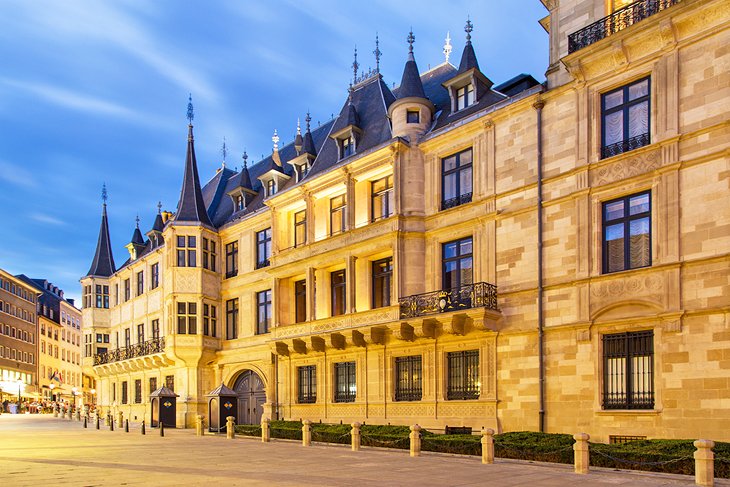
The Grand Ducal Palace (Groussherzogleche Palais) is a must-see landmark in Luxembourg City. This gorgeous Renaissance building dates from 1572 and serves as the official residence of the country's reigning monarch, Grand Duke Henri . It was built as the city's original city hall in 1572, a role it served until 1795 before switching eventually to its present use as the Grand-Ducal Place in 1890.
While it's still the full-time home of the Duke, the public are permitted an opportunity for a peek inside during special organized tours made available from mid-July to the first week of September, when it becomes one of the city's most visited attractions.
Nine tour options are available daily, and are conducted in a variety of different languages, including English. Tickets are made available through the Luxembourg City Tourist Office from their office in Place Guillaume II.
Highlights of the tour include a chance to see the plush, elegantly furnished interior, including the ceremonial rooms used on significant occasions, such as visits by foreign dignitaries.
Address: 17 Rue du marché-aux-Herbes, 1728 Luxembourg City
Official site: https://monarchie.lu/en/visit-grand-ducal-palace
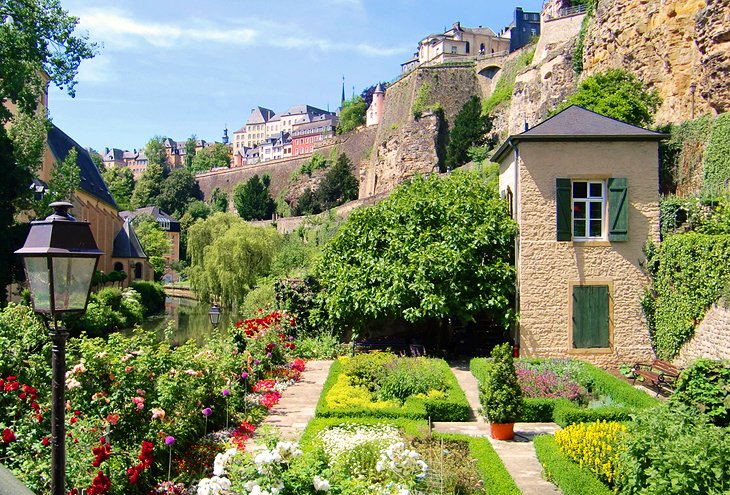
The spectacular Walls of the Corniche (le Chemin de la Corniche) in Luxembourg City have been called "the most beautiful balcony in Europe." Towering over the old city in the river valley below, it's here you'll find the big Gate of the Grund dating from 1632. Its ramparts reveal several aristocratic houses and refuges, as well as the ancient convent of the Dominicans and St. Michael's church (987 CE).
In the suburb of Grund itself is a large cluster of buildings with the church and ancient Abbey of Neumünster . It's notable for its 17th-century cloister of Limoges, an organ dating from 1720, and a 14th-century "black virgin." The adjacent buildings are part of the ancient Hospice St.-Jean, founded by Emperor Henri VII, Count of Luxembourg, in 1309.
Address: Chemin de la Corniche, 1945 Luxembourg City
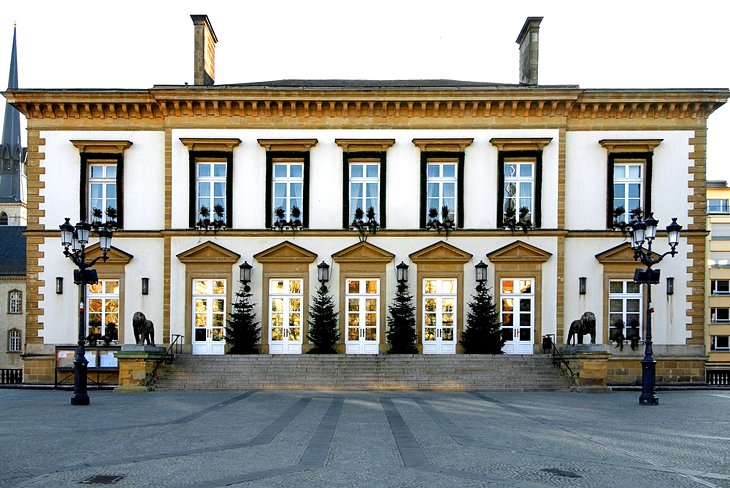
Luxembourg's William Square (Place Guillaume II) is one of the city's largest open spaces. The former site of a Franciscan convent, it has since been converted into a pedestrian zone. In the center is the equestrian statue of William II, King of Holland and Grand Duke of Luxembourg.
William Square is also where you'll find the lovely Town Hall and the famous Trémont's lions. Here, too, the city's popular weekly market is held, and is famous for its flowers and plants, as well as local produce.
Nearby is the 16th-century House of Raville with its beautiful façade, well-restored balcony, and spiral staircase. Other notable landmarks are the Spanish Turret with its superb views of the Pfaffenthal suburb, and the old cavalry-barracks of Vauban. Dominated by Fort Thüngen , it's also known as the "Three Acorns" for the three acorns that adorn each of its three towers.
And be sure to take your time exploring this beautiful area. It's a delightful spot to stop for a meal or beverage at any one of the many fine cafés and restaurants located here.
Address: 23 Rue du Fossé, 1536 Luxembourg City
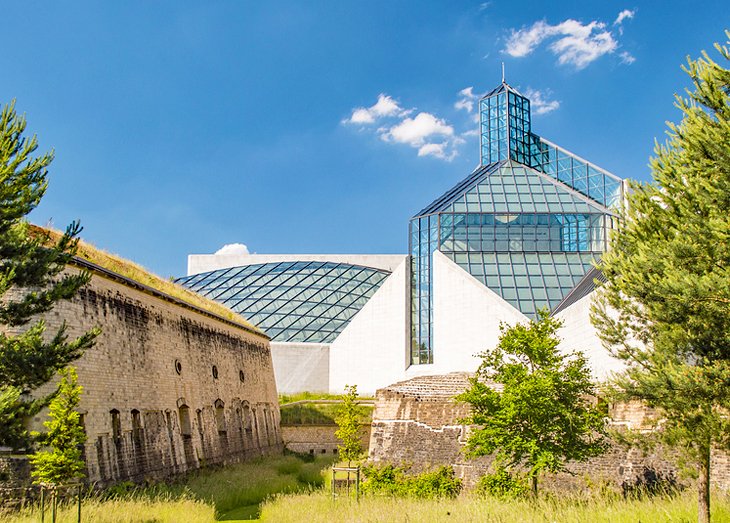
Fans of modern art and ultra-modern architecture must visit the superb Grand Duke Jean Museum of Modern Art (Musée d'art moderne Grand-Duc Jean). It's also referred to simply as MUDAM, and its contemporary art collections from world-renowned artists make it one of Europe's most important art galleries.
Since its opening in 2006, MUDAM has drawn consistent rave reviews for its large contemporary collection. Highlights include works from such well-known artists as Bruce Nauman, Andy Warhol, and Julian Schnabel, to name but a few.
In addition to its fine permanent artworks on exhibit, the museum features many visiting and temporary displays. Also available to the public are a variety of first-rate educational programs and workshops, including some geared specifically to kids.
A large shop selling related gifts and souvenirs is located on-site, as is a great café. Guided tours are also available in English.
Address: 3 Park Drai Eechelen, 1499 Luxembourg City
Official site: www.mudam.lu/en/home/
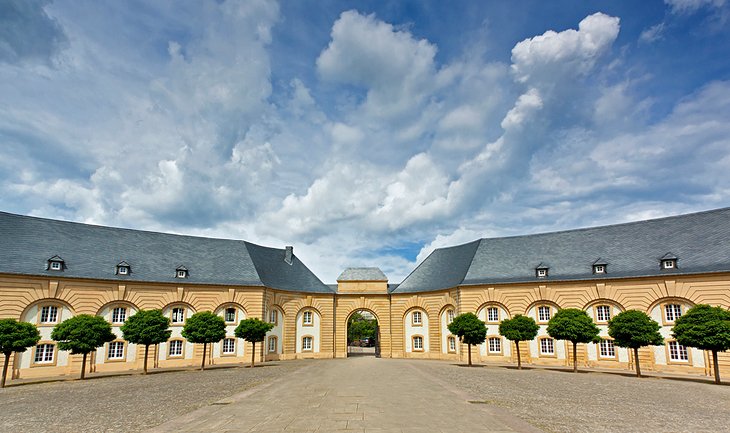
The beautiful town of Echternach lies on the bank of the River Sûre, which forms the border with neighboring Germany. The Mëllerdall and Germano-Luxembourg Nature Parks are located nearby, and the surrounding woods are crisscrossed with hundreds of footpaths leading to spectacular rock formations, waterfalls, a lake, and numerous lovely viewpoints.
The town itself is well known for its centuries-old dancing procession, which takes place on Whit Tuesday and attracts visitors from around the world. The old aristocratic houses, narrow streets, and ancient ramparts have helped Echternach maintain its medieval appearance.
A must-see is the seventh-century Abbey of Echternach. This former Benedictine monastery is popular for its superb museum and is notable for its four long wings built around a large square courtyard. The basilica, considered the most important religious building in the country, is home to a crypt with a magnificent white marble sarcophagus containing the remains of St. Willibrord, the founder of the abbey, and its vaults are painted with frescoes dating back to the 10th century.
Echternach is also famous for its international music festival , which runs from late May to late June. The town also offers great dining at its many restaurants, as well as numerous boutique shops and galleries, a variety of reputable hotels, and camping.
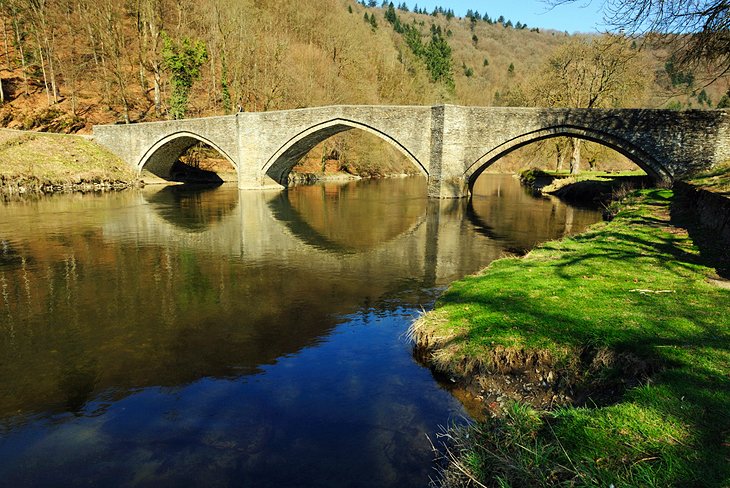
Standing in stark contrast to the rather flat landscape around Luxembourg City, the Ardennes is where you'll find high forested plateaus, sheer cliffs, wooded hills, and hidden valleys, as well as countless impressive views. This picturesque region, famous as the place where Hitler staged his last major campaign of WWII, boasts numerous castles, fortresses, and fortified farms rising out of the hilltops.
One of the prettiest towns, Wiltz , consists of an upper and lower town and is famous for its open-air theater and music festival. There's also a Battle of the Bulge Museum in Wiltz Castle. Another WWII-themed museum of note in the Ardennes is the General Patton Museum and monument in Ettelbruck.
The quaint village of Clervaux is also worth checking out. While the village lies amid a deep and narrow valley beside the river Clerve, its Benedictine Abbey of St. Maurice and St. Maur . Also known as Clervaux Abbey, it was built in 1910 in Romanesque-Burgundian style and dominates the valley. Visitors here can enjoy exhibits relating to the monastic life, as well as Gregorian masses.
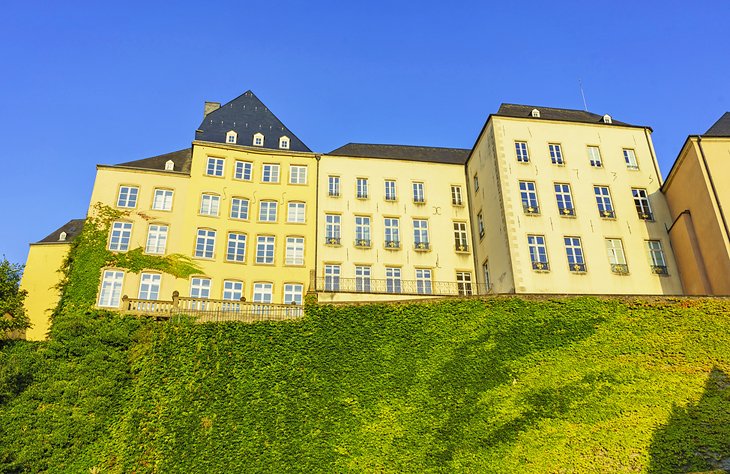
One of the newer attractions in Luxembourg, the Luxembourg City History Museum (Musée d'histoire de la Ville de Luxembourg) was opened in 1996 and provides a fascinating insight into the rich 1,000-plus-year history of the city.
The building itself is a stunning mix of the old and new, combining a number of old homes dating from the 17th and 19th centuries, some with even older medieval sections, such as recently discovered vaulted cellars. These contrast impressively with the museum's striking modern extensions.
Exhibits deal with the early settlement's first inhabitants and its growth and development through the centuries right up to the present day. In addition to its many fine exhibits and displays, the museum is home to a huge elevator and viewing area, which offers wonderful views over the city's historic Grund district. English language guided tours and workshops are also available.
If you're planning on doing some museum-hopping during your stay, be sure to also visit the National Museum of Natural History (Nationalmusée fir Naturgeschicht). This popular Luxembourg City attraction features exhibits dealing with the natural world, both locally and globally.
Address: 14 Rue du St Esprit, 2090 Luxembourg City
Official site: http://citymuseum.lu/en/
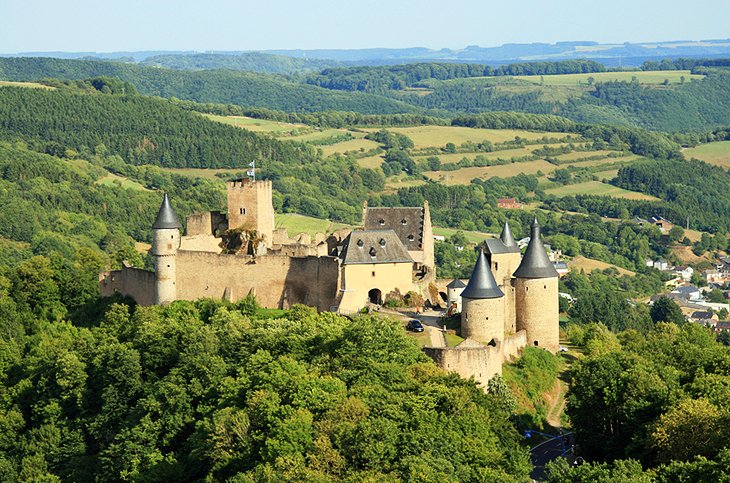
The village of Bourscheid stands high on a plateau and is bordered by the rivers Sûre and Wark. Here, you'll find excellent views and many pleasant hikes to other quaint villages, including Michelau in the Sûre Valley, Welscheid in the Wark Valley, and Kehmen on the plateau. For sun bathers, there are two river beaches at Bourscheid-Plage and Dirbach.
This region of the Ardennes is very much dominated by the ruins of the Bourscheid Castle. This fairy-tale-like fortress dominates the surrounding countryside, and looks down from a rocky peak 137 meters above the Sûre. Dating from the 10th century, the castle has been largely restored and is accessible to visitors. Self-guided audio tours are available, and English language guided tours are also available upon request.
If you are looking for something interesting to do at night, view the castle in the evening when it's lit up. One of the top free things to do in Luxembourg, it's a truly memorable experience, particularly when viewed from the village.
Address: 1 Schlasswee, L-9140 Bourscheid, Luxembourg
Official site: www.castle-bourscheid.lu/wp5/en/
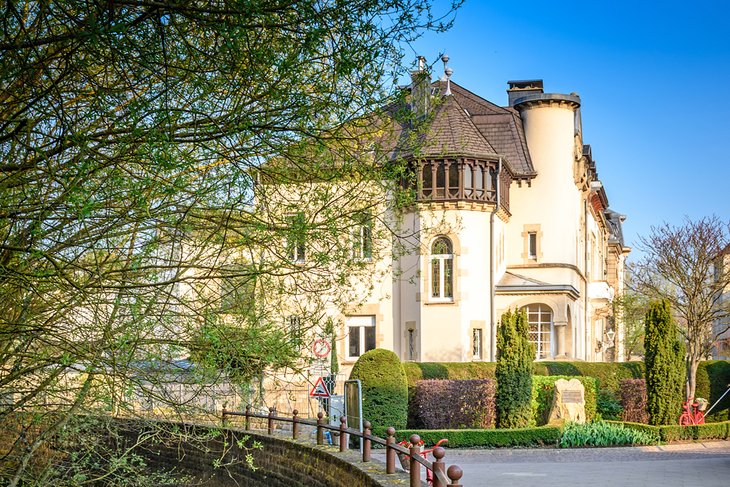
The Moselle region of Luxembourg occupies much of the eastern part of the country and features slopes flanking the majestic Moselle River. The many picturesque villages tucked along the banks of the Moselle recall an ancient charm and are fun to explore and renowned for their varied cuisine produced from locally grown products.
It was also an area much favored by the Romans. As a result, many Roman archaeological remains can be found dispersed throughout the region.
One must-visit in the region is Mondorf-les-Bains, a small town famous for its thermal springs. One of the top tourist attractions here is Mondorf le Domaine Thermal , a large spa complex that houses a health center, sports and leisure club, and hotel. The complex's thermal installations are fed by springs supplying a mineral water of 24 degrees Celsius that is well known for its medicinal qualities.
Afterwards, stroll through Mondorf Park with its large collection of trees, shrubs, and flowerbeds. Other highlights include 18th-century St. Michael's Church , with its furniture and frescoes; the Castel , a little Roman fortress transformed into a hermitage during the Middle Ages; and the Art Nouveau houses.
Address: Avenue des Bains L-5601 Mondorf-les-Bains, Luxembourg
Official site: www.mondorf.lu/?___store=en
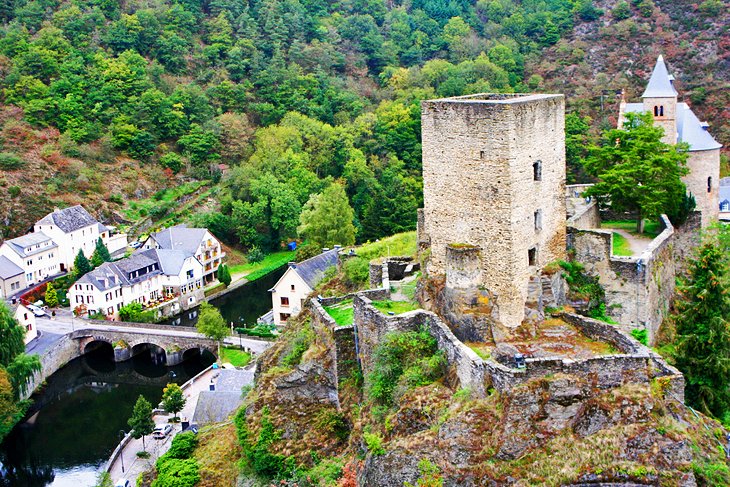
Beautiful Upper Sûre Natural Park (Naturpark Öewersauer) consists of plateaus, narrow valleys with wooded slopes, and the lake of the Upper Sûre dam. It's a popular destination for its leisure activities and water sports, as well as for its wildlife and ecotourism.
Numerous walking tours , including guided and self-guided options, include everything from pleasant circular tours to more arduous treks around the lake. A fun sculpture trail has also been added, as have excellent solar-powered boat tours across the large reservoir. Other fun things to do in Upper Sûre Natural Park include fishing, swimming, sailing, and diving.
The area also possesses a rich cultural heritage. The Nature Park Centre , located in an old cloth mill, includes a museum with interesting artifacts and exhibits relating to both the park and the local area. A number of regular events also take place here, the largest being the biennial Water Art Festival , which attracts more than 200 musicians under a theme of "Rock meets Classic."
A must-visit nearby is Esch-sur-Sûre . This spectacular small village set in the mountains and skirted by the river Sûre and widely regarded as one of the most outstanding sites in the country. The village is dominated by its ruined manor house, built in AD 927 and by the cliffs looking down to the river. The mansion is open year-round with free admission.
Address: Nature Park Centre, 15, Rue de Lultzhausen L-9650 Esch-sur-Sûre, Luxembourg
Official site: www.naturpark-sure.lu/en/
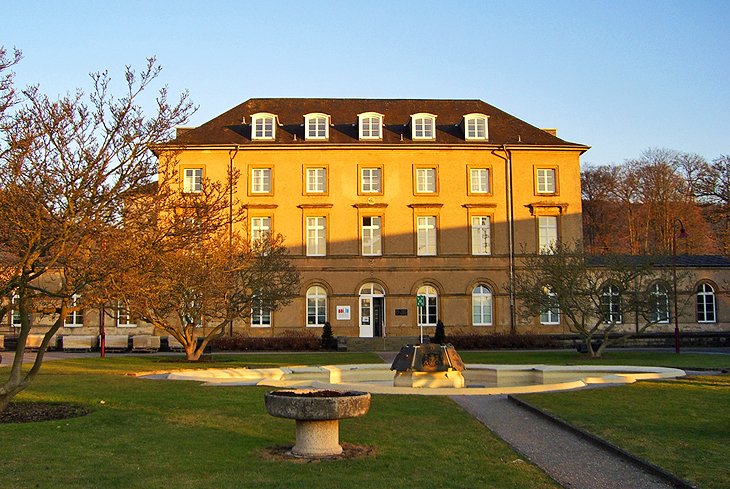
Walferdange Castle (Château de Walferdange), the Grand Ducal residence until the end of the 19th century, lies at the entrance to the Grunewald Wood. Located on one of Luxembourg's principal tourist routes and now a part of the University of Luxembourg, it makes for a great day trip as it's just a short distance from Luxembourg City .
The village of Walferdange itself boasts picturesque scenery due to its location at the junction of the Alzette Valley with its lovely wooded heights. In addition to its great views, the village is well known for its rose gardens. There's also a large archeological site worth visiting that includes a Roman villa and an underground aqueduct.
Walferdange is also become a popular shopping destination, too, since the opening of the Walfer Shopping Center .
Address: 28 Route de Diekirch, 7220 Helmsange, Luxembourg
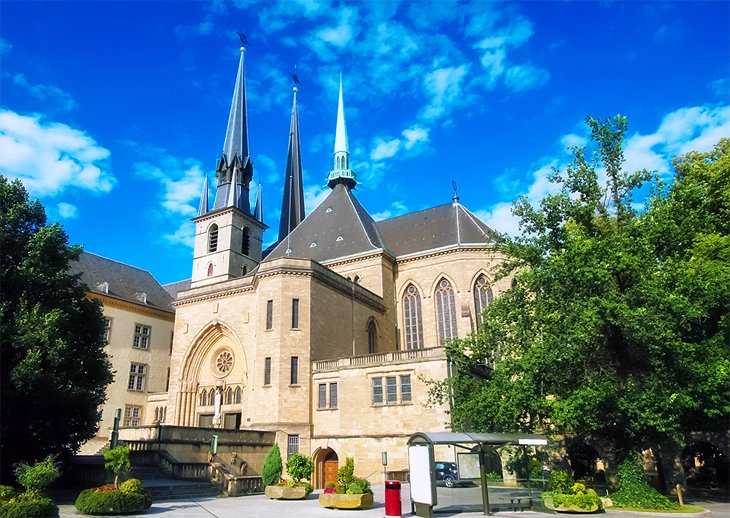
The Roman Catholic Notre-Dame Cathedral (Kathedral Notre-Dame) in Luxembourg City was built in the early 17th century in late Gothic style, with a number of attractive Renaissance features added later. Notable features of what is the country's only cathedral include the two original choir bays, dating from 1621, along with its three distinctive towers, one of which, the west tower, dates from the same period.
Also of interest are the intricate sculpted Baroque angels around the organ tribune, also dating back to the early 1600s. There's also a sobering monument dedicated to the country's WW2 resistance movement and victims of deportation located in the cathedral cemetery.
Visiting Catholics will want to consider attending the cathedral's Sunday evening mass. This regular service usually includes the involvement of the Archbishop of Paris.
Address: Rue Notre Dame, 2240 Luxembourg City
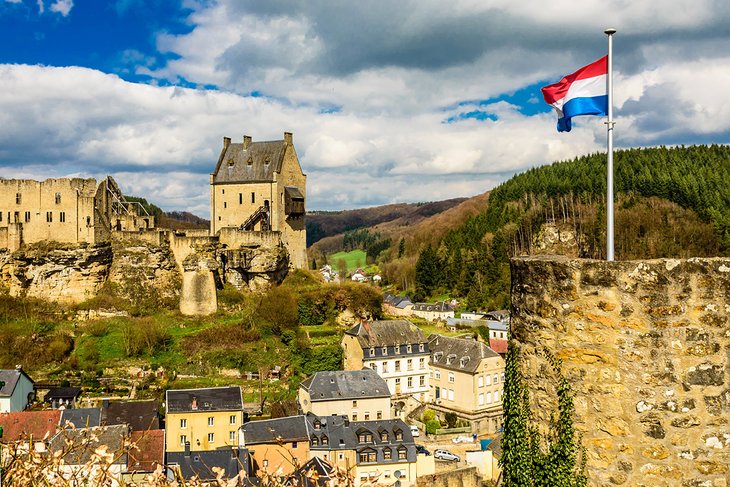
Larochette is a quaint old market town that lies in a narrow, rocky valley surrounded by woods. The town is dominated by two old and partially rebuilt castles that stand on a crag high above the valley of the White Ernz.
The town boasts a superb medieval square as well as a free museum of industry that offers a fascinating look at the area's past as an important textile base and which is open year-round. There are also a number of historical monuments dotted along its many old streets. Be sure to pop into the Neo-Roman church for its Art Nouveau frescoes.
The village is a hiker's haven, with walks for all abilities heading through the woods and countryside. Most lead to notable viewpoints such as the castles of Meysembourg and Nommerlayen, with the remains of a Roman camp at Aalburg. In addition to its fine old hotels and inns, there are also numerous campsites that are welcoming to backpackers.
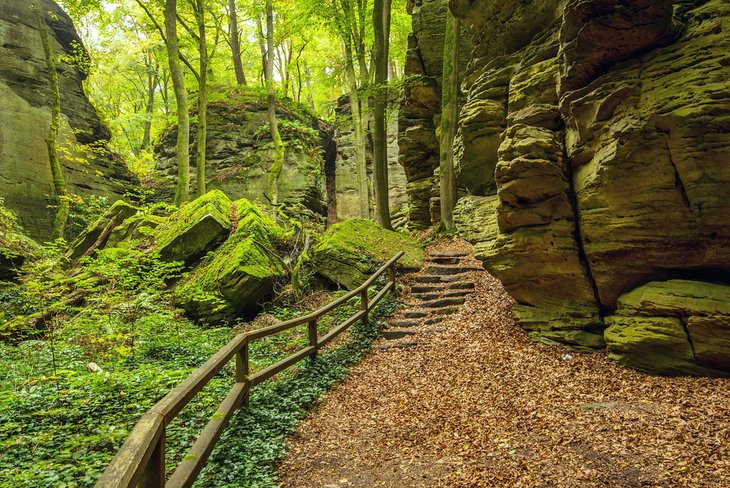
Berdorf is one of the main tourist areas in the Grand Duchy of Luxembourg and lies on a vast tableland overlooking the valleys of the Black Ernz, the Sûre, and the Aesbach rivers.
Numerous well-kept footpaths and hiking trails crisscross the valleys and chasms , where you'll find tall rocky hills with fine views and more than 300 acres of forest. One of the most popular is the 112-kilometer-long Mullerthal Trail, which connects the Berdorf to the picturesque village of Echternach.
Berdorf is also a tremendously popular area for rock climbers, hiking enthusiasts, and campers.
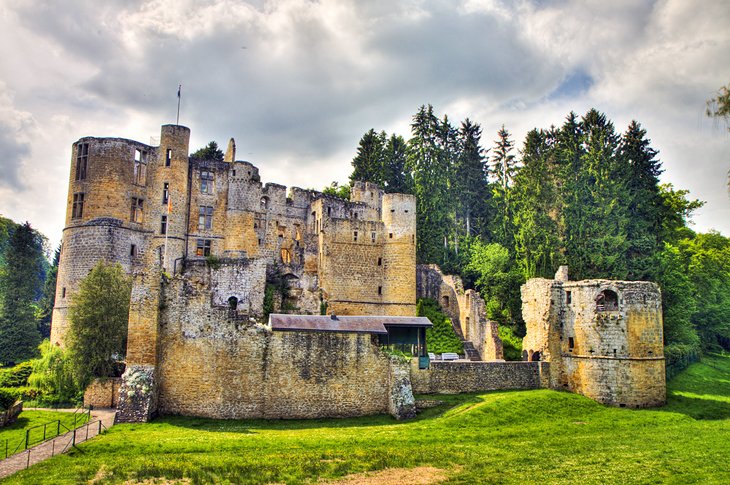
Beaufort lies on a plateau in the Mullerthal region and is well known for its near perfectly dimensioned 12th-century castle, as well as a Neo-Gothic church. Although much of Beaufort Castle (Buerg Beaufort) is now in ruins, it is still wonderful to explore.
Be sure to bring your walking shoes with you. There are a number of footpaths leading through the wooded hills to great views of the surrounding countryside, through spectacular rock formations and the gorges of the Hallerbach and the Saueracht towards Grundhof and Dillingen in the Sûre valley.
Address: 24 Rue du Château, 6310 Beaufort, Luxembourg
Official site: https://beaufortcastles.com
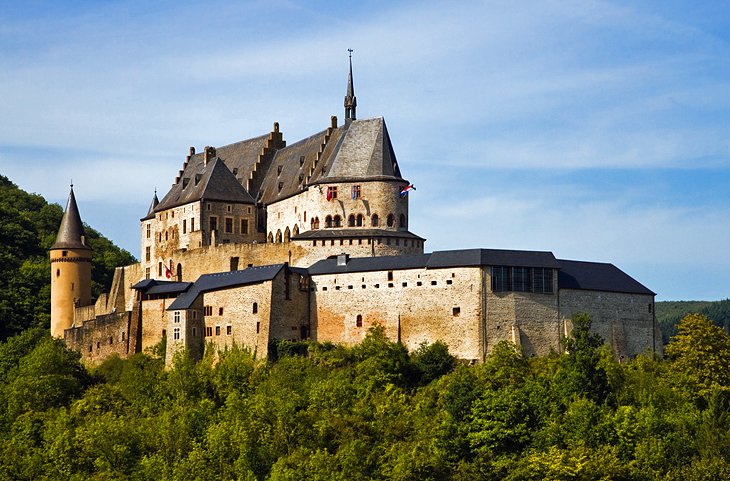
Vianden is an extremely picturesque town straddling both banks of the River Our. Its fine feudal manor , Vianden Castle (Buerg Veianen), dates back to the ninth century and is unrivaled in the Ardennes and Eifel for its architectural significance. Also of note is the medieval outer wall encircling the town with many impressive guard towers.
If you can, try to time your visit to coincide with the annual Vianden Medieval Festival . Held the first weekend of August, this popular family-friendly event is well-known for its jousting and sword fighting tournaments, its market, and knights' camp.
Also worth seeing is the parish church with its two naves. Built in Gothic style in 1248, it has since been completely restored. The former Trinitarian cloister, dating from 1250, houses a lapidary museum that traces the history of the region's once important stone- and gem trades. There's also a small art museum in a former mansion has a number of notable works from 18th- and 19th-century painters.
The house where author Victor Hugo lived during his exile in 1871 now houses a collection of souvenirs of his various visits to Vianden. A large network of walking paths, well maintained and signposted, offers access to the beautiful countryside of the Our Valley, and a chairlift climbs to a height of 440 meters where visitors can enjoy splendid views.
Address: Montée du Château, 9408 Vianden, Luxembourg
Official site: https://castle-vianden.lu/gb/
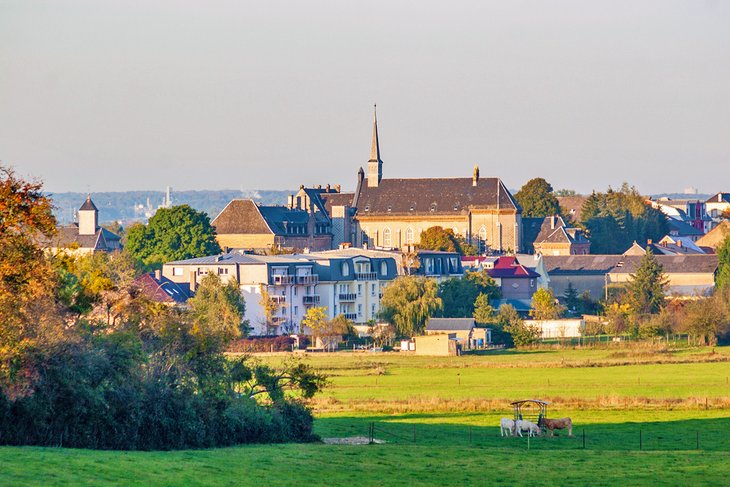
Located in the picturesque town of Bettembourg, just six miles from the capital city and three miles from the French border, Parc Merveilleux attracts thousands of visitors each year.
This amusement center, with its fairy-tale themed attractions and rides, features a game enclosure, playground, mini-train, pony express, mini-golf, restaurants, and concerts, all of them fun for all ages (but especially the kids).
There's also an interesting zoo component that houses a large collection of exotic birds, reptiles, and numerous cute and cuddly mammals.
Address: Rte de Mondorf, 3260 Bettembourg, Luxembourg

More on Luxembourg
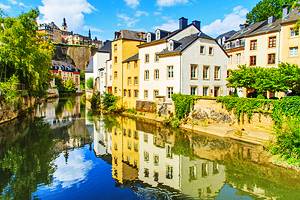
Must-see tourist attractions in Luxembourg
Are you looking for must-visit spots in Luxembourg? Look no further! This captivating Grand Duchy has much to offer, from majestic castles to stunning landscapes. In this article, we will explore 10 unmissable attractions in this small yet magnificent destination.
Table of content
One of the great advantages of travelling in Luxembourg is the free public transportation. You can travel from one end of the country to the other without spending a single cent on transport.
What are the most popular tourist places in Luxembourg
Luxembourg is a treasure trove of attractions, offering a diverse range of sights and experiences that cater to all types of travellers. If you love castles, there are about 50 (!) to visit in the Grand Duchy, if you are more of a nature lover, there are also unmissable paradises, and if you are a city lover, the capital itself has entire districts listed as UNESCO World Heritage Sites. Luxembourg has a little bit of everything for everyone.
Luxembourg's culture and traditions
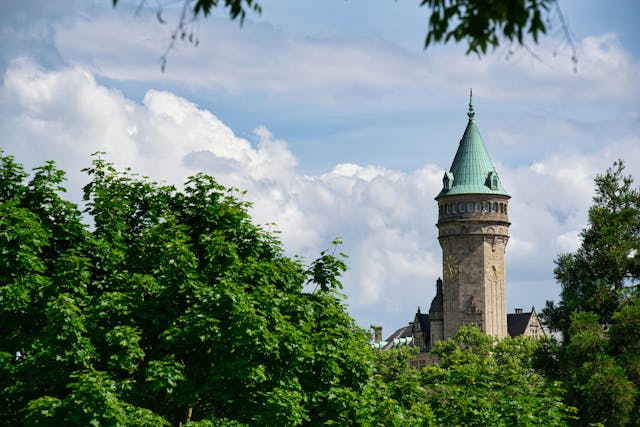
Luxembourg's attractions can be broadly categorised to help you plan your visit more efficiently. Here are some of the key types of attractions you can explore in Luxembourg.
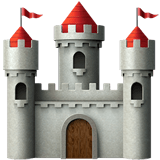
Top 10 places to visit in Luxembourg
With so many things to see in Luxembourg, where should you start? We've compiled a list of the top 10 must-visit places that should be at the top of your itinerary. From historic sites to natural wonders, these attractions showcase the best of what Luxembourg has to offer.
Opening hours: the Vianden Castle is open daily from 10:00 and closing times depend on the season.
Constructed between the 11th and 14th centuries on the foundations of a Roman castellum and a Carolingian refuge, the castle served as the residence of the counts and dukes of Vianden until the late 15th century. At that time, it was inherited by the House of Nassau and, a century later, passed to the French House of Orange.
In the early 19th century, under the reign of William I of Orange-Nassau, King of the Netherlands and Grand Duke of Luxembourg, the castle was sold and gradually dismantled, leaving it in ruins by 1820.
In 1890, the castle became the property of Grand Duke Adolphe of the Nassau dynasty and remained with the grand ducal family until 1977, when it was transferred to the Luxembourg state. Since then, it has been carefully renovated and restored to its historical splendor, earning its status as a European monument.
Beyond its historical significance, Vianden Castle is famous for its lively medieval festivals. You will be able to enjoy medieval music concerts, sword fights, musket firing displays, bird taming shows, fire-eaters, jugglers, poets, flag bearers, dancers, children's workshops, and a medieval market offering a variety of traditional delicacies.

Closed on 25 December and 1 January
The Luxembourg casemates are full of mysteries. If they could speak, they would tell grim tales from the times when Luxembourg was one of the most coveted fortresses in Europe. The defense system spanned multiple levels, with galleries dug up to 40 meters deep. Due to these formidable bastions, Luxembourg City was aptly nicknamed the "Gibraltar of the North."
In 1867, the fortress was evacuated and had to be dismantled following the neutralization of Luxembourg. The dismantling took 16 years, and the casemates were reduced to 17 kilometers. However, due to their underground location within the city, the network was never completely destroyed.
When the casemates lost their military use, they were repurposed in various ways. During both World Wars, the Casemates du Bock and those in the Pétrusse Valley served as shelters, capable of protecting 35,000 people during air raids or bombings. In 1994, the Bock Casemates were designated a UNESCO World Heritage Site and are now open to the public.

Visitors can explore Luxembourg's development from a medieval fortress to a modern capital, with exhibits covering urban planning, daily life, and significant historical events. Highlights include the impressive glass elevator offering panoramic views and the ancient cellars dating back to the 17th century.
The picturesque Grund district, nestled in a valley, offers charming streets, traditional houses, and stunning views of the Alzette River. The Notre Dame Cathedral, with its striking Gothic architecture, beautiful stained-glass windows, and serene interior, is a must-visit for history and architecture enthusiasts.
Other notable sites include the Place Guillaume II, a bustling square with markets and events, and the Bock Promontory, offering panoramic views and access to the historic Casemates du Bock.
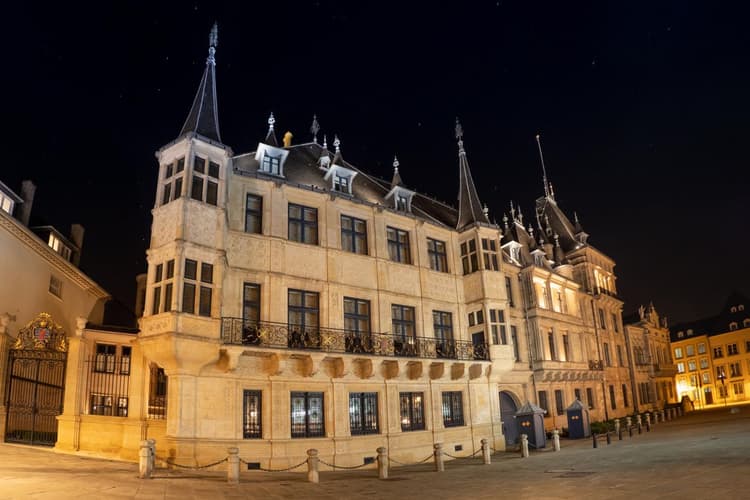
The site of the current palace originally housed the first town hall of the capital, dating back to 1418. After being destroyed by a gunpowder explosion in 1554, it was rebuilt twenty years later.
In the mid-18th century, a Baroque-style extension was added to the right side, serving as a "public weighing house." In 1860, the Chamber of Deputies was constructed to the right of the palace. Since 1890, the main building has served as the Grand Ducal Palace, and from 1992 to 1995, the palace underwent significant restoration work.
In case you are hesitating to go when you see the ticket price, there is a detail that may interest you. Through the sale of tickets, the Luxembourg Tourist Office supports the "Fondation du Grand-Duc et de la Grande-Duchesse", which funds humanitarian programs and social initiatives aiding vulnerable individuals in Luxembourg and developing countries.

Hiking is one of the main attractions in Mullerthal, with the Mullerthal Trail being a highlight. This 112-kilometer trail is divided into three main routes, each offering a diverse range of scenery, from dense forests and rugged rock formations to serene rivers and charming villages. The trail is well-marked and suitable for both novice and experienced hikers.
In addition to hiking, the region is home to several notable attractions. The Schiessentümpel Waterfall, with its iconic stone bridge, is a must-see. The Hohllay Cave, a former millstone quarry, offers a fascinating glimpse into the region's geological history. In addition, cycling enthusiasts can explore the region's extensive network of bike paths.
When visiting this region, you can explore charming wine villages such as Remich, Grevenmacher and Schengen, and be sure to visit the local wineries. Wine tastings and winery tours are popular activities where you can learn about the winemaking process and taste the specialties of the region.
The region also offers opportunities for leisurely walks or bike rides along the river, providing stunning views of the vineyard-covered hillsides and the tranquil Moselle waters.
Today, the abbey is renowned for its annual dancing procession held every Tuesday after Pentecost. This traditional ceremony draws tens of thousands of tourists, hikers, pilgrims, and clergy to Echternach, who come to witness or participate in this unique event.
Adjacent to the abbey, the Abbey Museum offers insights into Echternach's history, showcasing a Roman villa, facsimiles of manuscripts produced in the abbey's scriptorium, the life and worship of Saint Willibrord, and archaeological remains. Echternach Abbey stands as a testament to Luxembourg's religious heritage and cultural significance.

With over 100,000 artifacts, it boasts the largest collection of military objects in the region, organized into thematic rooms. Lifelike dioramas at a 1:1 scale depict realistic scenes of soldiers' lives during wartime. Another section of the museum delves into the history of the Luxembourg Army from the establishment of the Grand Duchy to the present day.

This promenade, often referred to as "the most beautiful balcony in Europe," winds along the old city walls, providing breathtaking vistas of the Lower Town. Lined with charming cafés and historic buildings, it's a must-visit offering a glimpse into Luxembourg's rich architectural and natural beauty.
The Schueberfouer offers an exciting array of attractions, including thrilling rides, games, and numerous food stalls serving traditional Luxembourgish delicacies like Gromperekichelcher (potato pancakes) and Mettwurscht (Luxembourgish sausage).
With its vibrant atmosphere, the fair draws visitors of all ages who come to enjoy the festive spirit, live entertainment, and unique market stalls. It's a special event that combines tradition and modernity, making it a highlight of Luxembourg's cultural calendar and a must-visit for anyone looking to experience the country's local charm and excitement.
Frequently Asked Questions (FAQ)
What transportation options are available for getting around luxembourg, are there any local foods i should try while visiting luxembourg, when is the best time to visit the grand ducal palace.
Source : castle-vianden.lu , www.luxembourg-city.com , www.mnhn.lu , www.luxembourg-city.com , www.visitluxembourg.com , citymuseum.lu , monarchie.lu , www.researchluxembourg.org , luxembourg.public.lu , www.mullerthal-trail.lu , fr.wikipedia.org , www.visitluxembourg.com , fr.wikipedia.org , diekirch.lu , www.mnhm.net , fr.wikipedia.org , www.luxembourg-city.com , www.visitluxembourg.com
We took photos from these sources : castle-vianden.lu, luxembourg-city.com, Ville de Luxembourg, visitluxembourg.com, Unsplash, Wikipedia, monarchie.lu, researchluxembourg.org, mullerthal-trail.lu, moselweine.shop, diekirch.lu, luxembourg-city, John Oesch for Luxtimes

Home » Travel Guides » Luxembourg » 25 Best Things to Do in Luxembourg
25 Best Things to Do in Luxembourg
Luxembourg is one of the smallest countries in the world and spans an area of just 1,650 square kilometers. With a population of 500,000 residents it is more like a large town than a country, but its size actually makes it a great place to visit as many of the main attractions are concentrated in one place. The center of the city is a UNESCO World Heritage Site in its own right and may of the top sights in Luxembourg can be found here.
That’s not to say however that you should spend all your time in the city center, as if you take a quick journey out of town you will find a wealth of delightful towns and villages and much of the scenic countryside can be accessed by train. As well as picture-postcard enclaves you will also find aged fortresses and stunning castles, and it’s easy to visit Luxembourg by hopping across the border from the Netherlands or Belgium.
Here are the 25 best things to do in Luxembourg …
1. Wander around the Old Quarter

The Old Quarter in Luxembourg City is the perfect place to kick off a trip to this delightful country and is also a UNESCO World Heritage Site.
The center would have been surrounded by graceful ancient fortifications that once were known as the Gibraltar of the North although these were destroyed in 1883. Nowadays you will find tree lined cobbled streets as well as lush parks and gardens.
As you wander around you can check out scenic bridges and winding alleyways and the best tip is to see which areas catch your eye and explore them at your leisure.
2. Visit Notre Dame Cathedral

Notre Dame Cathedral was built in the 17th century by Jesuit priests and still stands proud to this day.
One of the signature features here is the north gate which is baroque in style and is covered with pretty stained glass that dates from the 19th and 20th centuries.
As well as traditional structures you will also find modern pieces of sculpture as well as a famous statue of the Madonna and Jesus in miniature form that sits over the altar.
It is also famous for its crypt which contains graves of members of the Luxembourg royal family and which is guarded by two lion statues.
3. Admire the National Museum of History and Art

Despite its small size Luxembourg is known for having a wealth of engaging museums.
One of the best of these however is the National Museum of History and Art which is nestled in the Fish Market part of the old town center.
Here you will find a huge range of items such as tools, coins, weapons, historical documents, and photographs.
Much of the art work is focused on the Gallo-Roman era and tells the story of social and religious life through the ages for those who call Luxembourg home.
If you like modern art won’t be disappointed and it is filled with the works of a range of artists from the 20th century.
4. Stroll around Parc Merveilleux

Parc Merveilleux sits in the town of Bettembourg which is only 6 miles away from Luxembourg City and only 3 miles away from the French border if you want to hop across.
The park is besides an animal parc also an amusement center were you will find arcades, playgrounds, and even a train that runs around the park.
5. Explore the Bock and the City Casements

The Bock Cliff in Luxembourg is known for its cannons and its fortifications and it is here that you can explore Casemates which is a series of underground passages.
These tunnels are an amazing feat of engineering as they stretch for 21 kilometers and are dug out of solid rock cliffs.
They were made with the intention of hiding soldiers as well as providing a place to stockpile horses and equipment.
You can walk through many of the tunnels and at the top of the plateau you will find the crumbling ruins of a former castle which was only discovered as late as 1963.
6. Visit the Echternach Benedictine Abbey

If you visit the town of Echternach then make sure to check out the Benedictine Abbey which dates from the seventh century and has an adjoining museum.
It is made up of four buildings and a central courtyard and the basilica here has a huge amount of religious significance throughout Luxembourg.
One of the reasons for this is that it contains a crypt with the sarcophagus of St.
Willibrord which is made of white marble and the vaults here are covered in colorful frescoes that were painted in the 10th century.
Recommended tour : Luxembourg City: Hop On Hop Off Castles & Nature Day Tour
7. Explore Berdorf

Berdorf is famous for being one of the tourist hot spots of Luxembourg and sits on windblown table lands that back onto valleys containing the Black Ernz, the Sûre, and the Aesbach rivers.
These valleys are covered with footpaths that let you take in the majesty of the landscape of Luxembourg and this area is also home to over 3,000 acres of forest.
If you like rock climbing then the hills here provide the perfect opportunity.
8. Visit the town of Echternach

The quaint town of Echternach sits on the banks of the pretty River Sûre which is also on the border with neighboring Germany.
The town is famous for a few of its festivals such as an international music festival that is run from May to June as well as a dancing procession that has been held here for centuries on Whit Tuesday.
In the town itself you will find old fashioned houses, winding streets, and medieval architecture that hark back to another era.
9. Explore the Palais Grand-Ducal

The Palais Grand-Ducal is the official residence of the Grand Duke and royal family of Luxembourg and is one of the most stunning feats of architecture in Luxembourg City.
It dates from the 16th century and mixes a range of style including romantic touches and medieval and gothic designs.
10. Climb along the Walls of the Corniche

In Luxembourg City you will find the Walls of the Corniche which look over the city down onto a valley.
This is also the spot where the Gate of the Grund is located which was built in 1632 and there are a range of houses and other curiosities in the area such as St.
Michael’s Church and the Abbey of Neumünster which has a famous pipe organ as well as a ‘black virgin’ from the 14th century.
11. Stop by Place Guillaume

Place Guillaume is known for its spacious open areas that used to be the location of a Franciscan convent.
Now the area is fully closed to vehicles and there is a famous statue here of William II on horseback who was the King of Holland and the Grand Duke of Luxembourg.
The area is famous for its Town Hall, and other landmarks to check out nearby include the Spanish Turret and a former cavalry barracks.
12. Enjoy the culture at the Museum of Modern Art

People may think that Luxembourg is full of ancient relics but it also has a range of cutting edge museums like the Museum of Modern Art which is also known as MUDAM. The museum sprawls over 4,500 meters and although it features a unique design it is also built on the walls of the former Fort Thungen that dates from 1732. The range of art here is eclectic including photographs, sculpture, textiles, and even digital media.
The entire museum complex sits in the Parc Drai Eechelen which has an array of sculptural works of art and sweeping vistas over the old town area of Luxembourg.
Included in : Combi-Ticket Sightseeing Train & 7 Museums Entry
13. Travel to the town of Vianden

The town of Vianden is one of the most scenic in all of Luxembourg and nestles close to the banks of the Rover Our.
It is blessed with a pretty feudal manor that was built in the ninth century and the town is surrounded by a medieval outer wall which is studded with guard towers.
The town is also famous for being the spot where Victor Hugo lived when he was in exile and his former home is now open to the public and has a range of memorabilia for this period.
If you like hiking or rambling then there are a range of trails that branch out from Vianden into the Our Valley.
If you want something more relaxing then there is also a chairlift here that rises to 440 meters and gives you the most amazing views over the countryside.
Included in : Luxembourg City: Hop On Hop Off Castles & Nature Day Tour
14. Explore Bourscheid Castle

The village of Bourscheid is located on a plateau that has two rivers running past it in the form of the Wark and the Süre.
The village has a range of outdoor activities like hiking trails and other pursuits, but the real draw here is the Bourscheid Castle which dominates the village from a peak of 137 meters.
It was originally built in the 10th century and has been lovingly preserved and you can either take a guided tour to learn more about the history or enjoy one of the audio tours.
If you time your visit here in the evening oyu will be able to enjoy the castle when it is fully illuminated which is incredibly beautiful when viewed from the village.
15. Have a spa at Mondorf-les-Bains

Located in the Moselle region of Luxembourg is Mondorf-les-Bains which is home to the some of the best thermal springs in all of Europe.
One of the most famous of these is Mondorf le Domaine Thermal which is a spa complex and has a heath center, gym, and adjoining hotel.
The spa is serviced with spring water from underground pumps that is 24 degrees Celsius and is known for its healing properties that are said to cure a range of diseases.
Certainly if you are looking for a relaxing experience in Luxembourg then this is well worth the trip.
16. Enjoy Walferdange and its castle

Walferdange Castle used to be the residence of the Grand Ducal until the end of the 19th century and sits close to Grunewald Wood.
The village itself is part of one of the major visitor trails in Luxembourg and is near to the Alzette Valley which is known for lush woodlands and stunning views.
As if that wasn’t enough the village is also famous for its flowers, and in particular its heady roses.
If you like archaeology then you have also come to the right place as there is a Roman villa here complete with an aqueduct that goes deep underground.
17. Take to the Upper-Sûre Lake

Close to Esch-sur-Sûre in the Upper-Sûre Natural Park which is also home to the famous lake.
The lake is known as one of the top leisure spots in Luxembourg and people flock here for the water sports in the warmer months such as swimming, canoeing, and sailing.
Depending on how adventurous you want to be you can also try diving or windsurfing here and there is a special solar boat that will take you out on the water.
18. Take in a concert at the Philharmonic of Luxembourg

Luxembourg may be small but the Philharmonic of Luxembourg is known for being one of the premium concert venues in Europe.
It is the home of the Orchestre Philharmonique du Luxembourg and guests play here from all over the world including a range of famous conductors and orchestras.
The building is known for its powerful acoustics and you can come here to take in a local concert that showcases the best musical talent in Luxembourg.
19. Admire Beaufort Castle

Beaufort is located on a plateau in the Mullerthal region of Luxembourg and has a castle that dates from the 12th century.
Much of the castle is now in disrepair and it is not as well preserved as many in the region, but it makes a great stop off for a more rustic experience and there are a range of footpaths close to the castle that take you through woodlands and stunning rock formations.
20. Take in the views from Passerelle Viaduc

Passerelle Viaduc is one of the most historically significant bridges in Luxembourg and was completed in 1861. Built by a British company called the Waring Brothers, the viaduct linked to the center of the city although despite how cutting edge it would have been at the time it is now known as Old Bridge.
One of the main reasons to come here is to take in the stunning views that spread out over Luxembourg City.
21. Take in the nature at Biodiversum – Nature Reserve Haff Reimech

The Haff Reimech Nature Reserve is located at the base of the Schengen and Remich wine slopes and is the place to come if you want to check out a range of flora and fauna in Luxembourg.
The Biodiversum is on an artificial island and you can explore a well preserved nature reserve as well as an underwater world exhibit with a range of galleries and informational material.
The emphasis here is on teaching visitors about sustainability and caring for the environment.
22. Visit Minett Park

Located in Fond-de-Gras is Minett Park which used to be an important center of industry.
One of the great delights of the area is that you can get here using Train 1900 which is a traditional steam locomotive that will take you up to Fond-de-Gras.
Here you will find a kind of open air museum and there is a walking tour that you can take around the various buildings on show, many of which are made from wood.
Some of the highlights include a period grocery shop as well as the Paul Wurt electric power station.
23. Enjoy Larochette

Larochette is a pretty market town which sits in a craggy valley that is encircled by picturesque woodlands.
The town is also famous for having not one but two castles that sit on the White Ernz above the valley.
Other signature features here include a medieval square as well as an interesting Museum of Industry and a church decorated in the Neo-Roman style that has a range of unusual Art Nouveau frescoes.
24. Make your way to Wiltz

Wiltz is made up of two parts, namely the upper and lower town.
He has a range of attractions such as the Battle of the Bulge Museum which you will find inside Wiltz Castle.
It also has an exciting music festival in the summer months and an open air theater where you can enjoy concerts under the stars.
25. Explore the Valley of the Seven Castles

In the Guttland region of Luxembourg is the so called Valley of the Seven Castles which unfolds over 24 kilometers.
One of the joys here is to go back in time to the mediaeval period and hop your way along the trail here moving from one castle to another.
These include Mersch, Schoenfels, Koerich, Hollenfels, Septfontaines and the two castles in Asembourg.
25 Best Things to Do in Luxembourg:
- Wander around the Old Quarter
- Visit Notre Dame Cathedral
- Admire the National Museum of History and Art
- Stroll around Parc Merveilleux
- Explore the Bock and the City Casements
- Visit the Echternach Benedictine Abbey
- Explore Berdorf
- Visit the town of Echternach
- Explore the Palais Grand-Ducal
- Climb along the Walls of the Corniche
- Stop by Place Guillaume
- Enjoy the culture at the Museum of Modern Art
- Travel to the town of Vianden
- Explore Bourscheid Castle
- Have a spa at Mondorf-les-Bains
- Enjoy Walferdange and its castle
- Take to the Upper-Sûre Lake
- Take in a concert at the Philharmonic of Luxembourg
- Admire Beaufort Castle
- Take in the views from Passerelle Viaduc
- Take in the nature at Biodiversum - Nature Reserve Haff Reimech
- Visit Minett Park
- Enjoy Larochette
- Make your way to Wiltz
- Explore the Valley of the Seven Castles
🙌 Awesome, you're subscribed!
Thanks for subscribing! Look out for your first newsletter in your inbox soon!
Get us in your inbox
Sign up to our newsletter for the latest and greatest from your city and beyond
By entering your email address you agree to our Terms of Use and Privacy Policy and consent to receive emails from Time Out about news, events, offers and partner promotions.
Awesome, you're subscribed!
The best things in life are free.
Sign up for our email to enjoy your city without spending a thing (as well as some options when you’re feeling flush).
Déjà vu! We already have this email. Try another?
Love the mag?
Our newsletter hand-delivers the best bits to your inbox. Sign up to unlock our digital magazines and also receive the latest news, events, offers and partner promotions.
- Los Angeles

The 13 best things to do in Luxembourg
From iron mines to old fortresses, this small country has many activities. Here are the best things to do in Luxembourg.
Hidden away between Germany , France and Belgium , the variety of fun things to do in Luxembourg is often overlooked. But despite its size, the country is awash with tourist attractions and hidden gems. The core of Luxembourg-City is built on a medieval, Unesco-listed fortress and stretches over magnificent green valleys and quaint cobblestone streets that prove that the country has more to offer than bank headquarters. Because of its central location, finance industry and EU-institutions, Luxembourg is an extremely multicultural place and you will hear all kinds of languages while roaming the city. By car, most of the country is easily accessible within an hour from the city. But for a place this small, Luxembourg’s landscape is extremely diverse: from the picturesque nature in the north, to the industrial South and the vineyards of the Moselle.
Done something on this list and loved it? Share it with the hashtag #TimeOutDoList and tag @TimeOutEverywhere.
Find out more about how Time Out selects the very best things to do all over the world .
Been there, done that? Think again, my friend.
Best things to do in Luxembourg
1. kirchberg.

What is it? The business district of Luxembourg-City, home to the country’s EU institutions and stunning architecture.
Why go? The Kirchberg area symbolises the changes Luxembourg underwent over the past decades: from a mostly agricultural and industrial country to one of Europe’s finance hubs. Walk across the infamous ‘red bridge’ that connects the old town and Kirchberg and marvel at some of the most spectacular architecture the country has on offer. Head to the Philharmonie and the adjacent Museum of Modern Art (MUDAM) and enjoy the spectacular panoramic view across the city and its valleys from the Dräi Eechelen plateau.
2. Namur

What is it? The place to go for arguably the best croissants and tartlettes north of Paris.
Why go? Luxembourgers are strongly divided over which pâtisserie has the finest selection of pastries. Both Namur and Oberweis are national institutions and will delight every sweet tooth. The Opéra and Mont Blanc are divine. The coffee, however, is not. Head to the Knopes Coffee for your daily dose of caffeine.
3. Moselle Valley

What is it? Stunning vineyards and a lot of wine tasting – only a 20-minute drive from the city.
Why go? Luxembourgers love their wine so much they even reference it in their national anthem. The Moselle River is Luxembourg’s wine country and one of its most scenic nature spots. Tourists flock here in the summer and enjoy a glass of Riesling or the local Elbling on riverbank terraces or the many wine cellars along the Moselle.
4. Café des Artistes

What is it? A legendary bar that puts on regular sing-alongs and folk nights.
Why go? If you want to grab a drink at night, visit the picturesque Grund area and step into this cosy and poster-plastered bar. At late hours, the candlelit piano becomes the gathering point for everybody who wants to join in singing along to French chanson and traditional Luxembourgish folk songs.
5. Rotondes

What is it? Luxembourg’s cultural hub in a unique location.
Why go? The Rotondes were built as a storage facility for steam locomotives but are now housing some of the finest cultural events in the country. From record fairs, art exhibitions to theatre and indie concerts, this place will satisfy each quirky desire.
6. Family of Man

What is it? World-renowned photography exhibition in one of the country’s many castles.
Why go? The Luxembourgish artist and curator Edward Steichen immigrated to the US as a little boy and later became the Director of the MoMA’s Department of Photography. His exhibition ‘The Family of Man’ is still one of the most iconic collections of photography and after travelling the world it is now on permanent display in the castle of Clervaux in the north of the country.
7. Pfaffenthal Elevator

What is it? For those who are not afraid of heights, this transparent outdoor elevator offers a panoramic view across the old fortress.
Why go? Opened in 2016, this elevator connecting the city centre with the Pfaffenthal valley has become a favourite among locals and visitors. The all-glass construction is perfect for admiring the sweeping valleys of the city. It’s also one of the few attractions that are free.
8. Fond de Gras

What is it? A glimpse into Luxembourg’s industrial past. Ride a historical mining train and go underground in the country’s south.
Why go? Before Luxembourg became Europe’s banking hub, iron ore mining was the country’s main economy. The south of Luxembourg is still called ‘Minette’ (ore) and is famous for its blast furnaces and red rock landscapes. The Fonds de Gras used to be a mining valley and now hosts an underground mining museum and an authentic steam train.
9. Bei de Bouwen

What is it? Let your taste buds discover the real Luxembourg in this local restaurant.
Why go? If it is your first visit to the Grand-Duchy, chances are, you don’t know too much about Luxembourgish cuisine. Bei de Bowen (At the boys) is the perfect place to start discovering. Although dishes tend to be very meaty, the boys are happy to cater to vegetarians. The kniddelen (gnocchi-like dumplings) and gromperekichelcher (fried potato cakes) are a must-try!
10. Mullerthal

What is it? Hike through Luxembourg’s ‘Little Switzerland’.
Why go? Luxembourg is blessed with picturesque natural landscapes but the 112km-large Mullerthal valley stands out in particular. Because of its hills, the region is often compared to the Swiss Alps. Echternach, Luxembourg’s oldest city and home to a stunning historical Abbey, is only a short drive away and well worth a visit. Mullerthal is located around 40 minutes from the city of Luxembourg.
11. Cinémathèque

What is it? See classics and contemporary masterpieces in this old-school cinema.
Why go? Rita Hayworth and Humphrey Bogart smile from the walls of this beautiful movie house. Lean back in the comfortable red velvet seats and enjoy an unforgettable cinema experience. The programme caters to arthouse taste and includes everything from black and white Hollywood classics to contemporary Eastern European cinema. Movies are shown in their original language with subtitles and cost only €3.70 – a bargain in an otherwise expensive city.
12. The Wenzelwee

What is it? This pedestrian trail across the old fortress is the easiest way to explore the city.
Why go? Luxembourg-City is small so it’s important to not rush through it but to stroll along the narrow cobbled streets of the old town to enjoy the stunning views. In the sixteenth century, the city was one of Europe’s strongest fortresses (‘Gibraltar of the North’). The Wenzwelwee stretches from the city centre to the remains of the fortifications and down to the cosy Grund and Clausen neighbourhoods.
13. Bistrot de la Presse

What is it? Traditional café that gives visitors a good glimpse into Luxembourgish mannerisms.
Why go? Located right in front of the Parliament building, this café and restaurant is the perfect spot to observe Luxembourgers arguing about politics and football, while enjoying a cold pint. The décor hasn’t changed a bit over the last decades and is basically a shrine of dedication to Luxembourg’s royal family whose faces adorn the nicotine-stained walls. The food is, of course, also typically Luxembourgish and includes many of the national dishes.
[image] [title]
Discover Time Out original video
- Press office
- Investor relations
- Work for Time Out
- Editorial guidelines
- Privacy notice
- Do not sell my information
- Cookie policy
- Accessibility statement
- Terms of use
- Modern slavery statement
- Manage cookies
- Advertising
- Time Out Market
Must-see attractions in Luxembourg
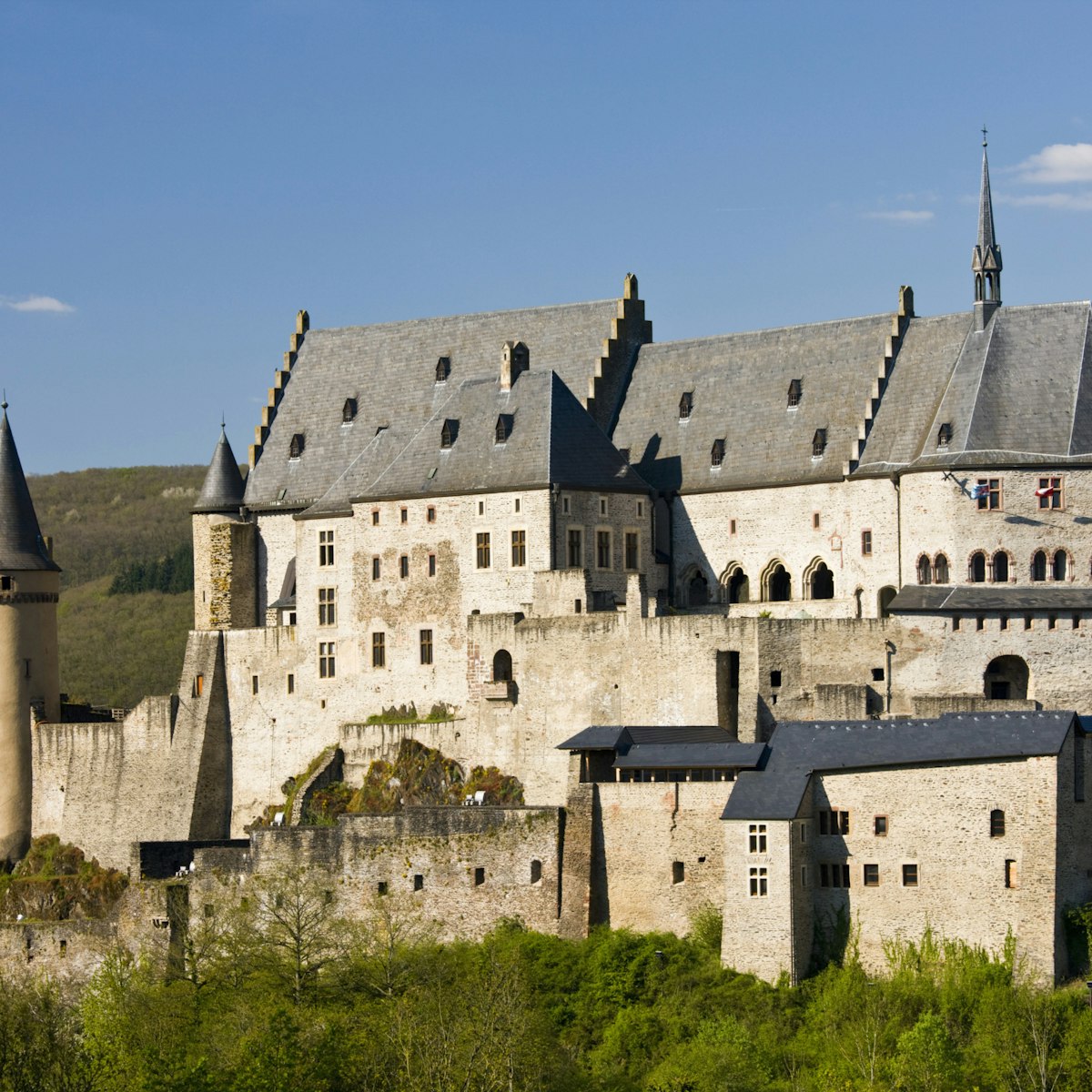
Château de Vianden
This château's extraordinary outline is the result of an almost-total 20th-century restoration after the original, built from the 11th to 14th centuries,…
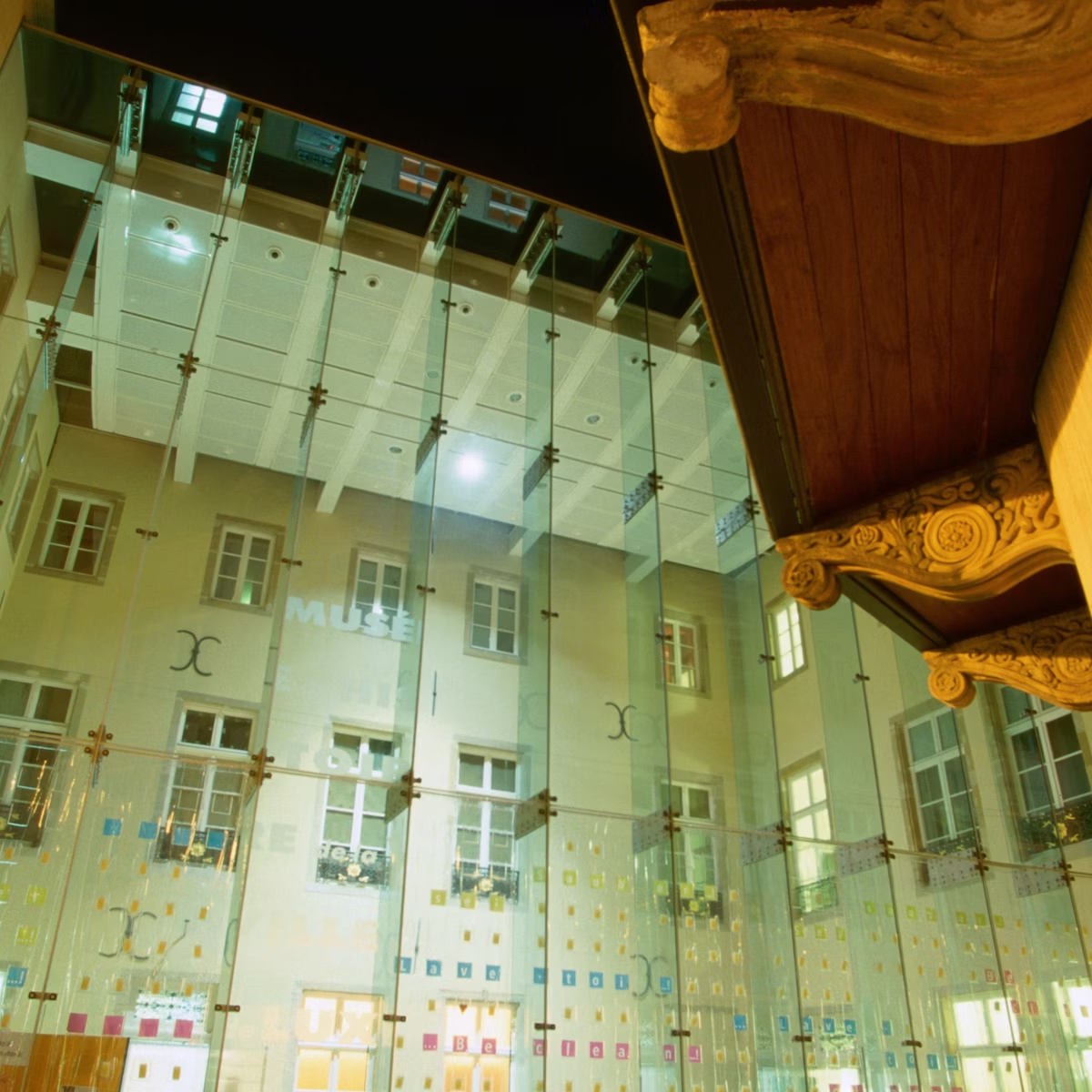
Musée d'Histoire de la Ville de Luxembourg
Luxembourg City
Hidden within a series of 17th- to 19th-century houses, including a former ‘holiday home’ of the Bishop of Orval, the city's history museum is engrossing…

Bock Casemates
Beneath the Montée de Clausen, the clifftop site of Count Sigefroi’s once-mighty fort, the Bock Casemates are an atmospheric honeycomb of rock galleries…
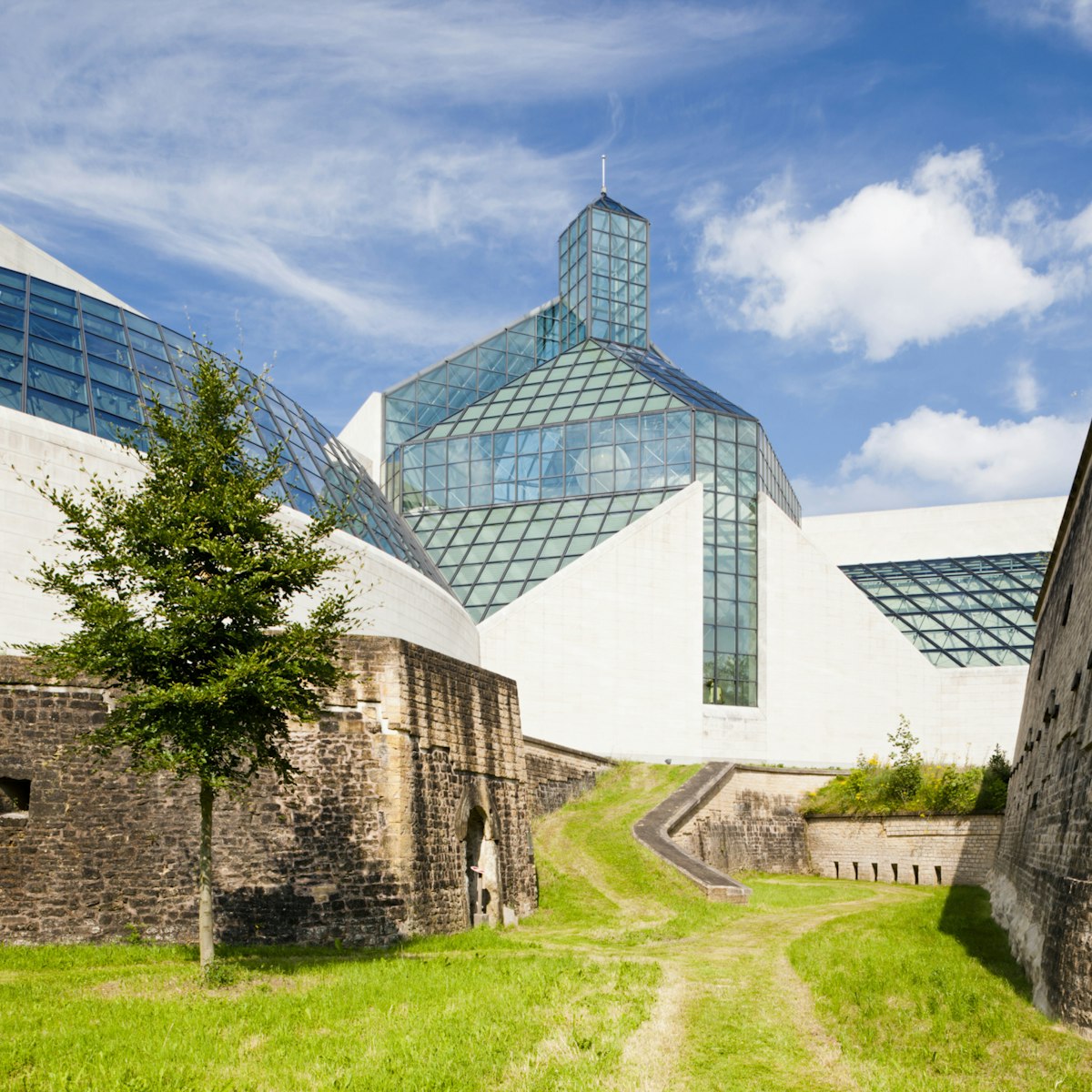
Groundbreaking exhibitions of modern, installation and experiential art take place in this airy architectural icon designed by Pritzker-winning architect…

Chemin de la Corniche
Hailed as 'Europe's most beautiful balcony', this pedestrian promenade winds along the course of the 17th-century city ramparts with views across the…

Château de Clervaux
The standout attraction at Clervaux' reconstructed 12th-century castle is Edward Steichen's Unesco World Heritage-listed photography exhibition Family of…
Beaufort Castles
Beaufort's two castles sit across a wooded valley on the town's western edge. Built from sandstone on the site of a Roman camp, the five-storey medieval…
Ramborn Cider Company
Over 100 varieties of apples and pears are used by Ramborn to make its unique ciders and perries, found at cafes, bars and restaurants throughout…
Abbaye d'Echternach
Just north of the basilica, 19th-century Benedictine abbey buildings spread towards the tree-lined banks of the Sûre. Most of the complex is now a school…
Château de Wiltz
Wiltz's castle was originally built in the 13th century but destroyed several times; the present château was constructed between 1631 and 1720 in the…
Valentiny Foundation
World-renowned Remich-born architect François Valentiny built this extraordinary Arctic-white building with lattice-like cut-out windows in 2016 as an…
Château de Bourscheid
This splendid castle ruin is Luxembourg's largest and most dramatic. Occupying the site of a former Roman watchtower, its construction began around 1000…
Le Centre Nature et Forêt Biodiversum
Built in natural timbers by star Luxembourg architect François Valentiny, this truncated pyramid-shaped nature centre features interactive exhibitions on…

Palais Grand-Ducal
Luxembourg's turreted palace was built in 1572 and has been greatly extended over the years. It now houses the Grand Duke’s office, with parliament using…

Abbaye de Neumünster
Dominating the Grund riverbank, this 17th-century Benedictine abbey has been transformed into a cultural centre. Around the cloister are bronze sculptures…
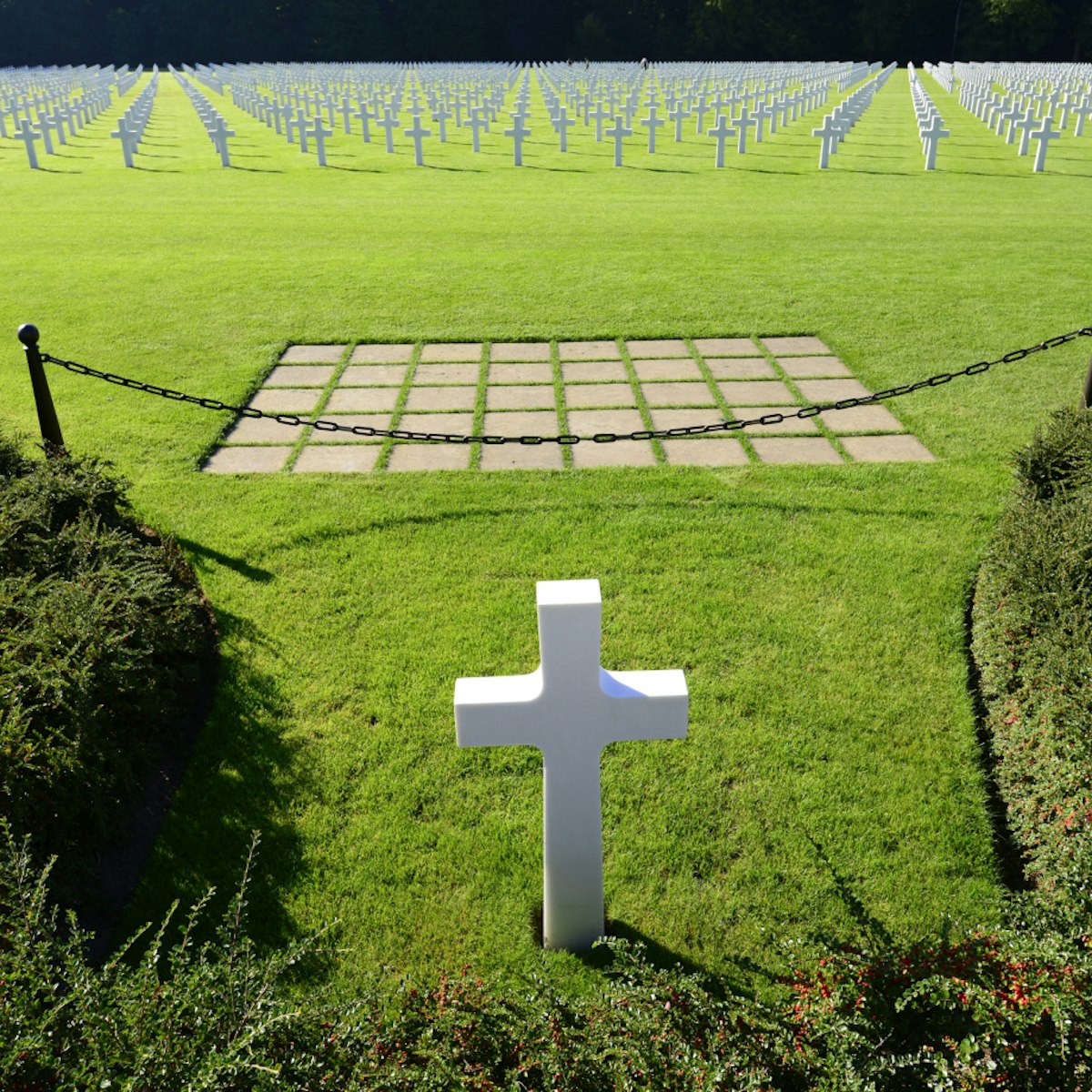
US Military Cemetery
In a beautifully maintained graveyard 6km east of the city near the airport, lie 5075 US WWII war dead, including the general of the US Third Army George…

Startlingly modern for its Old Town setting, the national art and history museum starts deep in an excavated rocky basement with exhibits of Neolithic…
Grand-Rue’s most attractive section is around Place Victor Abens, where the town hall straddles a small spring. The Église des Trinitaires church was…
St-Willibrord Basilica
St-Willibrord Basilica is part of the Abbaye d'Echternach complex. First raised around AD 700, it was rebuilt in 1862 but bombed to rubble during WWII,…
L'Abbaye St-Maurice
Dating from 1909, this Benedictine abbey was built in a neo-Romanesque style using stone extracted on site, which contrasts with the terracotta roof tiles…
General Patton Museum
In an unlikely residential street, the General Patton Museum spans 600 sq metres. Rooms cover aviation (where displays include fallen chunks of WWII…
Château de Larochette
Towering above the village, Larochette's castle is accessed from the centre by steep paths or by a longer, gentler 2km road (start off towards Mersch then…
Château de Koerich
Elements of Romanesque, Gothic, Renaissance and Baroque styles can all be seen at this castle at the Eisch Valley's western end. Originally built in the…
Musée Littéraire Victor Hugo
Across a stone bridge from Grand-Rue is a replica Rodin bust of French writer Victor Hugo. In 1871 Hugo stayed for three months in the house facing this…
Villa Romaine
Excavated during the creation of the reservoir lake, today a popular boating and recreation area, this Roman villa has sparse, over-neatened remains but…
Musée d’Histoire de la Ville de Vianden
Vianden's local history museum is formed from two houses knocked together. One maintains its full 19th-century decor; the other partly retains equipment…
Musée-Mémorial de la Déportation
Prior to WWII, Luxembourg had a Jewish community of approximately 3500 people. Of them, some 2500 fled, most to France, before emigration was halted in…
Cathédrale Notre-Dame
Built between 1613 and 1621, and enlarged between 1935 and 1938, Luxembourg's cathedral is most memorable for its distinctively elongated black spires,…
Duch vum Séi
A former cloth factory in operation until 1975 is now a museum whose displays include an impressive collection of old textile looms. Some still produce…
Deep beneath the Spuerkeess bank is a permanent exhibition on photographer Edward Steichen, who put together Clervaux’ Unesco-listed Family of Man…
Château d'Esch-sur-Sûre
Reached from the village by a small flight of steps, the stone ruins of Esch-sur-Sûre's castle are free to explore, and provide swooping valley views of…
Musée de la Banque
Where better than the financial hub of Luxembourg to spend an hour browsing through a bank museum? It's housed in the dramatic, century-old, castle-style…
Musée National d'Histoire Militaire
Set in a former brewery in the town centre, Luxembourg's national military history museum is packed full of WWII equipment, vehicles and memorabilia…
Fort Thüngen
A 1730 twin-towered extension of the plateau's vast complex of Vauban fortifications, Fort Thüngen has an intruiging museum about Luxembourg's historic…
Église Décanale
Constructed between 1910 and 1912 from local stone in a Roman-Rhine style, this hilltop church is dedicated to Saints Cosmas and Damian, two Arab…
Casino Luxembourg
Hungarian composer-virtuoso Franz Liszt gave his last concert at this grand one-time society mansion. Today, the building hosts regularly changing…
Originally installed on Place de la Constitution in 1923 by Luxembourg sculptor Claus Cito, this 21m-high grantie obelisk topped by a wreath-bearing…
Conservatoire National de Véhicules Historiques
The construction and technology of vehicles from the 19th century to the 1970s is covered at this car museum located in a former car-manufacturing plant…
Grand Château d'Ansembourg & Gardens
Built between 1639 and 1647, the grand château at Ansembourg is closed to the public except for a handful of guided tours per year; check the website for…
The most distinctive building on Echternach's delightful town square is this stone-fronted former law court. Its origins date back to the 14th century,…
More destinations you need to see


The 25 Best Things to Do in Luxembourg
- Pinterest 95
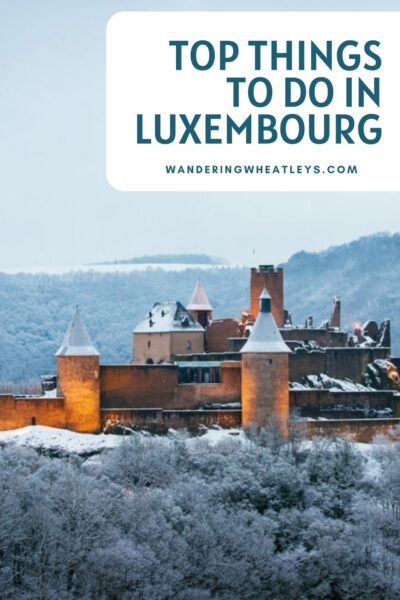
Petite Luxembourg sits at the crossroads of Western Europe, where the cultures, histories, and cuisines of Germany , France , and Belgium intersect and merge into one. Luxembourg is one of Europe’s most exciting destinations, but this small nation remains largely unknown in the shadow of its larger neighbors.
Start your journey in Luxembourg City, which is not only the nation’s capital but is often considered to be the capital of the European Union. Visit the Grand Ducal Palace, explore the Casemates du Bock, and visit the National Museum of History and Art.
To the east of Luxembourg City, you can tour through the vineyards of the Moselle Valley. To the south, the spa town of Mondorf-Les-Bains awaits you, while to the west, there’s the Valley of the Seven Castles, and to the north, the history-filled forests of the Ardennes!
With so many exciting things to see and do, you might not know where to start. To help you out, we’ve decided to compile our list of the absolute best things to do in Luxembourg for you. Give these fun and unique Luxembourg bucket list recommendations a try, and there’s no doubt you’ll have an amazing time exploring this gorgeous part of Europe!
Don’t forget to check out our web story: The 25 Best Things to Do in Luxembourg
Disclaimer: This post may contain affiliate links. If you make a purchase or booking through one of our links we may earn a small commission (don’t worry, it’s at no extra cost to you).
25 Fun and Unique Things to do in Luxembourg
1. stroll along the ‘most beautiful balcony of europe’.
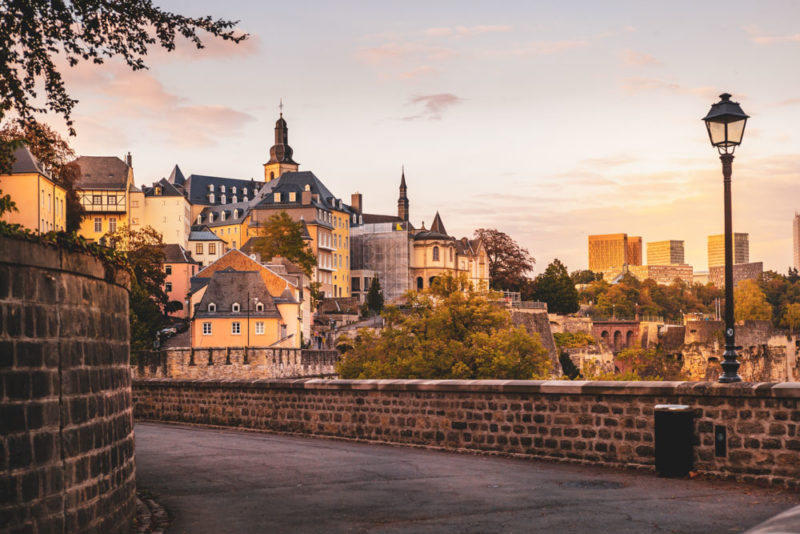
A stroll along Le Chemin de la Corniche is one of the best things to do in all of Europe. This wonderful walkway is short but dramatic, and in centuries past it, captured the imaginations of writers so much that it was named the “most beautiful balcony of Europe.”
Le Chemin de la Corniche is elevated well above Luxembourg City, and the walkway is a pedestrianized route that follows the walls of the fortress that looms over the capital. The walls and ramparts were built by the Spanish and French in the 17th century before being mostly demolished in the 19th century when Luxembourg became a neutral country.
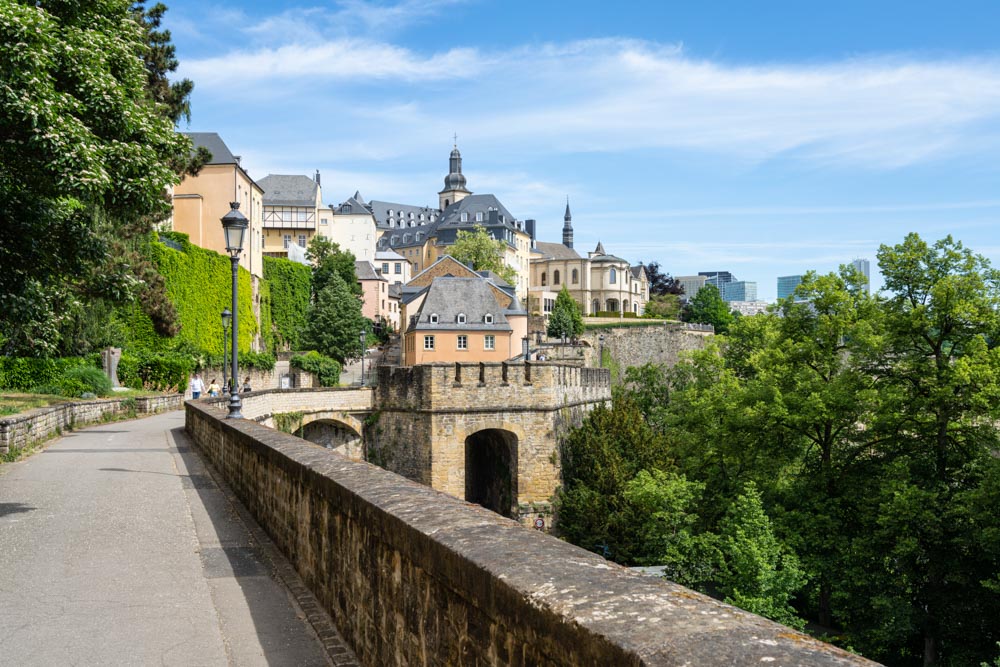
You’ll see the remains of these walls and ramparts as you walk Le Chemin de la Corniche, and you’ll also have sweeping views of the Alzette Valley and the Alzette River, which are waiting below.
The river is lined with trees and townhouses, offering a visual mix of the urban and nature as you take in the fresh air. The route is no longer than 600 or so meters in total length, but take a stroll and see if you also believe this to be the most “beautiful balcony of Europe.” We think you’ll agree that it is!
2. Explore the underground passageways of the Casemates du Bock
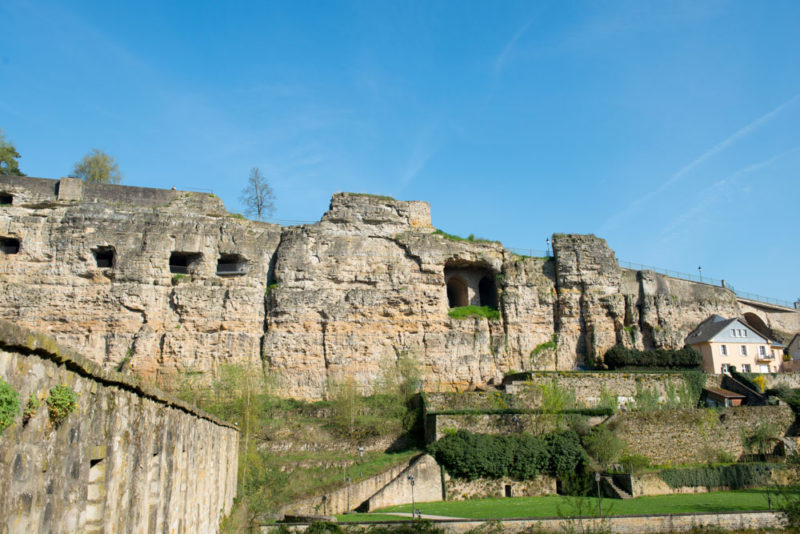
Luxembourg City grew in the protected shadow of The Bock, a large, rocky outcrop that still dominates the Ville Haute (the Old Town) in Luxembourg City to this day. The Bock is a natural defensive position, so in the year 963 AD, Count Siegfried built the first castle and, in the process, laid the foundations for Luxembourg City.
Over many centuries, The Bock was transformed into a super fortress, although that never stopped it from being besieged and destroyed on countless occasions during Europe’s endless wars. In 1867, after yet another brutal European conflict, it was decided that the Fortress of Luxembourg should simply be destroyed and that Luxembourg would become a neutral nation at the crossroads of Western Europe.
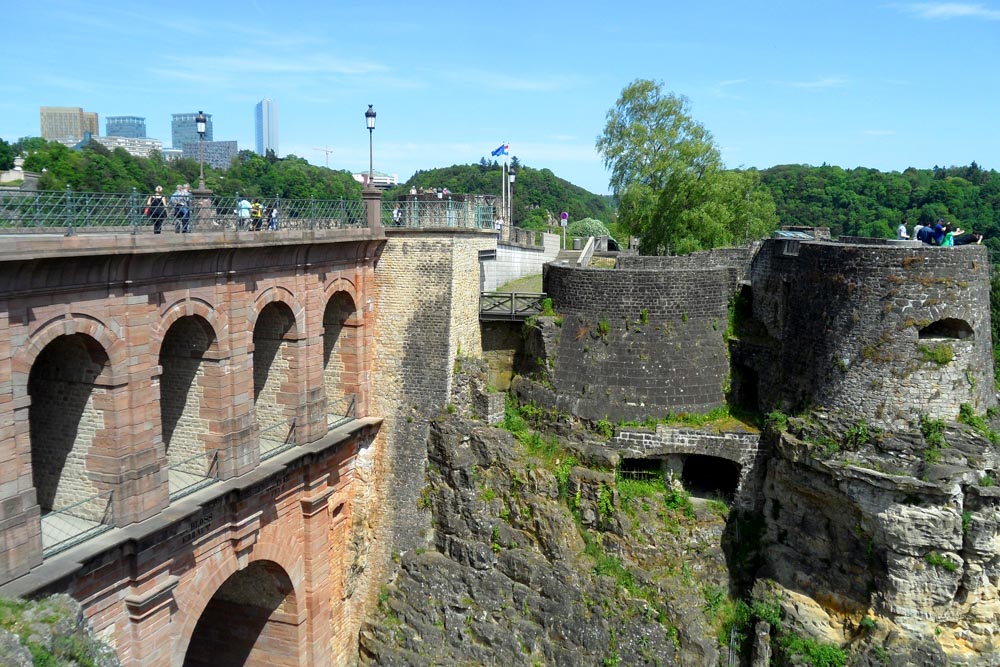
This was the foundation of the modern nation, and the vast ramparts and towers that had dominated The Bock were demolished. But not everything was destroyed. Centuries of warfare had left The Bock with a mammoth network of underground passageways, lookouts, and casemates, which you can still visit on your tour of Luxembourg.
The Casemates du Bock are open to the public, and a tour of these hidden vaults and passageways is one of the top things to do in Luxembourg City. You start at the top of The Bock, where you’ll stand on the ruins of the fortress before descending down into the rock itself through the labyrinth of tunnels below. You’ll emerge at points into bright sunlight, where you’ll be treated to supreme views over the Alzette Valley and the Ville Haute.
Book a Luxembourg City E-Bike Tour
3. Join a walking tour of Luxembourg City
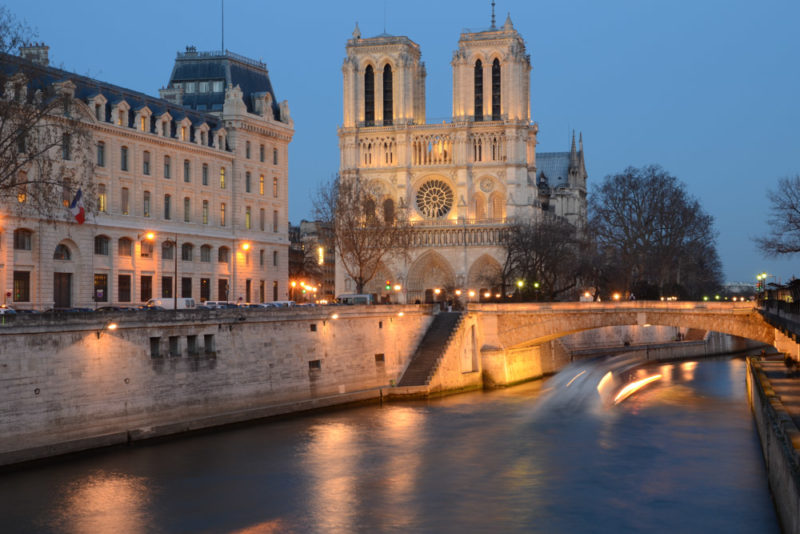
We love walking tours, and with its cobblestone streets, narrow lanes, and beautiful public squares, we think this is the best way to explore Luxembourg City!
Luxembourg City’s Old Town is perfect for walking, and you’ll love hearing about the city’s history as you’re guided through the heritage-laden streets. There are several walking tours you could choose from, but one of our favorites is the Free Walking Tour. You don’t pay anything upfront, but if you’ve enjoyed the tour, you simply pay what you feel at the end of it.
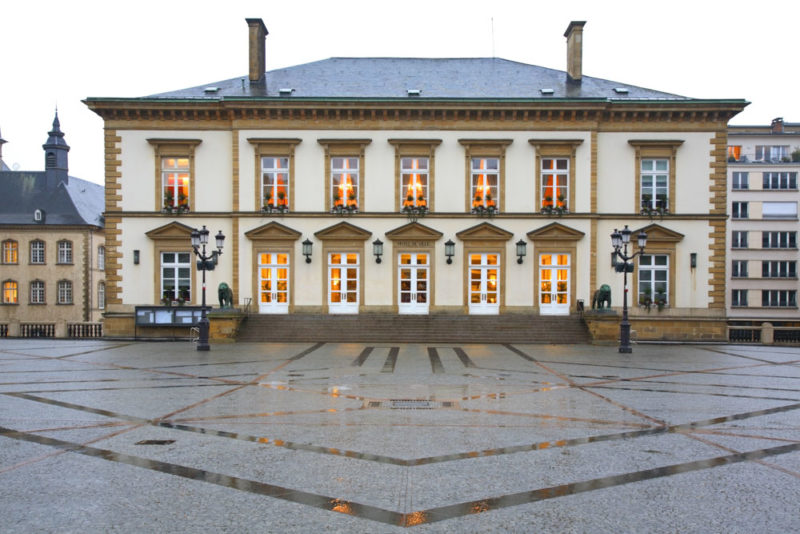
This tour departs daily at 11 am, starting by Jan Palach Square, which you’ll find opposite the Town Hall in the center of the Old Town. You’ll have a comprehensive tour of the city, including sights like the Grand Ducal Palace, Casemates du Bock, and Notre Dame Cathedral.
Book a Walking Tour with Wine Tastings
4. Enjoy panoramic views from the Pfaffenthal Panoramic Elevator
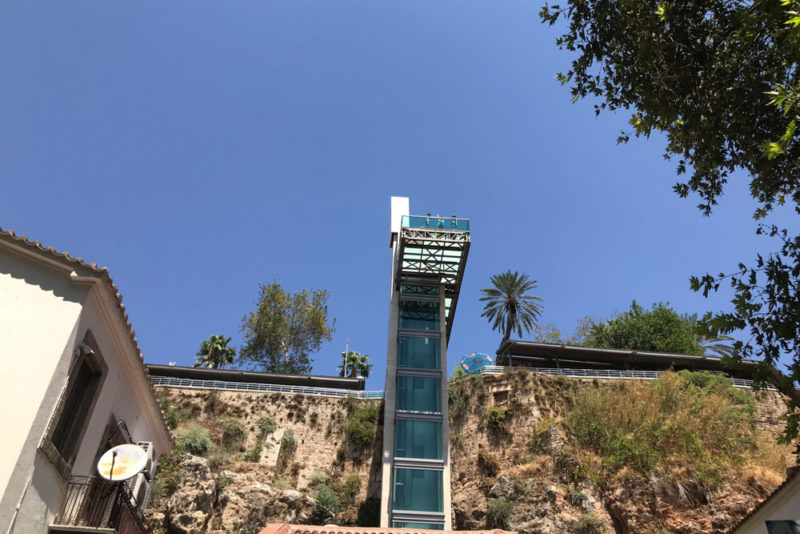
Luxembourg City is best described as a city of many levels, and you’ll find that the Ville Haute and tourist sites such as The Bock are located above much of the city’s surrounding suburbs in the lower reaches of the Alzette Valley.
The city has built an array of public elevators and funiculars to help you travel from one level to the next with ease. One of the latest additions to this elevated transport network is the Pfaffenthal Panoramic Elevator , which opened in 2016. The Pfaffenthal Panoramic Elevator offers wonderful views from its glass windows as you rise or fall above the valley, reaching a top height of 60 meters during the journey.
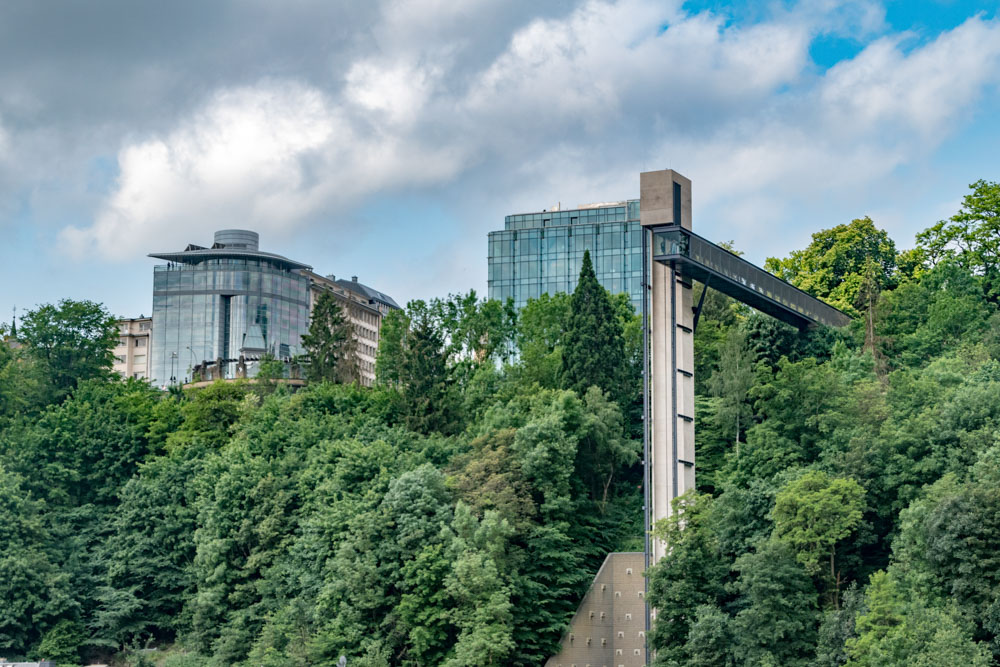
In any other city in the world, this beautiful panoramic elevator with its gorgeous views of the Alzette Valley would be an expensive tourist attraction. Not here in Luxembourg, though, where it’s used daily by commuters and tourists alike to travel up and down from the Ville Haute on the cheap.
Book a Hop-On Hop-Off City Bus Tour
5. Marvel at the Grand Ducal Palace
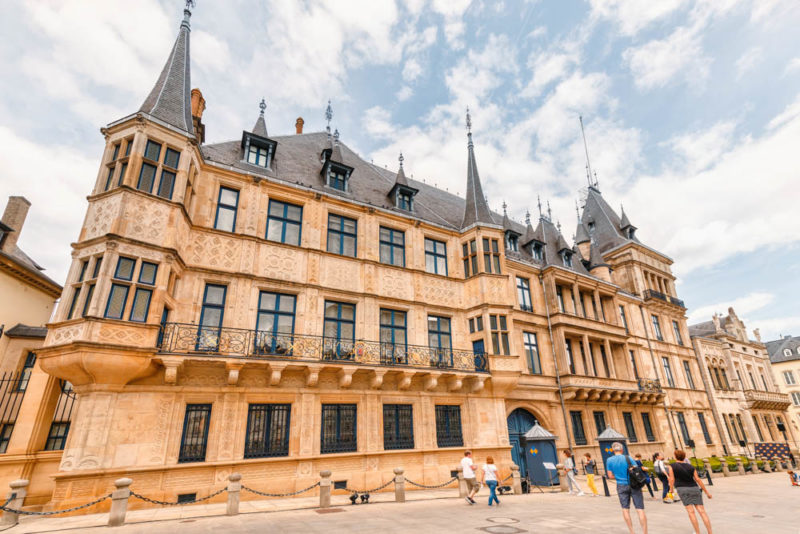
One of the most famous Luxembourg sightseeing attractions is the Grand Ducal Palace, a magnificent royal residence in the heart of Luxembourg City.
If you’ve done your pre-trip research, then you might know that officially, Luxembourg’s name is the “Grand Duchy of Luxembourg.” That is because the country is theoretically ruled over by a Grand Duke, who is the head of state and a hereditary monarch. The current Grand Duke of Luxembourg is simply known as Henri, and his place of residence alongside the Grand Duchess Maria Teresa is the Grand Ducal Palace.
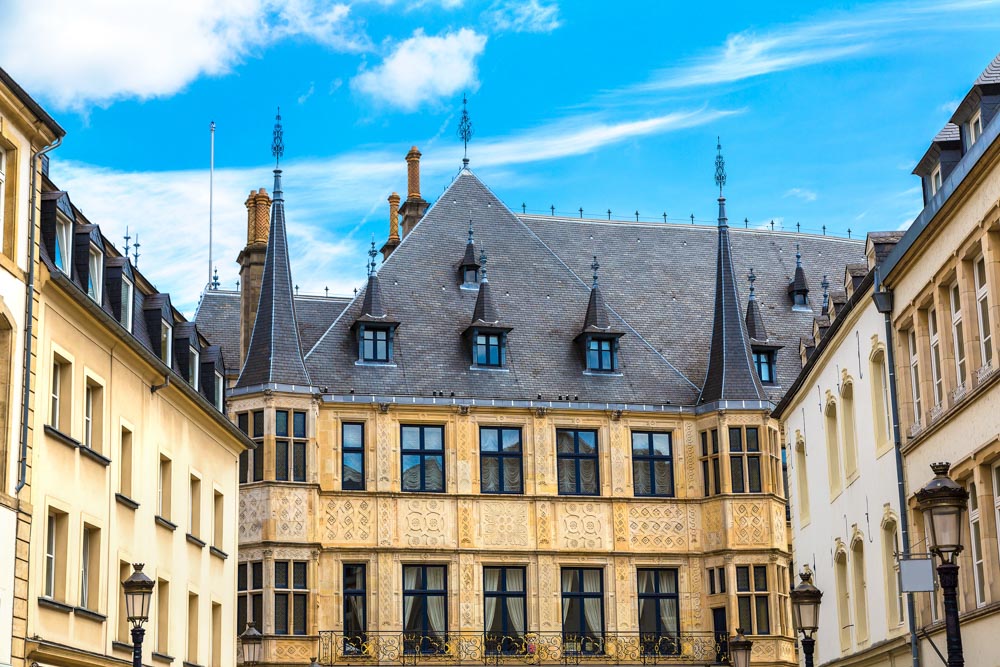
The pomp and pageant are very real, and while you can’t go inside the Grand Ducal Palace (this is where Luxembourg’s royalty live and work, after all), you can marvel at the impressive residence from the outside.
The building dates back to the 16th century when it was originally built to serve as the Town Hall. It later served as the government’s office, and then in 1890, it was refurbished to become the royal palace. Outside the Grand Ducal Palace, you’ll spot the military standing guard. Despite their ceremonial uniforms, they are all active, serving members of the Luxembourg Military, of which there are only 900 soldiers in the entire country!
6. Visit Luxembourg’s Notre Dame Cathedral
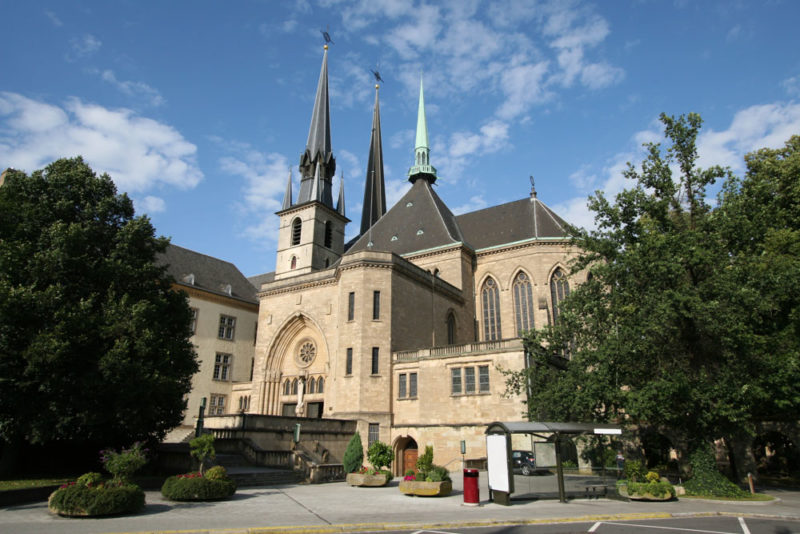
You don’t need to travel to Paris to see Notre Dame, because Luxembourg also has its very own Notre Dame Cathedral to visit!
This grand place of Christian worship is located in Luxembourg City’s Old Town, where it’s held a position of importance since construction began in 1613. Notre Dame Cathedral is today dedicated to Catholicism, but it was founded in the 17th century by Jesuit monks from Spain who wanted to establish a college and church.
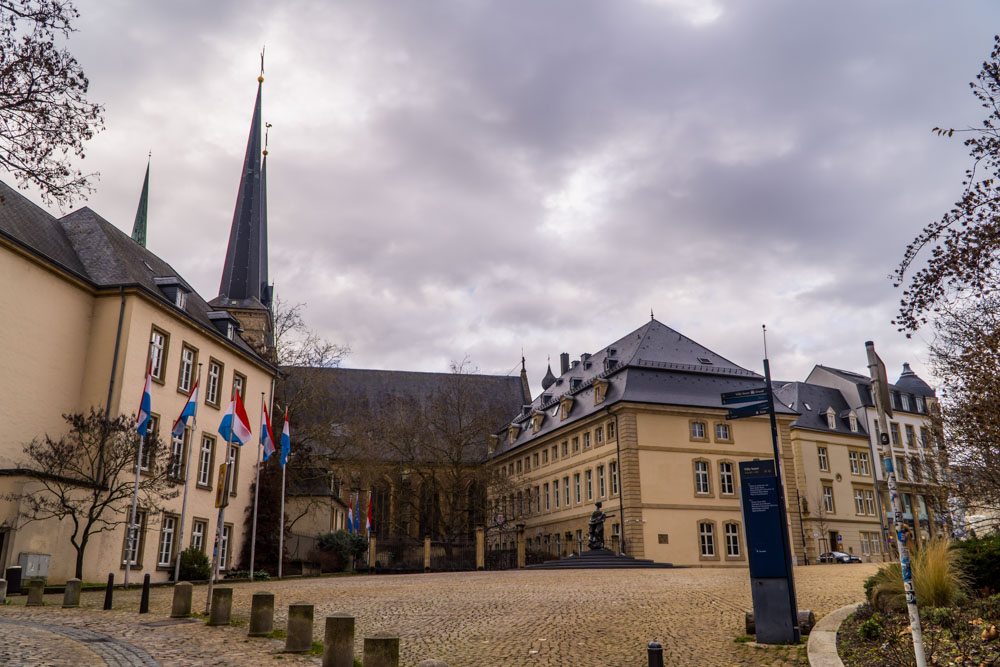
The Jesuits constructed a grand church in the Gothic style that was popular at the time, and these Gothic elements are still well preserved today. You’ll also notice the Renaissance style designs added later, as well as modern extensions that were added even more recently in the 20th century.
Notre Dame Cathedral is today a Catholic church after it was consecrated by the Pope in 1870. The cathedral holds huge importance for Luxembourg as a nation being home to sacred images of the country’s patron saint.
It’s also home to a moving memorial known as the National Monument to the Resistance and to the Deportation, a monument that commemorates those who gave their lives or were deported during the German occupation of Luxembourg in World War II.
Book a Self-Guided Tour of the Notre Dame
7. Delve back in time at the National Museum of History and Art
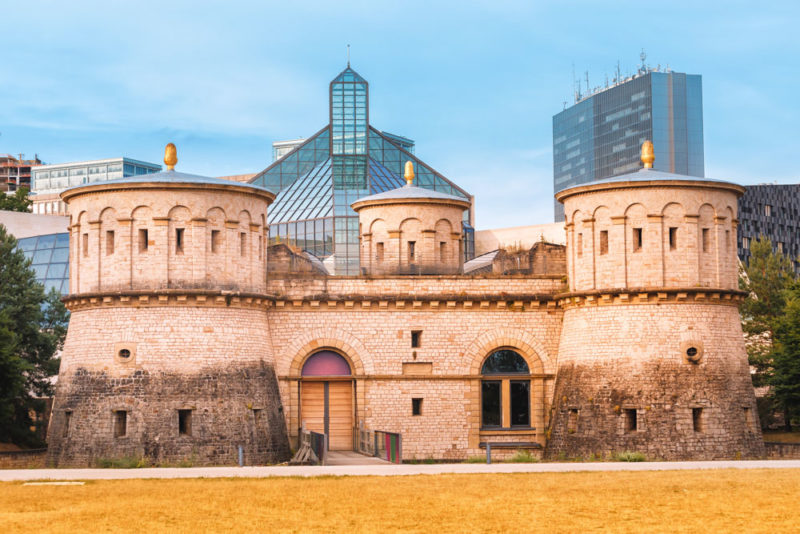
If you’d love to learn more about this small country’s unique history while also perusing a few historic European works of art, then one of the best places to visit in Luxembourg is the National Museum of History and Art .
Better known as the MNHA, this is Luxembourg’s premier museum. If you only have time to visit one museum, then this is the one to choose. You’ll find the MNHA is conveniently located in the Ville Haute in Luxembourg City, in a historic part of the old town known as the Fishmarket. The museum itself is found inside a modern building, but the artifacts within date back centuries, and in some cases, millennia.
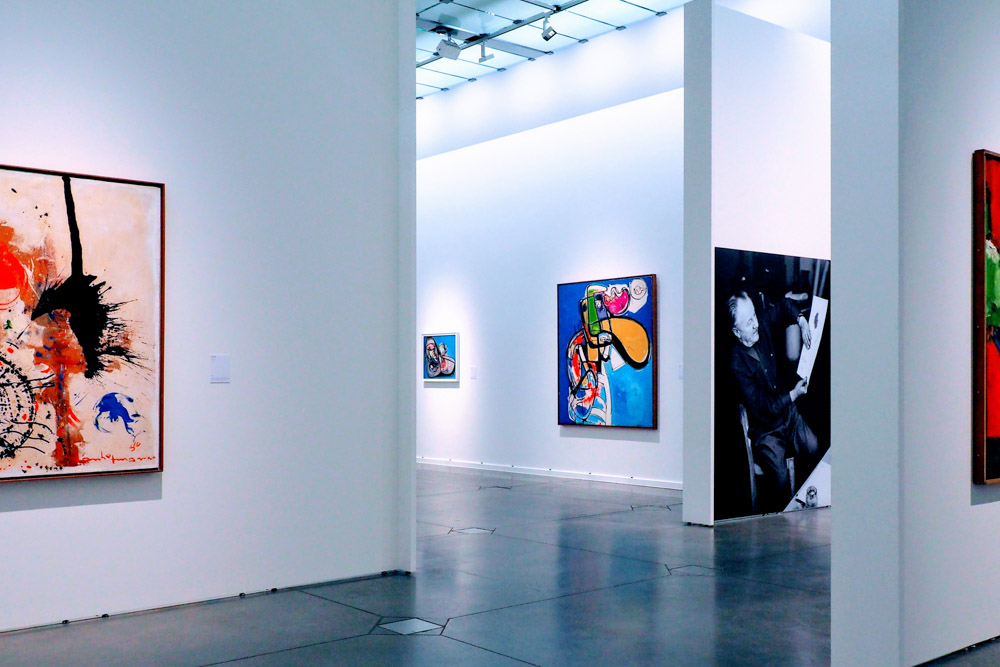
The MNHA is home to a number of significant collections, with the museum divided into several major sections. In the archeology section, you’ll find objects that tell the tale of early Luxembourg from a time long before national boundaries had been drawn across Europe.
The Fine Arts department is where you can explore the museum’s collection of artwork and paintings, while there’s also a section dedicated to handicrafts and folk art. Finally, there’s an exceptional coin collection, which contains countless coins and currencies from Luxembourg’s history.
Book a Sightseeing Train & 7 Museums Entry
8. Explore the capital’s history at the Luxembourg City History Museum
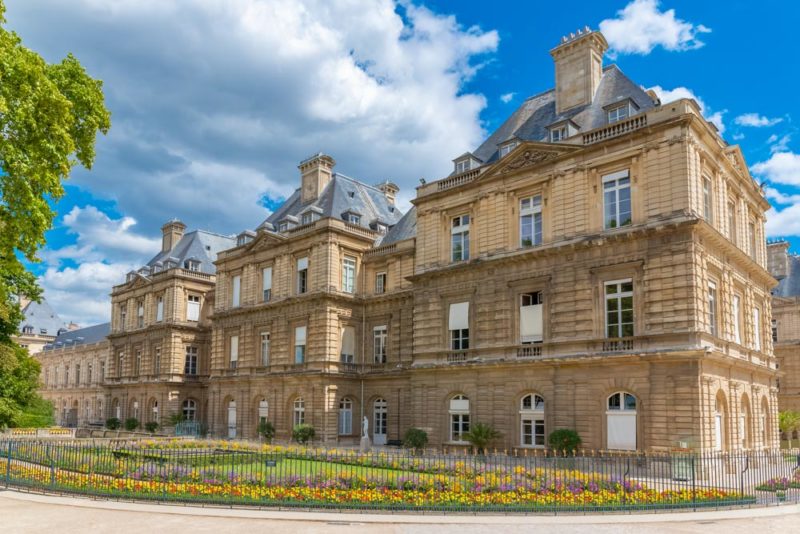
If you’d love to learn more about the capital’s fascinating past, then why not take a trip to the Luxembourg City History Museum ?
Perfectly positioned in the middle of Luxembourg City’s Old Town, this intriguing museum will take you back over a thousand years in time as you explore the wealth of exhibits on display here.
The Luxembourg City History Museum was first founded in 1996, but it tells the long tale of the city’s history, going back to the capital’s “official” founding in the 10th century AD.
Visit the museum, and you’ll learn how Luxembourg City sits on an important crossroads that was guarded as long ago as the Roman era. The Romans built watchtowers and forts here, but it wasn’t until 963 AD that Siegfried I founded a castle on the Bock, around which the city would grow.
You’ll also learn how from that moment onwards, Luxembourg would become one of Europe’s most prized possessions. The city would change hands and allegiances over the centuries until finally, the Duchy of Luxembourg was granted independence on the condition of neutrality in the 19th century.
Luxembourg City’s history tells of the endless wars that have rocked Europe since time immemorial, but you’ll also see how the city developed its own unique culture and politics at the crossroads of the continent. Quite appropriately, you’ll also enjoy the museum’s location within restored townhouses that date back to the 17th century, and you’ll be walking among history itself as you browse through the exhibits!
9. Explore contemporary art at the Museum of Modern Art
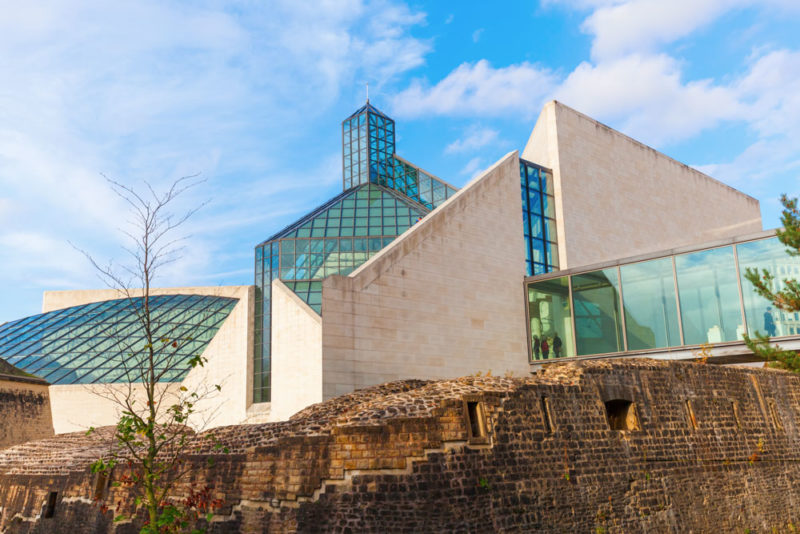
You’ll find Luxembourg’s Museum of Modern Art (or the MUDAM, as the locals call it) in a stand-out building on top of the Kirchberg Plateau in Luxembourg City.
Officially named the Grand Duke Jean Museum of Modern Art (after it was opened by the then-Duke Jean in 2006), inside this modernist gallery, you’ll find an array of works from Warhol to Nauman.
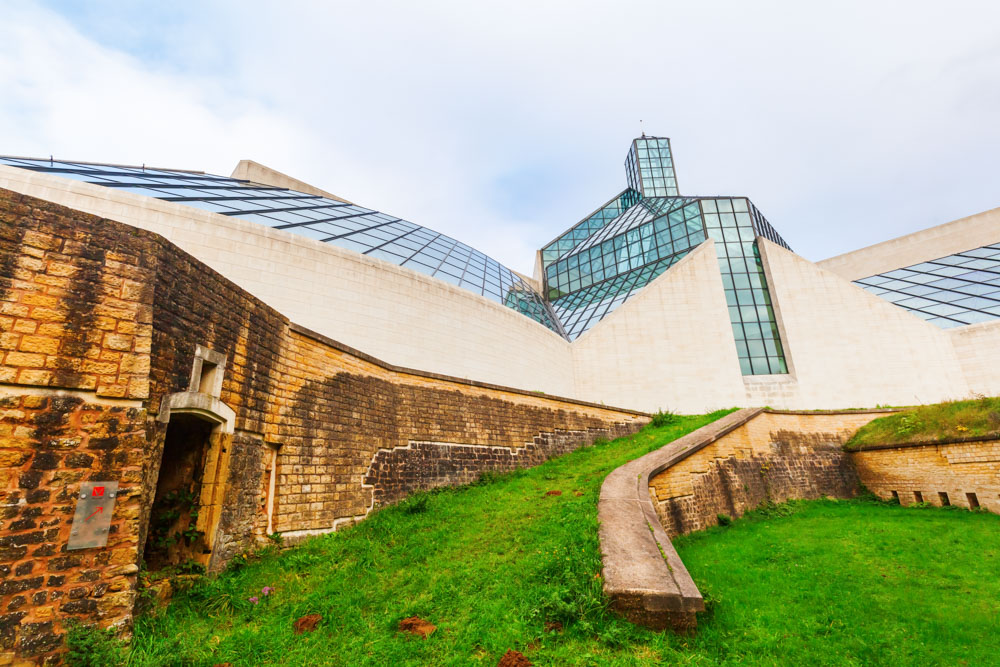
The building itself is a wonderful example of modern architecture, and you’ll love how it was built to regenerate and repurpose an old fort that had once defended the city from the plateau. Inside, there are three floors to explore, all of which are packed with modern and contemporary works collected from around the world.
10. Enjoy an escape to the Ardennes
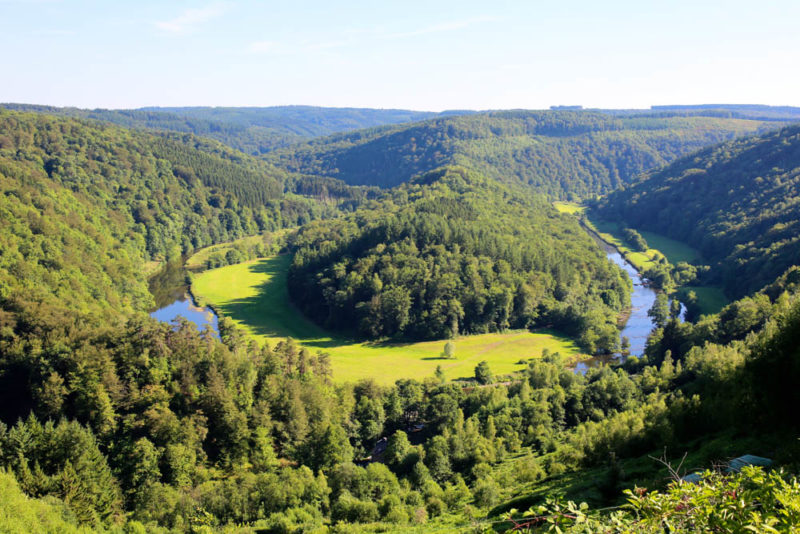
The Ardennes is the northernmost region of Luxembourg, a beautiful area of forests, rivers, and valleys that are the last remnants of an ancient forest that once covered much of Western Europe.
This is a place for nature lovers and romantics, and you’ll love exploring the hiking and cycling trails that meander through the forests and low-lying hills. You can base yourself in the small town of Clervaux for a rustic stay in the heart of the Ardennes or in the historic town of Wiltz for a heritage-filled vacation among castles and cobblestone streets.
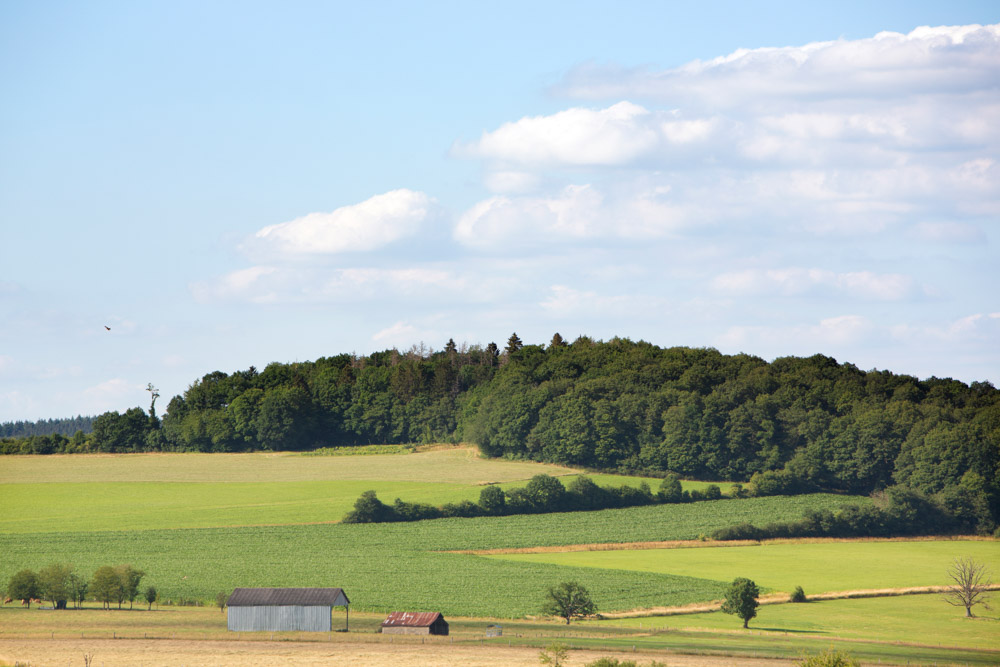
But while the Ardennes is a favorite among outdoor enthusiasts and a wonderful place for a romantic getaway at a spa hotel, you’ll also find that the region is always busy with military history buffs – particularly American military buffs!
The Ardennes was the scene of one of World War II’s most notorious battles when the Germans tried to break through the American lines in the winter of 1944. General Patton is even buried in the south, at the Luxembourg American Cemetery outside of Luxembourg City, while there are many sights of interest in the north.
Cross over the border to Belgium, and you can visit the town of Bastogne, which was immortalized in American military history when the German army surrounded and besieged it during the war.
11. Pay your respects at the Luxembourg American Cemetery
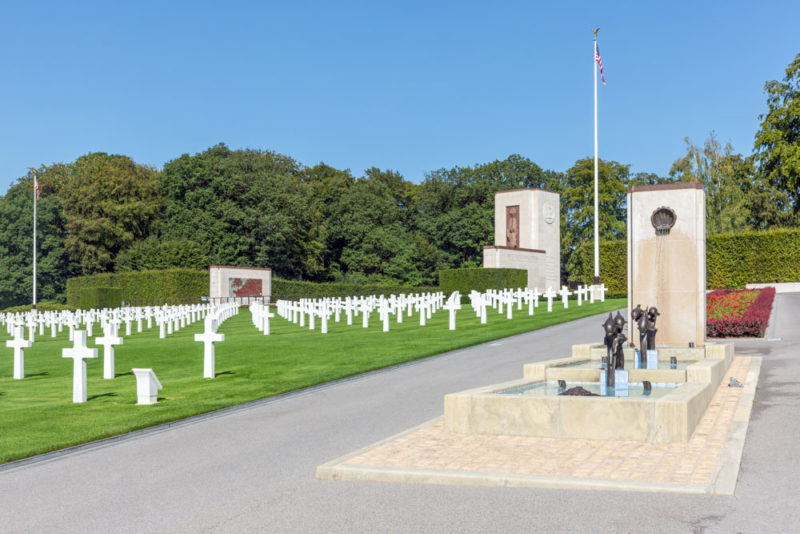
The Luxembourg American Cemetery is a somber addition to our list of things to do in Luxembourg, but for many tourists (especially those from the United States), it’s an important and moving stop on their itineraries.
This is one of the most important memorials to American soldiers who gave their lives fighting against Nazi Germany during World War II. General Patton, the American General who battled across Europe only to tragically die in an accident after the war had ended, is buried here, as are 5,070 other members of the armed forces who also never made it home.
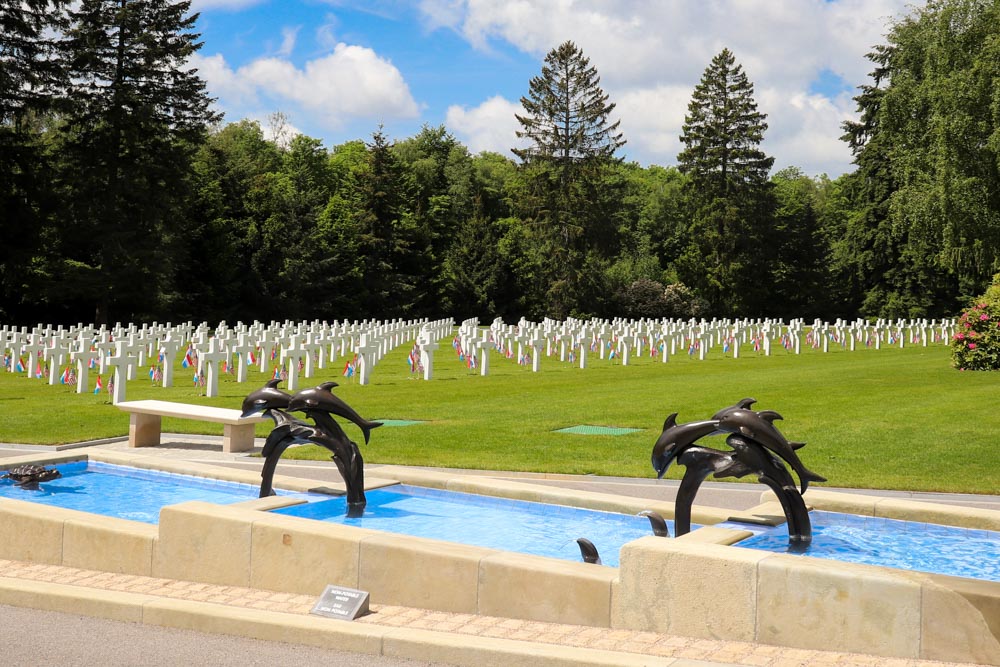
The cemetery was founded during the war when Luxembourg became the scene of fierce fighting during the Battle of the Bulge. American troops valiantly defended the region, with the most infamous battles taking place in the Ardennes as the Germans attempted to break through and reverse the direction of the war in December 1944.
You’ll find the Luxembourg American Cemetery on the outskirts of Luxembourg City (it’s located close to Luxembourg’s international airport). Today, the cemetery is a peaceful place to visit, with 17 acres of perfectly landscaped lawns lined with white headstones marking the graves of American soldiers.
The lawn is surrounded by tall, green trees, while a memorial chapel marks the entrance to the cemetery. At the entrance, you’ll be able to chart the Battle of the Bulge on memorial maps that show the importance of the battle that was fought in Luxembourg.
Book a Battle of the Bulge Remembrance Tour
12. Stay in the romantic town of Wiltz
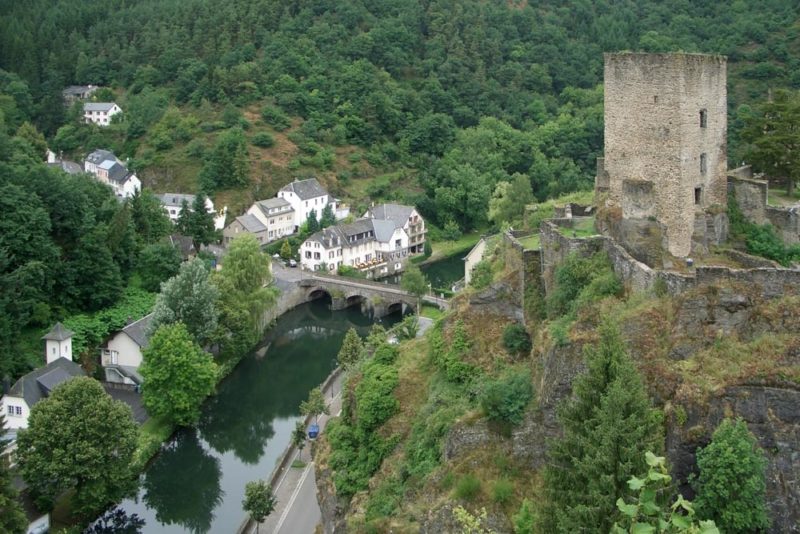
Wiltz is a small town in the northwest of Luxembourg that’s big on romance. Situated on the picturesque banks of the River Wiltz, the town is home to a fairytale-esque castle, rustic homestays, excellent restaurants, and beautiful countryside.
It’s the perfect place for a romantic getaway, but even if you’re traveling solo, you’ll quickly fall in love with the town’s enduring charm and endless heritage. Start your trip with a visit to the castle, a wondrous work of Renaissance-era architecture that dates back to the 16th century.
Inside Wiltz Castle, you can learn all about the Lords of Wiltz, who have played a pivotal role in Luxembourgish history. You can also visit the castle’s Tanning Museum, which pays homage to the tanning industry for which the town was famed for centuries. Beer drinkers will love the castle, too, because it’s also home to the National Museum of Brewing.
Wiltz is a great base from which to explore the Ardennes, within which the town is perfectly situated. You can spend days hiking trails into the forests, along the river, and through the valleys. Military history buffs will also know that Wiltz is home to the Museum of the Battle of the Bulge, commemorating the battle that took place in the Ardennes during World War II.
Wiltz is just an hour’s drive north of Luxembourg City. While you can make the journey there and back on an easy day trip from the capital, we highly recommend booking a guesthouse in Wiltz and spending the night in this romantic town in the Ardennes!
13. Explore the beautiful nature of Upper Sure Natural Park
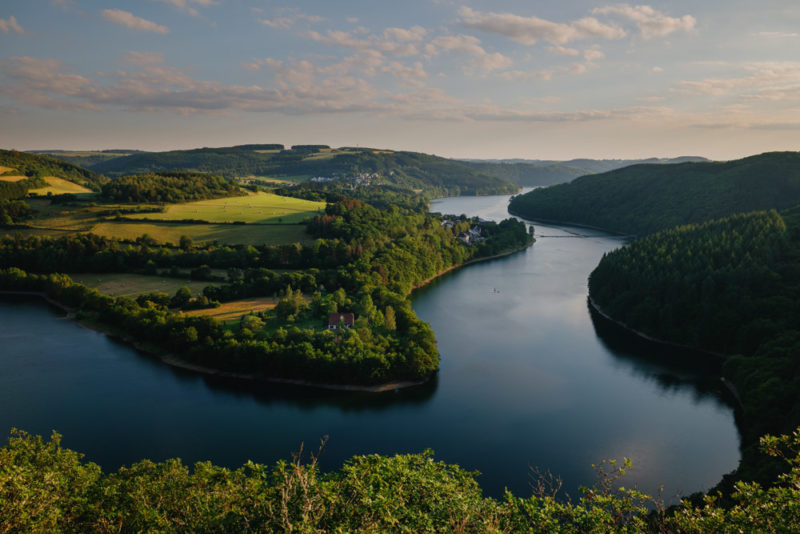
Despite its small size, Luxembourg is brimming with natural beauty. One of the best places to explore Luxembourg’s great outdoors is the Upper Sure Nature Park, where you’ll find a vast lake in the center of a nature preserve!
This was Luxembourg’s first “Natural Park,” and the Upper Sure Lake has since become a firm favorite among water sports fans. The lake is actually a water reservoir, and it supplies 70 percent of Luxembourg’s homes with fresh water on a daily basis.
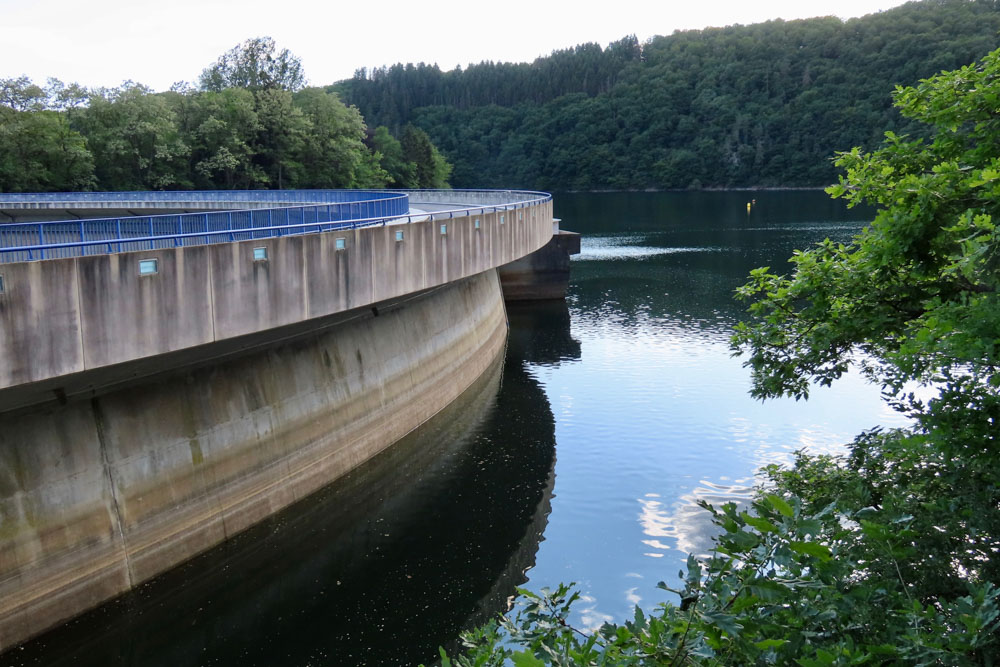
You can go sailing, canoeing, kayaking, and paddleboarding on the Upper Sure Lake, or you can lace up your hiking boots and tackle the trails that lead you around the reservoir. It’s a beautiful place to escape the rest of the world, and you’ll find campsites and guesthouses in and around the nature preserve offering you rustic accommodation after a full day of outdoor activities.
14. Visit the historic Abbey of Echternach
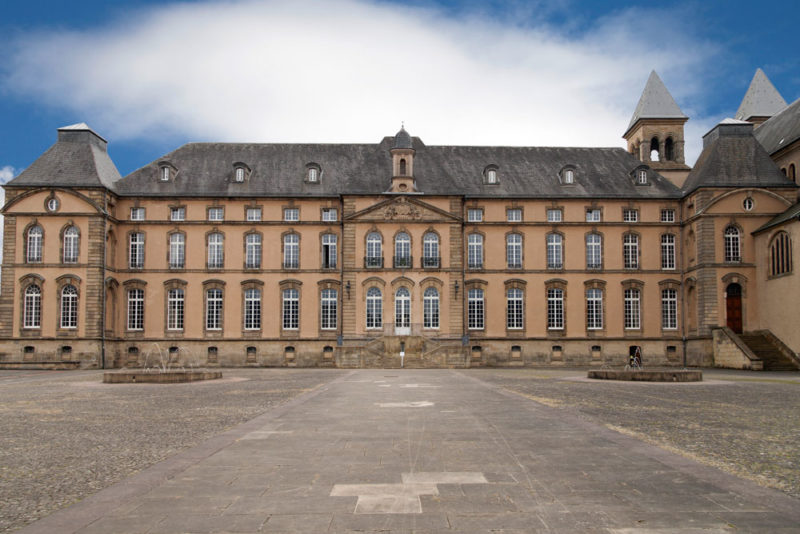
We highly recommend traveling to eastern Luxembourg, where just a few miles from the German border, you’ll find the quaint town of Echternach.
A visit to Echternach is a chance to step away from the internationally-minded capital and see a more local side of Luxembourg. It’s also an opportunity to visit a rare piece of history dating back to the 7th century AD.
The Abbey of Echternach is an impressive piece of Luxembourgish heritage, and you’ll be awed by the sight of its centuries-old facade and the religious relics found inside. The abbey was founded by Benedictine monks, although the site they chose was originally a Roman villa which by the 7th century was already ancient itself.
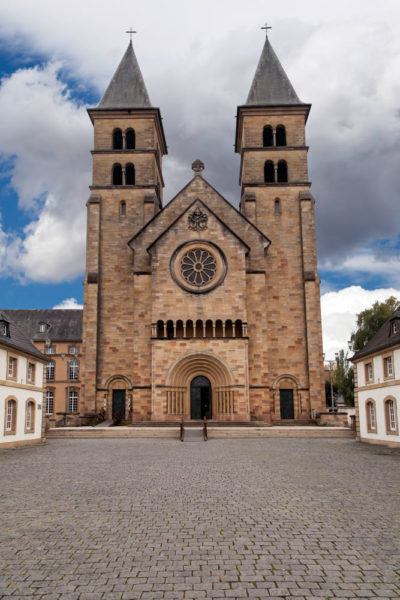
The fortunes of the Benedictine monks rose and fell with the fortunes of Western Europe’s kings and empires. When the Benedictines were in favor, the abbey was expanded, new sections were added, and more relics found their way to the vaults. When the Benedictines fell out of favor, the abbey suffered too, and it often fell into periods of disrepair or semi-abandonment.
The history of the Abbey of Echternach is one of ups and downs, but you’ll love delving back into the past as you explore its stone corridors and vaulted chambers. Visit on Whitsunday, and you’ll be in for a cultural treat. This holy day is when the monks host a unique dancing procession, and it’s joined by tens of thousands of pilgrims and visitors.
Book a Hop On Hop Off Castles & Nature Day Tour
15. Admire the ruins of Beaufort Castle
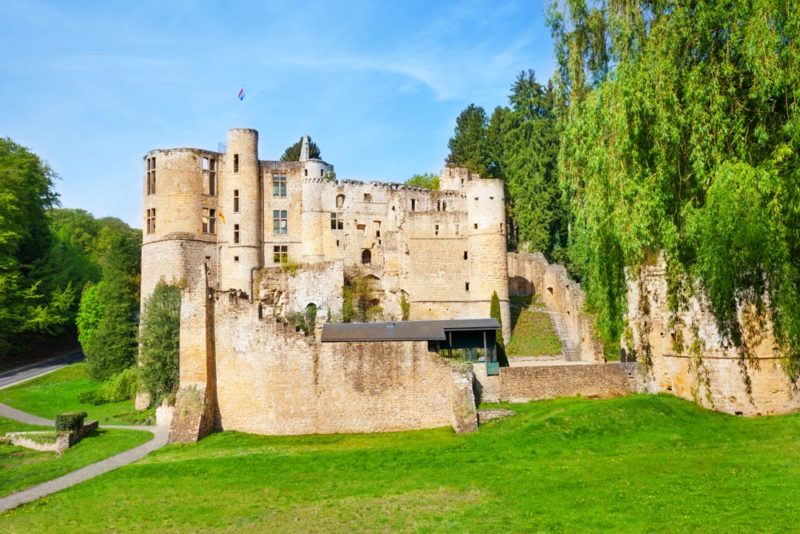
Close to the German border, just a half-hour drive northeast of Luxembourg City, you can visit the ruins of one of Luxembourg’s most impressive medieval castles.
We say ruins, but you’ll be surprised at just how well preserved Beaufort Castle is, considering it dates back to the 11th century AD. Just like the mighty fortifications of Luxembourg City, which were built on the Bock, Beaufort Castle was also constructed on top of a large rock that allowed for control of the surrounding valley.

A simple stone tower evolved into an impressive series of keeps, walls, and fortifications that still stand today, albeit with a few missing windows, walls, and ceilings that adds a sense of romantic decay to the ruins.
You can take a tour through the castle to learn more about its history, and at the same time, you’ll be interested to also learn that Beaufort Castle is home to a unique “medieval distillery.” Join a tasting tour of the distillery, and you’ll have the opportunity to taste fruity natural liqueurs that are inspired by local drinks of old.
Beaufort Castle is the centerpiece of Beaufort, a charming rural village with a population of just 3,000. The village is located on the Mullerthal Trail, a long-distance hiking route that offers plenty of opportunities for active, outdoor sightseeing in the region.
16. Hike the long-distance Mullerthal Trail
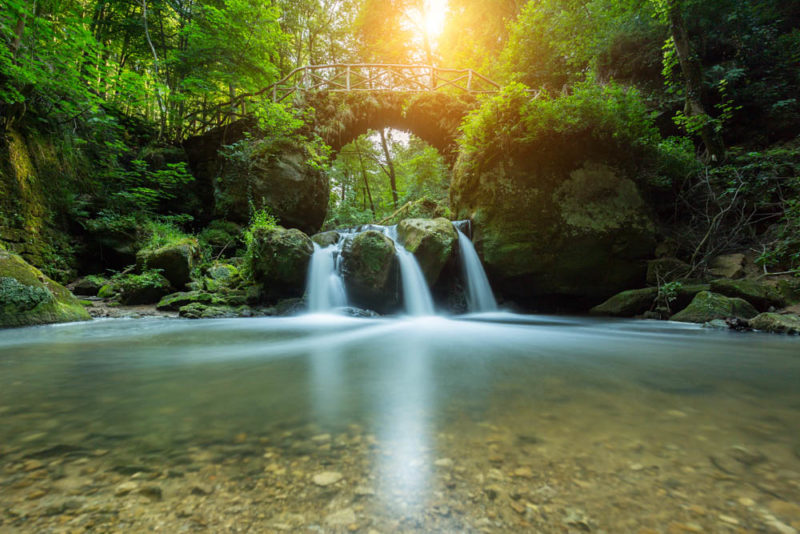
If you’re an avid hiker, then you’ve chosen one of the best destinations for a vacation. Despite its petite size, Luxembourg is home to an extensive network of hiking trails, and they are accessible, easy to follow, and absolutely stunning!
You’ll find one of the best trails in eastern Luxembourg, where the epic Mullerthal Trail offers 70 miles of breathtaking scenery in the Mullerthal Region. The entire trail can be hiked in just a few days, while it’s also conveniently broken up into three major sections, which could each be traversed on a separate weekend.
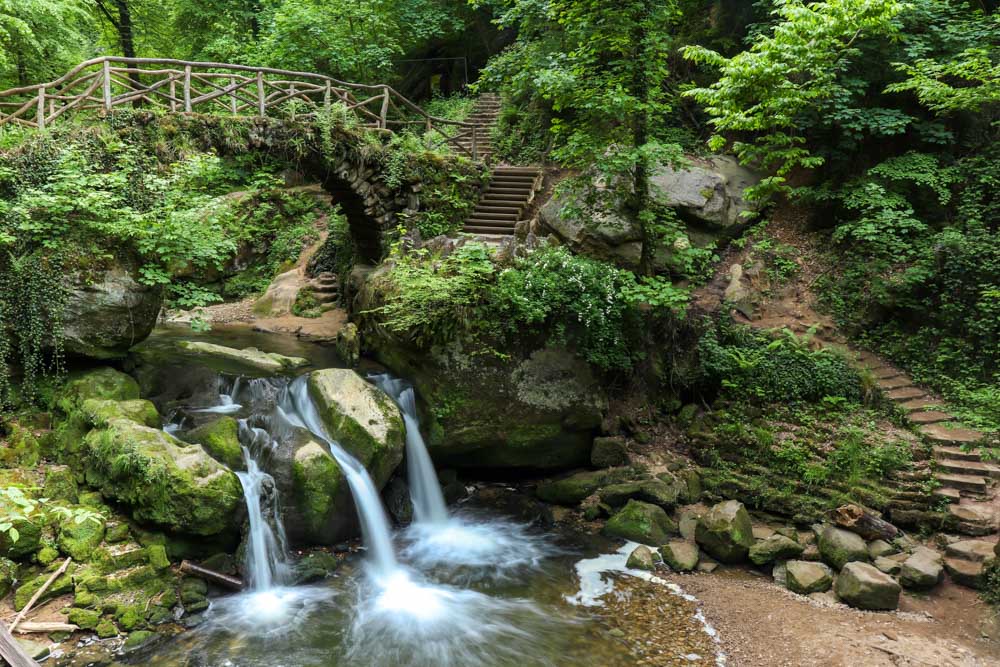
The Mullerthal Trail is designed to take you through the outdoor highlights of an area that has the nickname Little Switzerland, so as well as rugged scenery, you can expect to find some elevation to tackle. The Mullerthal Trail is waymarked the entire way, making this an excellent way to introduce yourself to Luxembourg’s best outdoor spots!
17. Visit Vianden Castle
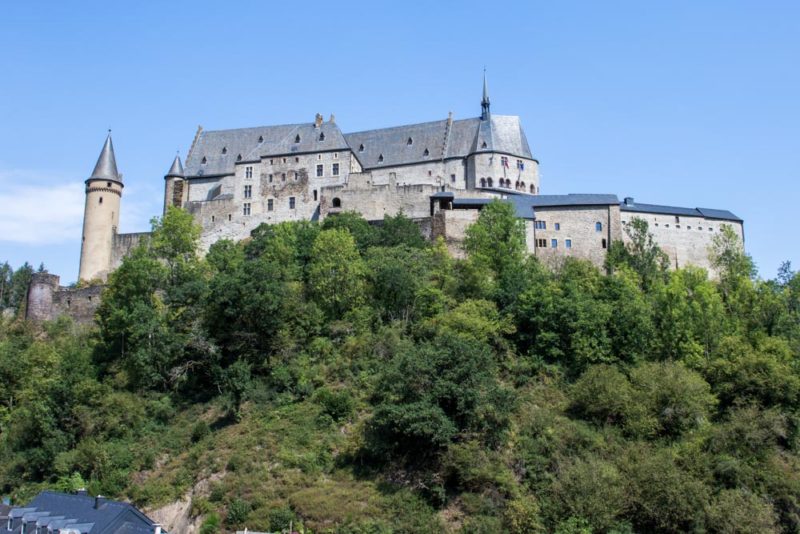
Overlooking the banks of the River Our on the northeastern border with Germany, Vianden Castle has stood guard over Luxembourg since it was first established in the 11th century AD.
Vianden Castle has medieval roots, but the castle you’ll see would be more at home in a Disney film than it would be in a bloody battle between knights. That’s because the fairytale towers and spires were added in the 17th century when the medieval castle walls were out of date, and the glamorous Renaissance style was firmly in favor in Europe.
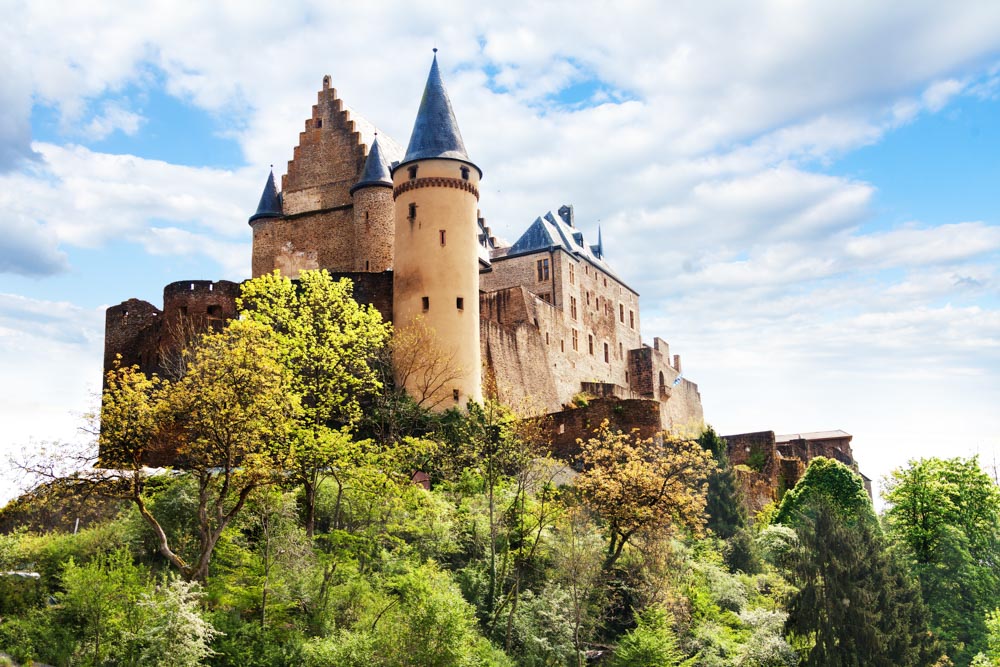
In its heyday, Vianden Castle was the largest fortification in the region. The castle was built on a rocky outcrop (like most castles in Luxembourg!), and you’ll see it rising some 300 meters above the River Our.
The castle was damaged during World War II when a fierce battle was fought here between the Germans and the Luxembourg Resistance. The resistance prevailed, marking a pivotal moment for Luxembourg during the war.
Vianden Castle has since been wonderfully restored to its Renaissance glory, and we think you’ll agree that it’s one of the most beautiful castles in Luxembourg!
Book a Vianden Castle Entry Ticket
18. Admire the photographs at the Family of Man exhibition
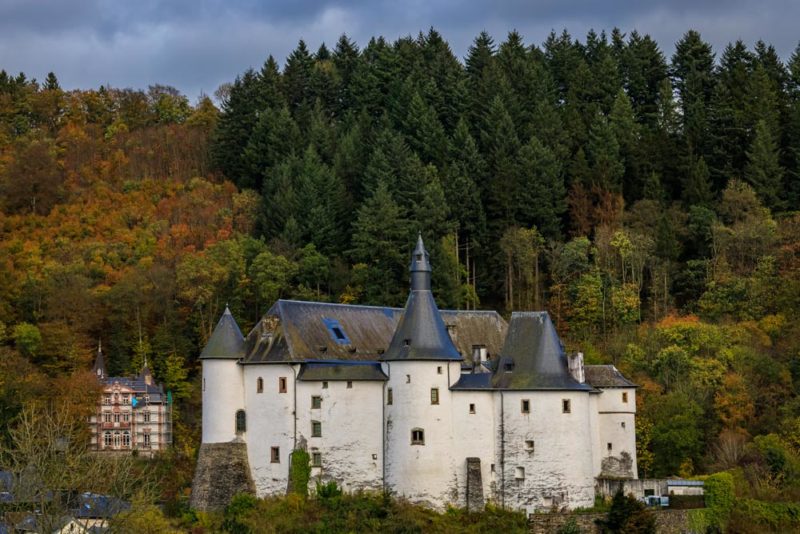
Travel to the town of Clervaux, and within Clervaux Chateaux you’ll find one of the world’s most fascinating photographic exhibitions and one of the best Luxembourg attractions. The 12th-century castle is home to the “Family of Man,” an exhibition that contains 503 photographs taken by 273 different photographers across 68 countries.
The exhibition was first displayed in New York in 1955. It was developed by Edward Steichen and was intended to explore the concept of peace in the post-war world. The exhibition touched on human themes such as love and friendship, as well as their opposites, such as war. The exhibition toured the world and in 1994 found a permanent home at Clervaux Castle, where you can visit it today.
The Family of Man Exhibition contains photographs by famous photographers such as Robert Capa and August Sander. You can explore the photography exhibition, then see what else there is to do in Clervaux.
The town has a rich history and heritage, and you can visit Clervaux Abbey before learning about the region’s World War II history at the Museum of the Ardennes Counteroffensive. As you’re in the heart of the Ardennes region, you’ll also have plenty of opportunities for hiking and cycling!
19. Take in the views from Bourscheid Castle
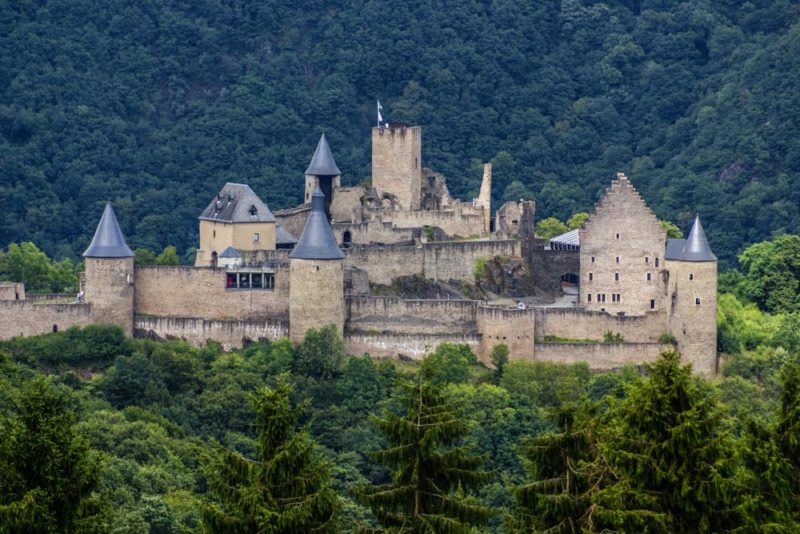
Luxembourg truly is a country of castles, and one of our favorites is found in Bourscheid, a 40-minute drive north of Luxembourg City.
Bourscheid Castle overlooks the River Sure from a vantage point some 150 meters above the waterline. Surrounded by tall trees in a dense forest that stretches along the riverbanks, the picturesque setting is best viewed from the high ramparts and towers of the castle itself.
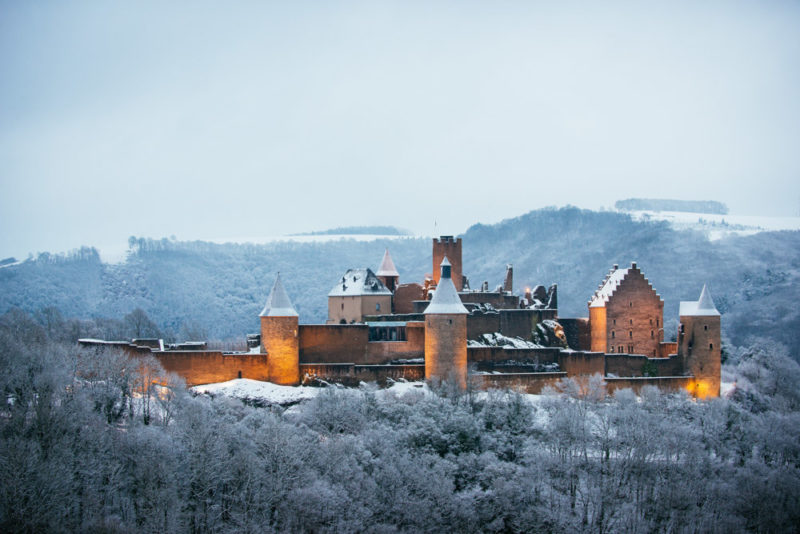
Travel to the castle early in the morning, and you might be lucky enough to see the surrounding hills covered in an eerie blanket of fog. In winter, the trees are thick with snow, while in autumn, the rich colors of the falling foliage have to be seen to be believed.
Bourscheid Castle dates back to the 11th century AD and has no less than 11 separate watchtowers offering spectacular panoramic views of the area!
20. Take a thermal bath in Mondorf-les-Bains
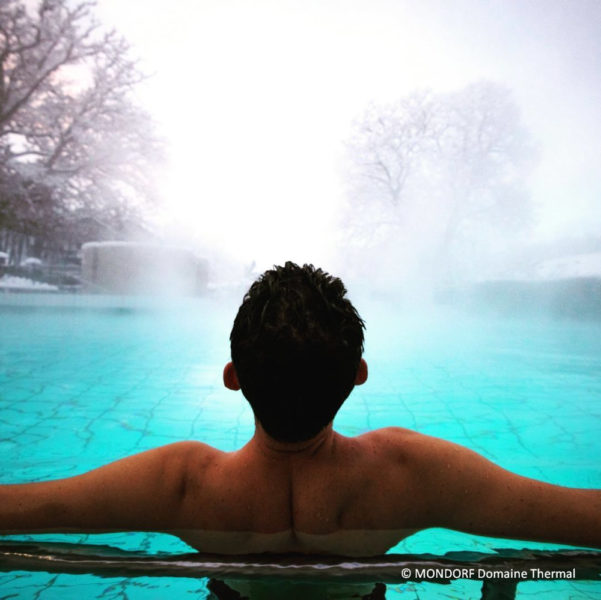
If you’re looking for a relaxing retreat, a visit to Mondorf-les-Bains is easily one of the best things to do in Luxembourg.
This lovely spa town is located in southern Luxembourg, and thermal waters were uncovered here in the 1840s when salt miners accidentally dug too deep. As well as being home to the most extensive selection of spas and thermal baths in the country, Mondorf-les-Bains is also home to Luxembourg’s only casino. The town is just meters away from the French border, so it’s certainly a popular tourist spot!
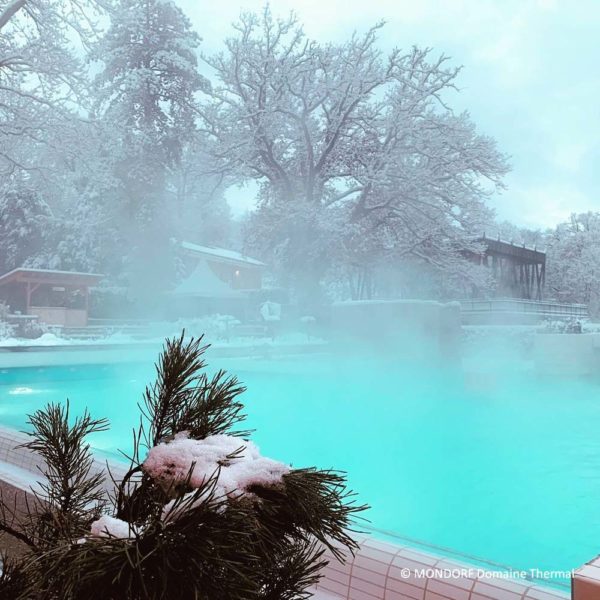
You’ll have plenty of spas to choose from, as well as great restaurants and high-end spa resorts. The most famous spa is the Mondorf Domaine Thermal , where you’ll find whirlpools, hot tubs, hammams, and much more.
21. Dine out at a Michelin-starred restaurant
The dining scene in Luxembourg is fantastic! Considering the small size of the country, that often comes as a surprise to visitors, but not when you consider that Luxembourg is home to the second-highest number of Michelin-starred restaurants per capita in the world.
Japan is the only country that has more Michelin-starred restaurants per capita than Luxembourg, while Luxembourg City has the highest number of any city (per capita) in the world.
The great culinary traditions of Luxembourg await you, and you’ll love how the local food is a wonderful blend of French, German, and Belgian cuisine. The country draws inspiration from its location at the crossroads of Europe, and you’ll enjoy French-style patisseries for breakfast, and German-influenced sauerkraut, alongside meats and dumplings, for lunch.
There are at least 13 Michelin-starred restaurants in Luxembourg, although this may change year on year. Some of the best include La Cristallerie , Guillou Champagne , and Les Jardins d’Anais . Book your table well in advance because these prestigious restaurants are some of the most popular in Europe.
If you’re looking for unique things to do in Luxembourg and you appreciate a good meal, you’ll love sampling the city’s many Michelin-starred restaurants!
22. Explore the Valley of the Seven Castles
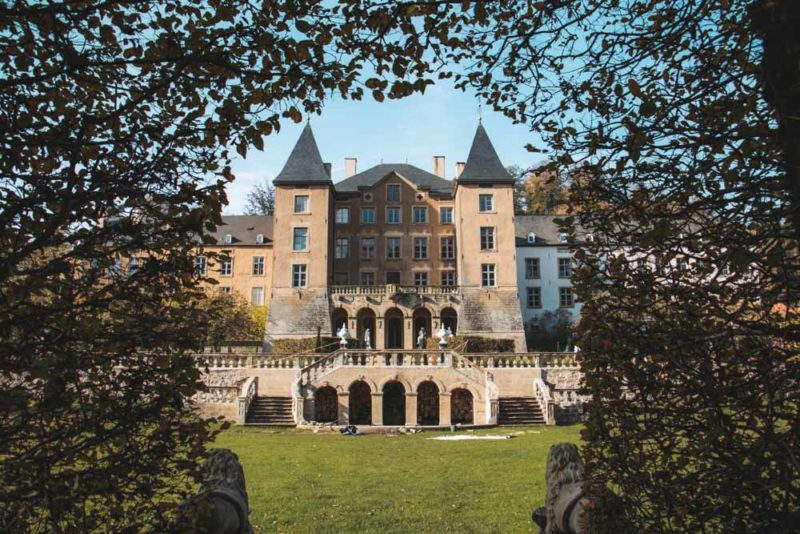
Head to the Valley of the Seven Castles, and you can explore no less than seven castles in one day. You’ll find the Äischdall Valley just to the north of Luxembourg City, and it’s home to the highest density of castles in Luxembourg.
The Valley of the Seven Castles begins in the town of Mersch, where you’ll find a medieval castle dating back to the 13th century. From Mersch, you can choose to drive through the valley or follow the 22-mile walking and cycling route that traverses the region.
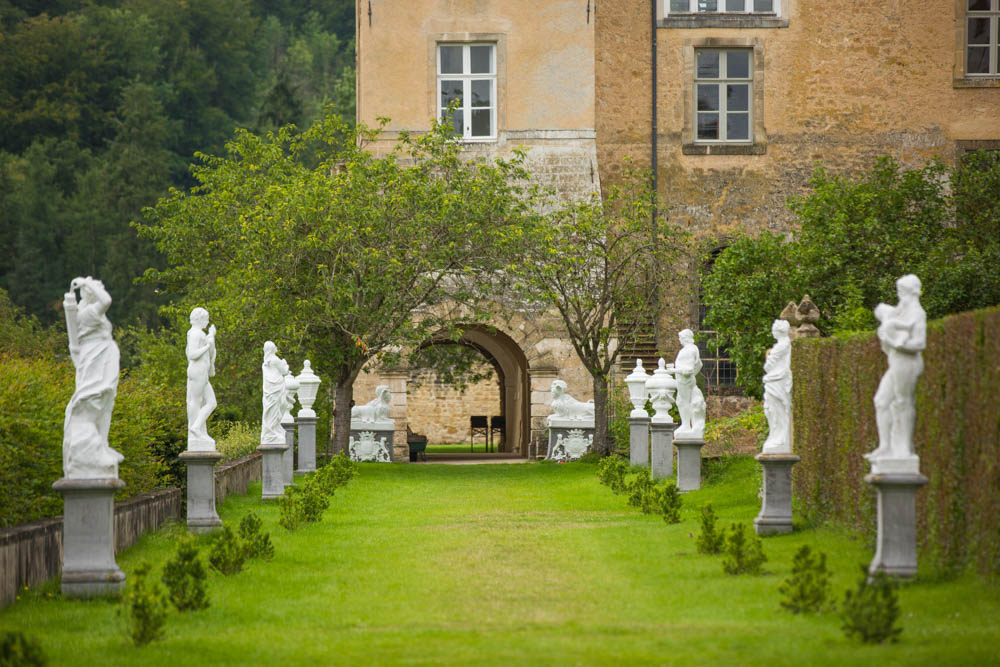
Next up is Schoenfels Castle (which dates to the 12th century), followed by Hollenfels Castle (which is home to a useful Youth Hostel if you’re hiking), then Old Ansembourg Castle and New Ansembourg Castle, and then Septfontaines Castle.
The Valley of the Seven Castles ends in Koerich, where you can visit the 12th-century ruins of Koerich Castle, not far from the Belgian border.
23. Tour the wineries in the Moselle Valley
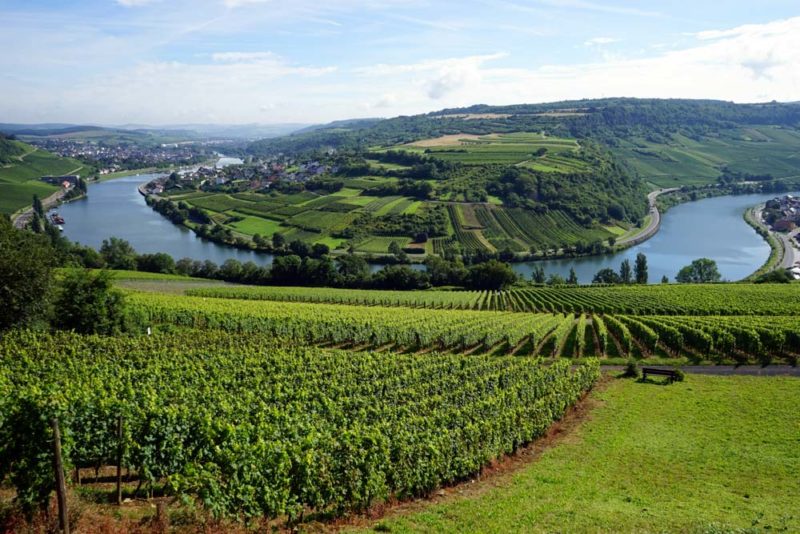
The Moselle River forms the border with Germany, and the wide Moselle Valley is highly regarded as one of Europe’s premier wine-growing regions. But most tourists will visit the vineyards on the German side of the valley, with the Luxembourgish wineries remaining firmly off the beaten track.
A tour of the Moselle Valley wineries is one of the most fun things to do in Luxembourg, and you’ll love spending the day sampling wines, walking through vineyards, and learning about the local production processes.
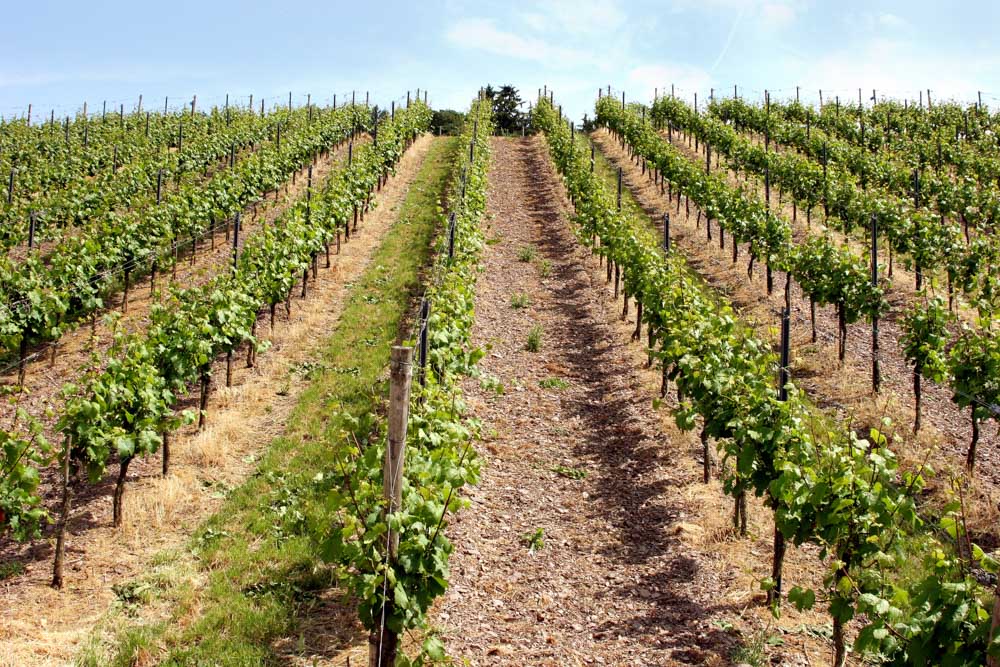
The region is just a short journey east of Luxembourg City, so it makes for a great day trip from the capital. Likewise, you might find it refreshing to spend a night or two in rustic accommodation overlooking the Moselle Valley, especially after a few bottles of Luxembourg’s best wine!
Book a Moselle Minibus Day Trip

24. Revel in the Fuesent carnival celebrations
Luxembourgers love to celebrate, but there’s one annual event that tops them all. One of the most fun carnivals in Europe takes place in Luxembourg in February, as the locals celebrate the age-old tradition known as Fuesent.
Fuesent takes place between Candlemas Day (February 2) and Ash Wednesday (which marks the start of Lent in the Christian tradition). Fuesent celebrations occur all over Luxembourg, as towns and villages across the country stage elaborate parades, masked balls, and feasts.
Historically, the idea of carnival was to enjoy the last of the winter stores before the fasting of Lent and to celebrate the end of winter and the approach of spring. The traditions continue today and often end with the burning of a straw man to symbolize the excesses of carnival!
25. Join in the Christmas festivities at the Winterlights Festival
Luxembourg City continues the great tradition of European Christmas markets with its fantastic Winterlights Festival.
If you’re visiting Europe between the end of November and the start of January, then this festive festival is a must-see. You’ll be escaping the tourist crowds, too, because unlike the big and touristy markets in neighboring Germany , Luxembourg isn’t exactly at the top of those Christmas Market lists.
But that doesn’t mean this isn’t one of the best Christmas markets in Europe . The Winterlights Festival is divided into four major markets in the city, all of which are dazzlingly lit up with an extravagant display of Christmas lights.
You’ll find an eclectic mix of light displays, fun fair rides, market stalls, and traditional Luxembourgish Christmas cuisine at the markets, which are spread across the Place d’Armes, the Place de la Constitution, Park Kinnekswiss, and Place de Paris!
There you have it! The 25 best things to do in Luxembourg. What’s your favorite thing to do in Luxembourg?
Planning a trip to Luxembourg? Check out our favorite books and travel guides!
SHARE THIS ON PINTEREST
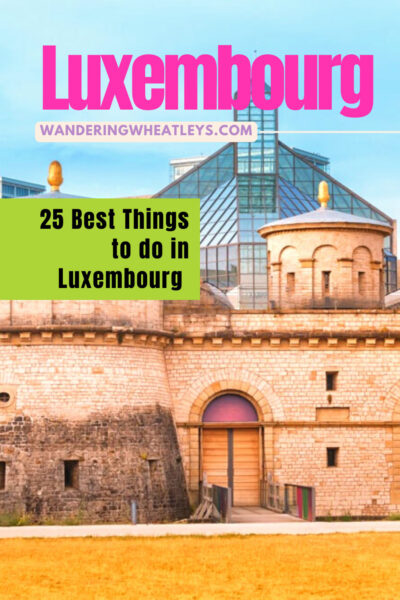
Richard is an award-winning travel writer based in Southwest England who’s addicted to traveling off the beaten track. He’s traveled to 75 countries and counting in search of intriguing stories, unusual destinations, and cultural curiosities. Richard loves traveling the long way round over land and sea, and you’ll find him visiting quirky micronations and breakaway territories as often as he’s found lounging on a beach (which is a lot). When he’s not writing for BBC Travel, National Geographic, or Lonely Planet, you can find Richard writing for the Wandering Wheatleys or updating his off-beat travel blog, Travel Tramp.
Related Posts
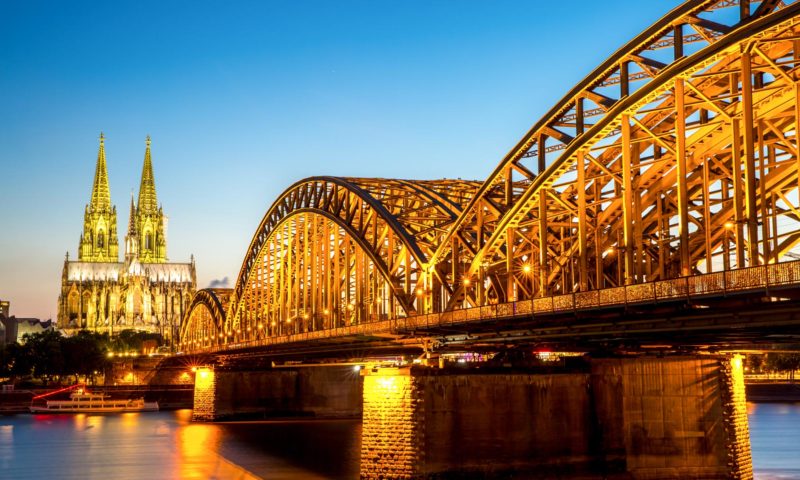
The 12 Best Hotels in Cologne, Germany
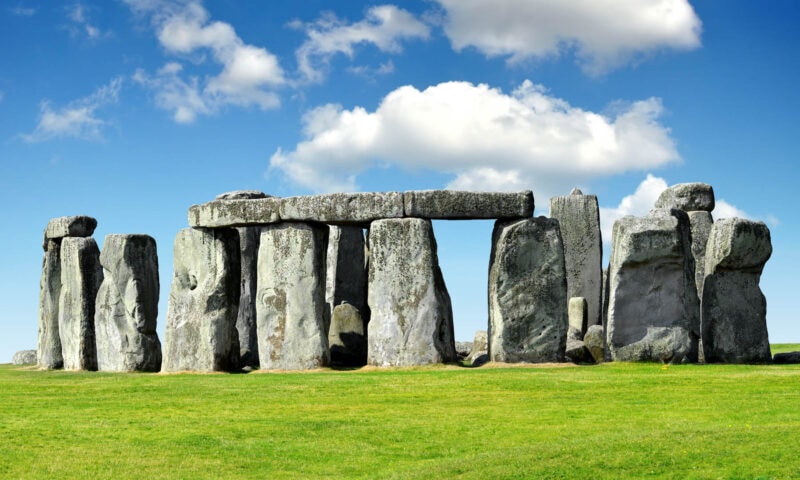
The Perfect 2-Week England Itinerary
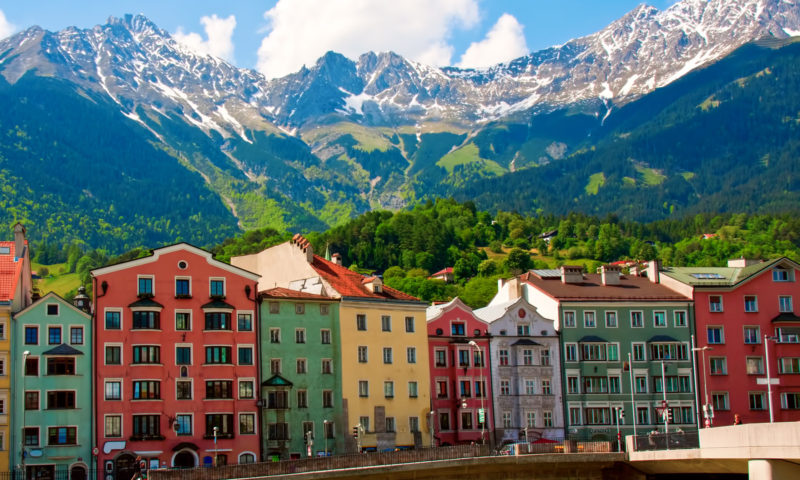
12 Cool Boutique Hotels in Innsbruck, Austria
Leave a comment cancel reply.
Your email address will not be published. Required fields are marked *
15 BEST Places to Visit in Luxembourg
- Pinterest 681
Curious about the places to visit in Luxembourg ?
A nation that has regularly been ranked among the top three countries in the world regarding wealth and wine consumption, life always seems to be right in Luxembourg. Behind the bank headquarters and all the lax taxation stands an utterly charming piece of country that is part of the northern Europe territory.
There is a fairy-tale quality to the UNESCO-listed historic core of the Luxembourg capital that remains perched dramatically on top of a cliff. Beyond this is a landscape of rolling part-forested hills with a string of beguiling villages that form attractive hurdles overlooked by stunning medieval castles . Moselle wine country adds a lot of fun and fizz while the pretty micro-gorges of Mullerthal are excellent for taking some lovely walks.
To sum it up, there are plenty of places to visit in Luxembourg that will leave the tourists in awe and surprise. That is some achievement for a country that had been ravaged during WWII, a sad history that continues to be remembered in war museums in Luxembourg.
Being a small country , Luxembourg is easy to get around – it spreads across less than 1650 square kilometers, with a population of little more than 500,000.
Luxembourg travel can be easily achieved on foot in the capital city while you can travel to the picturesque Luxembourg countryside on a train or driving tours.
Here is a look at the best places in Luxembourg and tourist attractions that cannot be missed by visitors who choose to travel to Luxembourg.
❗️ Be insured before your trip and get a SafetyWing FREE insurance quote 📚 Read our post about why you should always have insurance ✈️ Find out how to find cheap flights using Skyscanner or find deals now 🛌🏻 Book your accommodation through Booking.com , Expedia , or Agoda 🎭 Find awesome and hassle-free tours through GetYourGuide or Tourradar 🚘 Explore the surrounding areas on an epic road trip with Rental Cars 📱 Read destination reviews and other traveler tips on TripAdvisor
Table of Contents
What are the best places to visit in Luxembourg?
A cozy little border town along the German frontier, it is one of the oldest cities in Luxembourg. This place makes for the perfect base camp from where to explore the region thanks to its lazy, laid-back afternoon rambling atmosphere.
Tourists who plan to go cycling along with the River Sure or for a hike in Mullertal can stay at the many hotels in Luxembourg Echternach. The last half a millennium has seen pilgrims coming in for every Whit Tuesday to attend the dancing procession rolled out in honor of St. Willibrord, the founder of this town.
The activities in Luxembourg Echternach for May and June include an International Music Festival , a tour of the Prehistory Museum, and The Basilica, while one can visit the Roman Villa at any time of the year.

A quaint and hilly town on the German border, Vianden stands on the banks of the River Our. The Vianden Castle, rising high above the river, and the old-world charm of this place, are among the most significant Luxembourg attractions in this town.
The castle was built sometime between the 11th and 14th centuries as a prominent home for the royal family of Luxembourg country. It stayed in that position of honor for hundreds of years before plunging down into ruins for an almost equal period.
Restoration work has been in progress since the 1970s to return it to its former glory. Today, this tourist attraction in Luxembourg allows visitors to enjoy some of the best photogenic vistas that the country has to offer.
A fantastic restaurant sits atop the castle and offers some of the best views of the town below and the surrounding mountains. It can be accessed only by chairlift. The Victor Hugo museum situated in the very house of his residence is another Luxembourg point of interest that you shouldn’t skip.

The most popular Luxembourg beer lends its name to this city, with the liquor being a favorite among tourists for the colorful local flavor found in Diekirch. The town stands in the north of Luxembourg country on the Rive Sure amidst incredible vistas created by the surrounding mountains.
The pedestrian zone is an attractive area that finds mention in every Luxembourg travel guide as the place to be in for public concerts, cafes, and shopping . The old quarter has the St. Laurentius Church and other old-world homes as the main attractions for Luxembourg travel.
The museums in Luxembourg to check out over here include the National Museum of Military History, the beer museum, and the National Museum of Historic Vehicles. Diekirch is also an excellent place to be in for tourists who want a touch of nature on their travel to Luxembourg with options available for fishing, kayaking, hiking, and bicycling.

One of the smaller towns of Luxembourg, Beaufort, ranks high on the charm factor and is among the Luxembourg points of interest because of the castle that stands across the valley from the central district. It was initially built as a Roman camp before being put through many phases of expansion over the years.
The Battle of Ardennes during WWII proved to be highly destructive for the castle, and it never managed to recover from it. There are many levels to the castle that tourists can explore along with its interiors, but these are strikingly devoid of any décor.
hiking along the many lovely trails and an afternoon spent cycling are the other activities in Luxembourg Beaufort that tourists can choose to spend their time.

City of Luxembourg
The capital city of Luxembourg, a UNESCO World Heritage Site , and a significant European financial center, the City of Luxembourg, is one of those Luxembourg destinations tourists would want to spend most of their time in.
The Adolphe Bridge, Place d’Armes, Notre Dame Cathedral, and Grand Ducal Palace are among the top places to visit in Luxembourg . There is more to this place than mere historical beauty with Luxembourg City being a very cosmopolitan and modern place that represents the perfect blend of contemporary progress and history.
The Fortress of Luxembourg as a Luxembourg point of interest is a case in point, having undergone multiple transformations over the centuries to now stand as one of the highlights of European culture.

The Moselle Valley
Spread across a 42km long stretch from Schengen to Wasserbillig, the Moselle Valley and the accompanying river are lined with wine cooperatives, vineyards, and small villages. Schengen is famous for having an EU agreement that makes cross-border travel simple and has been a major Luxembourg attraction for wine lovers down the generations.
There is a distinct charm to every village in the valley, with fine-dining restaurants serving delicious Luxembourg food and a relaxing vibe rarely found in tourist destinations. Machtum, Ehen, Greiveldange, Remich, and Remerschen are among the notable villages. Locals refer to the valley as d’Musel that is home to exploring some unbelievable fruit plantations.
Other things to do in Luxembourg Moselle Valley include small cruises , water sports, themed hikes, and a dip into some medieval history.

One of the best places to see in Luxembourg, Mullerthal, is often termed Little Switzerland because of its hilly green landscape. The unique rock formations are the most noticeable here – hard to describe but unforgettable for those who bear witness to them.
Echternach is among the principal cities of Luxembourg that are located close by. Mullerthal is renowned for its Luxembourg cuisine based on cheese, liquor, and honey, with the restaurants serving dishes with a refined taste.
Experienced hikers on Luxembourg travel can make the most of the 112km Mullerthal Trail through rock formations, forests, and fields. Those with less experience but more enthusiasm can explore the other more accessible hiking options that run through some of the most awe-inspiring vistas.

The Ardennes
Tourists looking for a truly exceptional experience of nature on their travel to Luxembourg should make it a point to head over straight to the Ardennes. Scenic Highlands, winding valleys, tons of cycling, and hiking trails, all combine to make this place a fantastic exploration zone with villages and forests spread across the nature parks.
It is also home to some of the best-maintained medieval ruins of Luxembourg country. Outdoor performances and concerts, traditional markets, and medieval revivals are a throwback to another era. Ardennes is home to two nature parks that are distinct in their rights.

Nature Park Our
Our Nature Park was established in 2005 within the region of the Ardennes and deserves mention by its rights as one of the top tourist attractions in Luxembourg and the best places in Luxembourg.
The Our River snakes through this place spread across 309 square kilometers with an alternating sequence of high plateaus and deep valleys. It was set up primarily with the objective of focusing on the economic and socio-cultural development of the region while maintaining and respecting the cultural heritage and natural resources.
Clervaux Castle has a fantastic photo exhibit, Stolzembourg is home to a mining museum, and there is the Festival “Jardins a suivre” that are among the top Luxembourg attractions in this place. The agricultural produce of the region can be bought directly from the farmers to help both the environment and the local economy.

Located in the central territory of Luxembourg country, Larochette makes for the ideal home base for those who visit Luxembourg on vacation . This town of the Grand Duchy is located in a picturesque setting between two rivers with slate-roofed homes that dramatically stand out beneath the medieval castle ruins standing on top of a cliff.
The place is full of fine-dining restaurants and surprising cafes that make for a great place to explore around. Visitors are sure to long for a return to Larochette following few days of taking in the nearby attractions and surrounding regions.

Bourglinster
Bourglinster stands en route to Larochette and has an 18th-century castle as one of the prominent Luxembourg tourist attractions; it is an excellent place to stop by for an espresso or full-fledged meal.
The castle can be found inside the remains of a fortress that is even older, dating back to the 12th century. One can discover this place bustling with exhibitions along with occasional performances.
Two fine-dining restaurants stand on the side wings – Brasserie Cote Cour and La Distillerie – with either of them offering incredible décor and ambiance to match the castle and its excellent collection of food .

The Land of the Red Rocks
The red ore found in this area is what gives the place its name. It is also the main driving force behind the success of Luxembourg country during the industrial era. The locals refer to it as Terres Rouges, and the area continues to serve the present-day industrial needs of the state, combining ancient techniques and new technology to get the job done.
The core of the city is made up of three fun and stylish towns – Dudelange, Esch-Sur-Alzette, and Differdange. Each one offers a lot regarding culture with concerts, street theater, and rock festivals being frequent.
Tourists on a Luxembourg travel program with family should visit the Parc Merveilleux in Bettembourg, where the kids can enjoy their time with the parrots, crocodiles, and monkeys.

Though a part of the Land of the Red Rocks, the old mining town of Rumelange deserves mention in its rights. The National Mine Museum is the leading Luxembourg points of interest here as well as being regarded as one of the top Luxembourg tourist attractions on Earth.
Sightseeing in Luxembourg Rumelange includes guided walks organized by the museum through its old mine tunnels and a ride on an ancient mining train. The town is situated in the Kayl Valley forest that has tons of great biking and hiking trails for tourists to enjoy.

The Nature Park Of the Upper Sure
Naturpark Upper Sure – regarded as the Luxembourg “water area” – is a model for sustainable tourism in the country. It earned the EDEN prize in 2010 for its commitment towards integrating economic and social development, culture, and tourism with the protection of the environment.
This mostly pure piece of land is the ideal spot for relaxation. Tourists can travel at their pace or be part of a themed itinerary for getting around. The leisure activities in Luxembourg here are structured to highlight the natural, cultural, and historical aspects of this region.

Western Luxembourg
Those planning to drive their vehicle on Luxembourg travel and wondering about the places to travel to Luxembourg must have the Western Luxembourg Eisch Valley on their list of Luxembourg destinations.
Situated between the towns of Ettelbruck and Arlon, a drive down the stretch that winds through lush forests is one of the most peaceful experiences in the world. There are some castles along the way, with many of them being no more than majestic ruins while others have been converted into mansion-like chateaux.
Ansembourg is a convenient place for a stopover where tourists can enjoy a view of the castle from the formal gardens. Those fond of a good moat will find the medieval castle at Hollenfels to be a beautiful Luxembourg attraction.
The country has a lot more to offer, with these being the best places to visit in Luxembourg . Before visiting, it is essential that tourists check up on the local conditions through various media sources to be entirely sure of the safety both regarding political situations and weather scenarios.
This information will help avoid unpleasant situations and allow them to have the most memorable and enjoyable vacation in this beautiful Nordic country.

Are you on Pinterest? Pin these for later read!

Sharing is Caring
Help spread the word. You're awesome for doing it!

Best Places To Visit In Luxembourg
Despite being the seventh smallest country in Europe, Luxembourg has some of the most beautiful destinations on the Old Continent. And of course, after having published the best places to visit in France , Italy , Spain , England , Greece , Portugal , Germany , Belgium , and the Netherlands , I couldn’t help but do the same with Luxembourg!
Located in Central Europe, Luxembourg borders three countries: Belgium (on the north and west), Germany (on the northeast and east), and France (on the south). And being a country with several modern cities, medieval towns, and picturesque villages, it’s not easy to choose just ten of the best places to visit in Luxembourg!
So, do you want to know more about the Best Places To Visit In Luxembourg? Keep reading!
This post may contain affiliate links, meaning I earn a small commission if you make a purchase, at no additional cost to you. Please read my disclosure & privacy policy for more information.
No time to read now? Pin it for later!

Best Places to Visit in Luxembourg
Luxembourg City (in Luxembourgish, Lëtzebuerg; in French, Luxembourg; and in German, Luxemburg) is not only the capital of the country of the same name but also an obvious choice for the top of this list of best places to visit in Luxembourg. . As one of the richest cities in Europe and one of the three official capitals of the European Union, it’s natural that there’s no shortage of points of interest to explore!

Of the countless cultural options that the city of Luxembourg offers its tourists, I recommend a visit to the Notre Dame Cathedral, the Grand Ducal Palace, and one of its seven museums. Actually, I’ve been to all of them and I highly recommend both national museums, but here’s a list of the seven:
- Casino Luxembourg – Forum d’Art Contemporain | Casino Luxembourg – Forum of Contemporary Art
- Lëtzebuerg City Museum | Luxembourg City Museum
- MUDAM – Musée d’Art Moderne Grand-Duc Jean | MUDAM – Grand Duke Jean Museum of Modern Art
- Musée Dräi Eechelen | Museum of the Three Acorns
- Musée National d’Histoire et d’Art | Nationa Museum of History and Art
- Musée National d’Histoire Naturelle | National Museum of Natural History
- Villa Vauban – Musée d’Art de la Ville du Luxembourg | Villa Vauban – Luxembourg City Art Museum
And did you know that “Luxembourg City: its Old Quarters and Fortifications” was inscribed on the UNESCO World Heritage List in 1994? If you want to discover more about one of the most fortified sites in Europe – at least until the second half of the 19th century – then I suggest a walk along the walls and through the historic district of Grund, as well as a visit to the Boch Casemates, Saint Michael’s Church and the Neumünster Abbey!
Vianden (in Luxembourgish, Veianen or Veinen) is, simultaneously, a town and the capital of the canton of the same name, located in the district of Diekirch and the region of Oesling (also called Ösling), in the northeast of the Grand Duchy of Luxembourg.

Despite having just over two thousand inhabitants, the small town is one of the most tourist destinations in Luxembourg, because of the Vianden Castle . Besides the castle, one of the best things to do in Vianden is to visit the Victor Hugo House – Literary Museum , the building where the famous French writer lived during his stay in the country!
Read my Vianden itinerary, one of the best places to visit in Luxembourg !
Echternach (in Luxembourgish, Iechternach) deserves a top position on this list of the best places to visit in Luxembourg, as it’s the oldest city in the country. Located in the homonymous canton and in the district of Grevenmacher (in Luxembourgish, Gréiwemaacher), it borders the German state of Rhineland-Palatinate.

The history of Echternach dates back to 698, the year a Benedictine monastery was founded – which today is known as Echternach Abbey. Since then, the small medieval city has been growing and developing, and today it has several tourist attractions, such as the:
- Basilica of Saint Willibrord (named after the monk who established the monastery)
- Echternach Abbey Museum (temporarily closed)
- Municipal Park and Abbey Gardens (including the Rococo Pavilion and the Orangerie)
- Market Square (in the heart of the town)
- Roman Villa (about 1200 meters from the historic center)
Beaufort (in Luxembourgish, Beefort; and in German, Befort) is one of the best places to visit in Luxembourg, as it’s one of the few European towns with not one, but two castles! And while Beaufort Castles are the main attraction of this picturesque destination, there are other points of interest to discover!
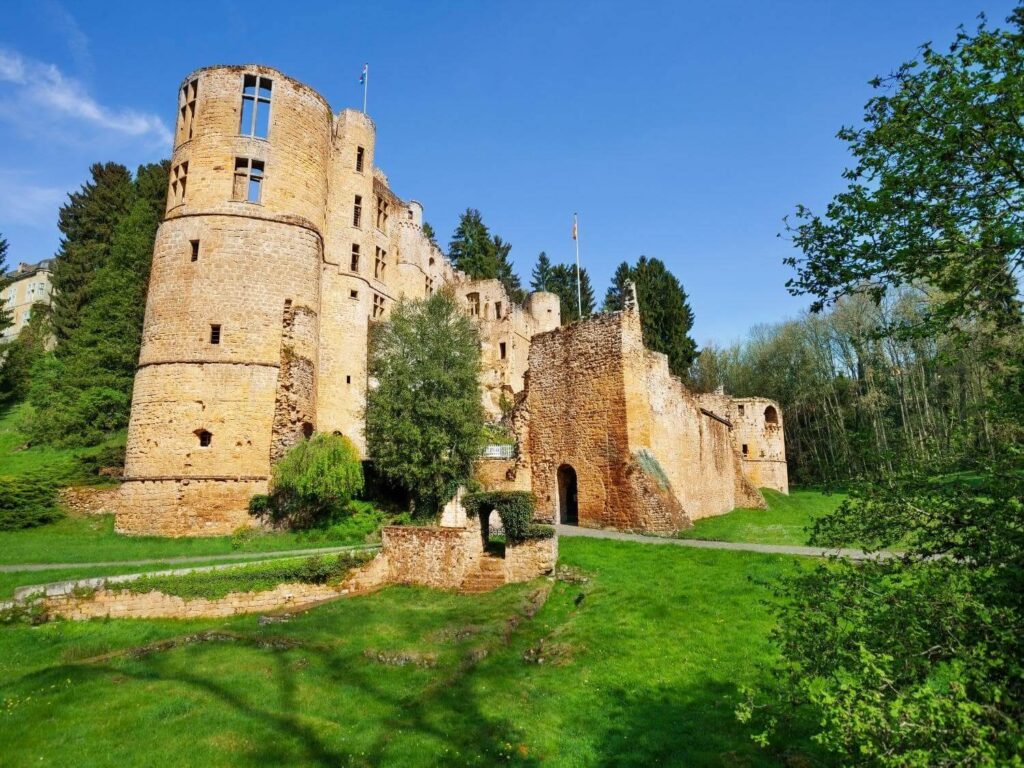
Of these, I highlight Saint Michael’s Church (in neo-Gothic style) and the Town Hall, as well as the dozens of streets with colorful houses, which make up the historic center. Like Echternach, the town of Beaufort is in the canton of Echternach and in the district of Grevenmacher (in Luxembourgish, Gréiwemaacher).
Like most destinations on this list of best places to visit in Luxembourg, local and international tourists visit Larochette (in Luxembourgish, Fiels; and in German, Fels) mainly for its castle. And it’s precisely from Larochette Castle that you get the best views over this Luxembourgish town!
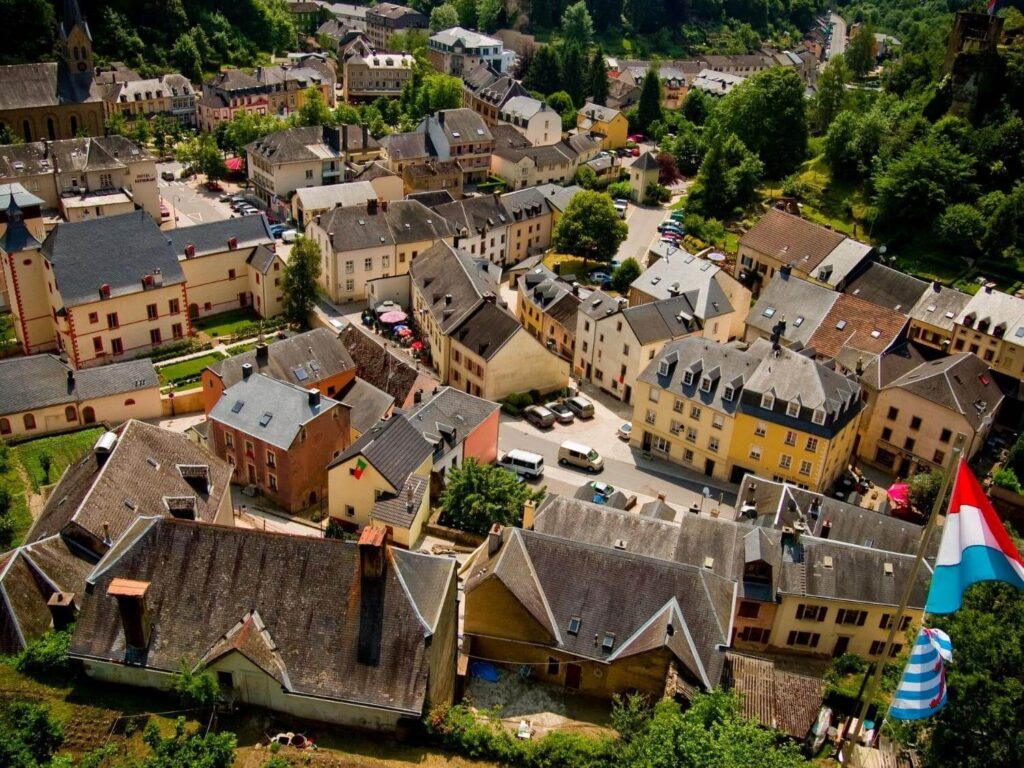
Larochette is located in the canton of Mersch, the only Luxembourg canton that doesn’t have international borders (with the exception of the canton of Luxembourg). In the historic center of the town, you can also visit Saint Donatus Church, the Small Textile Museum, the Cultural Center, and the Cross of Justice (in Bleech Square).
Clervaux (in Luxembourgish, Clierf or Cliärref; and in German, Clerf) is a town in the canton of the same name and in the district of Diekirch, in northern Luxembourg. Unfortunately, this destination became known for the Battle of Clervaux (in December 1944), one of many conflicts between Nazi forces and US troops.
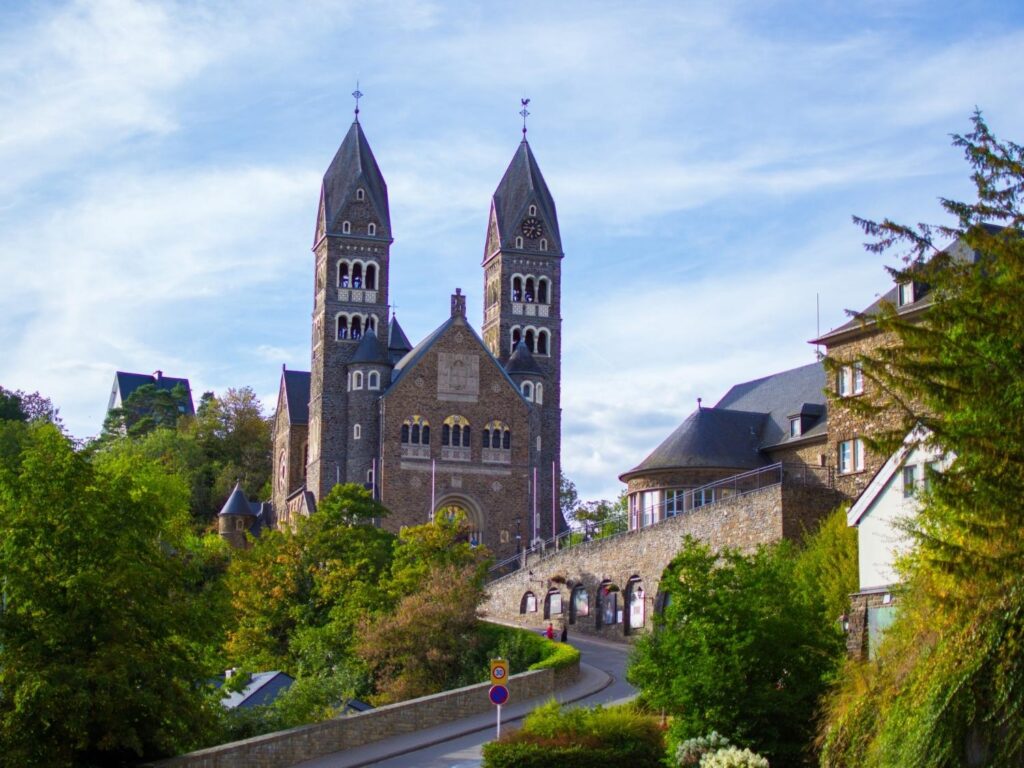
In this town, let me suggest a visit to the Clervaux Castle (where the Museum of the Ardennes Counteroffensive is located), the Benedictine Abbey of Saint Maurice and Saint Maurus , the “The Family Man” Museum (a museum with a famous photographic exhibition), the Church Saints-Côme-et-Damien, and to the Loreto Chapel.
The next stop on this guide to the best places to visit in Luxembourg is Ettelbruck (in Luxembourgish, Ettelbréck; and in German, Ettelbrück), located in the canton and district of Diekirch. If you want to visit Vianden on a day trip from the capital of Luxembourg, you’ll have to travel by train to Ettelbruck and then change to a bus in this same town!

Ettelbruck is quite a modern town compared to other destinations on this list. Examples of this are cultural spaces such as the Däichhal (a venue for events) or the CAPE- Center for the Plural Arts of Ettelbruck (a cultural center). Other than that, you can visit the General Patton Memorial Museum (named after an American soldier from the Second World War) and Saint Sebastian’s Church (the parish church of Ettelbruck).
Esch-sur-Sûre
Located in the canton of Wiltz and in the district of Diekirch, the town of Esch-sur-Sûre (in Luxembourgish, Esch-Sauer or Esch am Lach; and in German, Esch-Sauer) is one of the most charming destinations in this European country. Just like Vianden , this town grew up at the foot of the castle walls of Esch-sur-Sûre, surrounded by the river that gives it its name.

Although the castle is in ruins, it’s worth visiting for its panoramic views over the historic center of Esch-sur-Sûre and the surrounding green landscape. Other than that, there’s nothing quite like walking these winding streets, visiting the Church of the Nativity of the Virgin Mary, or hiking the hills across the River Sûre!
The village of Schengen is known for two reasons: for its wines and for the Schengen Agreement, which was signed here on June 14th, 1885. And as it’s located at the most southeastern point of Luxembourg (in the canton of Remich, district of Grevenmacher), it’s a bridge away from Germany and less than 1500 meters from the French border!
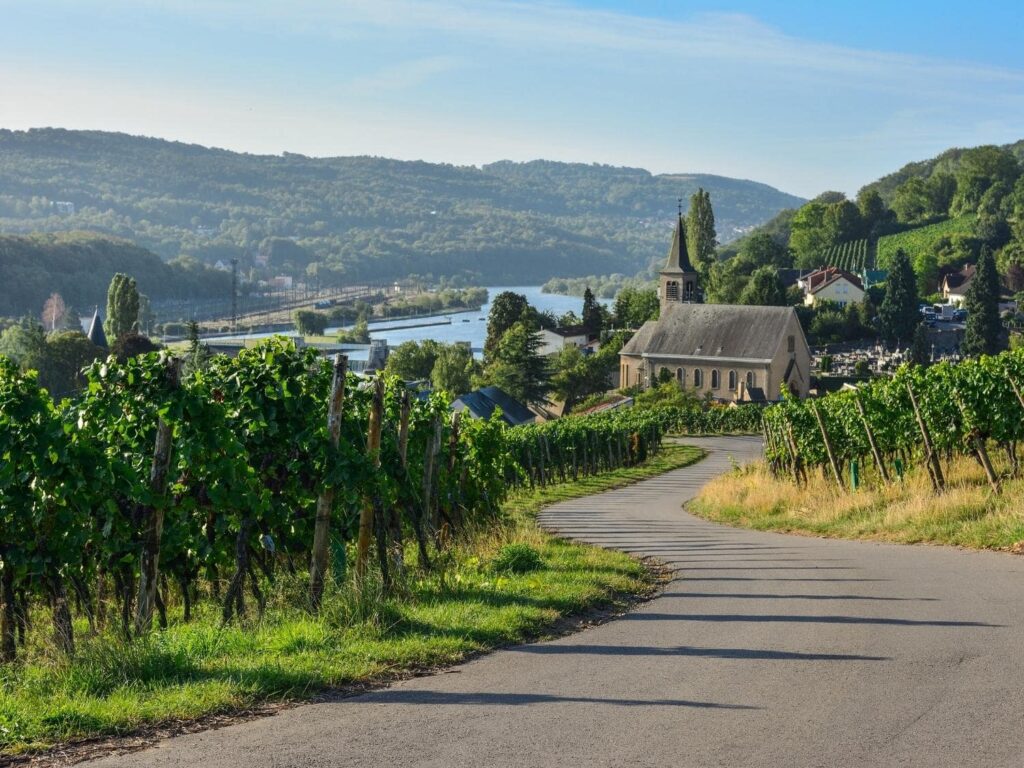
In the village of Schengen, you can admire the dozens of terraced vineyards, in addition to the Church of Saint Savior, the European Schengen Museum (or European Schengen Center), the Stars Square (a memorial park), the Peace Totems (installed next to the river Moselle) and, of course, the Schengen Gardens and Castle.
The last destination on this list of the best places to visit in Luxembourg is Mullerthal (in Luxembourgish, Mëllerdall; and in German, Müllertal), a tiny village in the canton of Echternach and the district of Grevenmacher. But, even though its size is really small, it’s impossible to dissociate this village from the homonymous region.
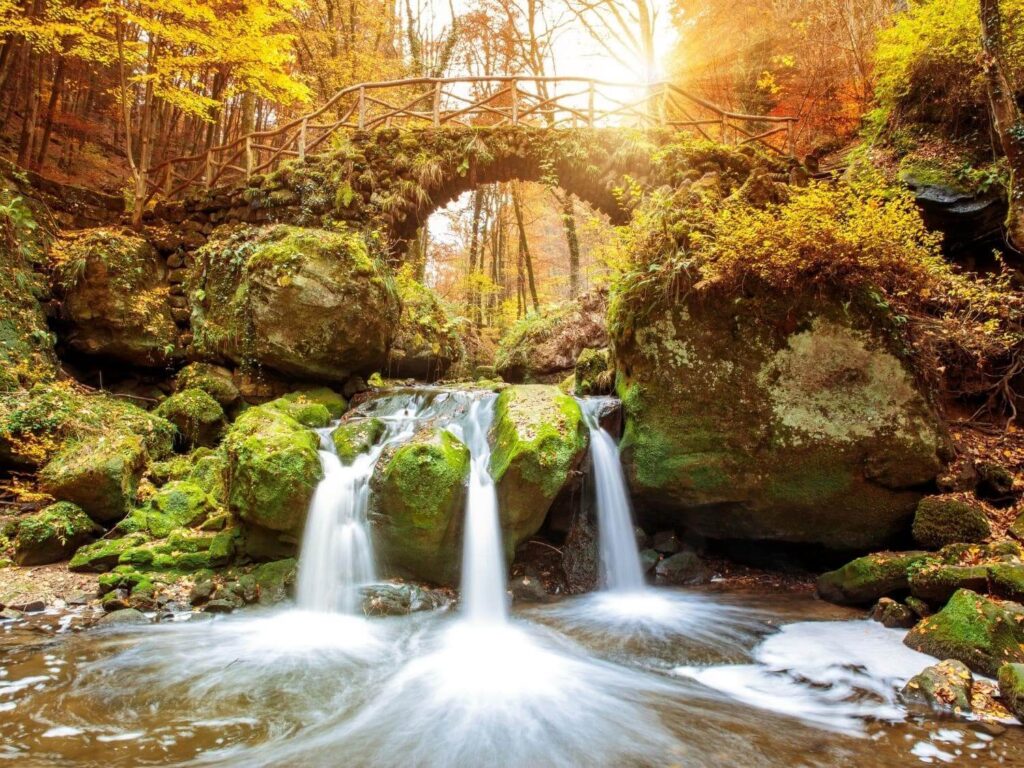
Now, the Mullerthal region has received the popular nickname of “Little Luxembourgish Switzerland” (in Luxembourgish, Kleng Lëtzebuerger Schwäiz; in French, Petite Suisse Luxembourgeoise; and in German, Kleine Luxemburger Schweiz), due to its geographical similarities with Switzerland. With several trails that run through dense forests, natural waterfalls, and secret caves, Mullerthal is a true paradise for outdoor and nature lovers!
Map of the Best Places to Visit in Luxembourg
Share this blog post on your social media!
More Posts about Luxembourg

1 Day In Vianden: The Perfect Vianden Itinerary
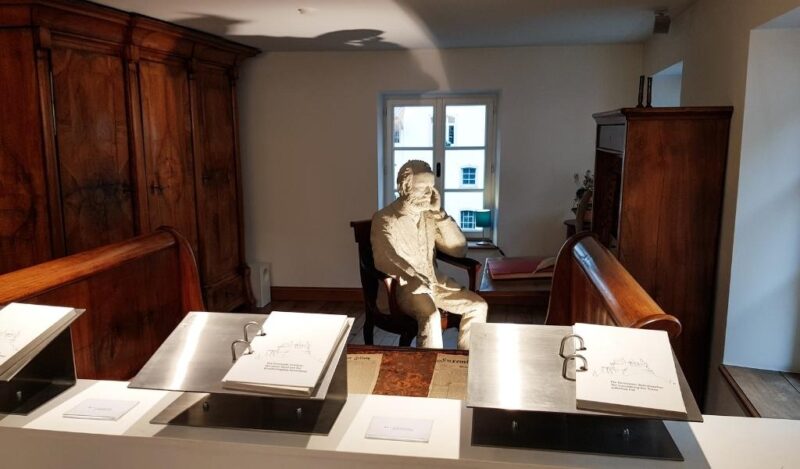
Victor Hugo House – Literary Museum: Best Tips For Visiting In 2024
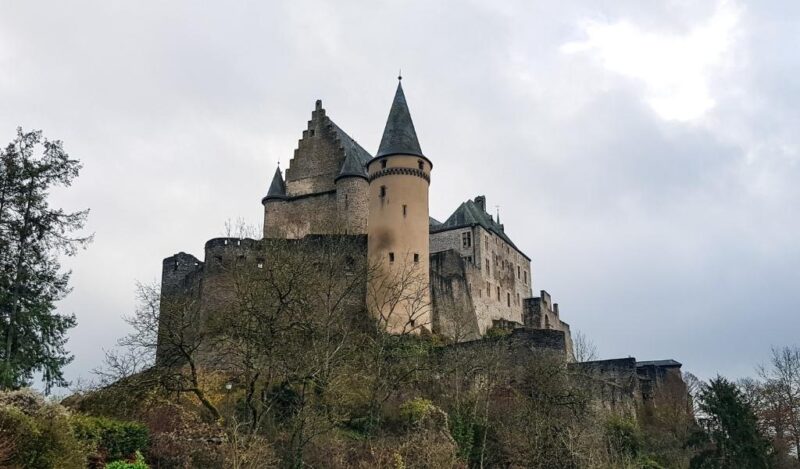
Vianden Castle: Best Tips For Visiting In 2024
Where do i make my reservations.
- Hotels and Accommodation: Booking.com
- Tours and Activities: GetYourGuide
What Photography Gear Do I Use?
- Camera Body: Fujifilm X-T4 Mirrorless
- Camera Lens: Fujinon XF 18-55 mm F2.8-4 R LM OIS
- Tripod: Manfrotto Compact Action
- Small Tripod: Manfrotto PIXI Mini
- Smartphone Adaptor: Manfrotto PIXI Clamp
- Memory Card: SanDisk 128GB Extreme PRO SDXC
This blog post uses stock photographs (Getty Images)
6 thoughts on “Best Places To Visit In Luxembourg”
I’ve never been to Luxembourg before. I’m sure like everyone else, I’ve been all around it, like to Germany, Belgium and France. Your photos look beautiful. I’ll have to put it on my list of places to visit
Thank you so much, I’m so glad I got to visit Luxembourg last year, it’s such a gorgeous country! 🙂
Been there, done these, I just came here to say the pictures are outstanding. 🙂
Awww, thank you so much for your lovely words! 🙂
Every photo of Luxembourg is so gorgeous! All of the views are amazing. The map of all the locations is so helpful as well, thank you for sharing!
You’re welcome, I’m glad you enjoyed this post! 🙂
Leave a Comment Cancel Reply
Your email address will not be published. Required fields are marked *
This site uses Akismet to reduce spam. Learn how your comment data is processed .
Privacy Overview
Nature & Outdoors
Food & drink, activities with children, grand tour de luxembourg, accommodation.

Most Beautiful Places to Visit in Luxembourg You Shouldn’t Miss
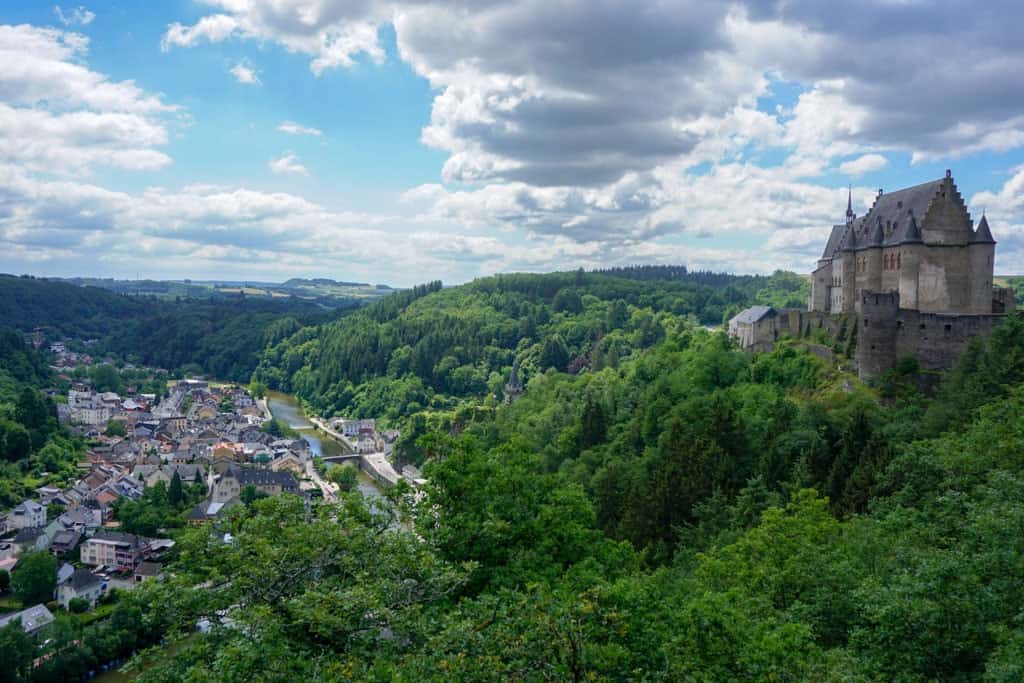
This post is also available in: French
Luxembourg is a tiny country (only 2,568 square kilometers) situated between France, Belgium, Germany. It’s a very rural country, with dense forests, deep gorges, and river valleys. The capital is Luxembourg City, where the majority of residents live. Luxembourg is a very wealthy country and was a founding member of the EEC (later European Union). The Schengen zone, an open-border policy among some European nations, is named for the Luxembourgish village of Schengen, where the agreements were signed. Luxembourg uses the euro currency and has since 1999, when the eurozone was established.
Luxembourg’s history is long and varied. Its founding dates to the 10th century and a tiny castle on a precarious edge. Over the centuries, and various rulers, the castle was rebuilt and expanded into an indefensible fortress. At different times, Luxembourg was under the leadership of the Holy Roman Emperor, the Burgundians, Bourbons, Habsburgs, Hohenzollerns, and Napoleon.
Table of Contents
Interesting facts about Luxembourg
Due in part to its history, its size, and its location, there are some very interesting things about Luxembourg and its citizens. For example, Luxembourg is the only Grand Duchy. They are ruled by the Grand Duke and a system of democratic government similar to the United States or the United Kingdom. Nearly half of Luxembourg’s workforce commutes to work in Luxembourg from another country, namely Belgium, Germany, or France. There are 17 kilometers of underground tunnels cut out of the solid rock beneath Luxembourg city. Visitors can traverse some of these tunnels because they make up part of The Bock and Casements. Just under half of the permanent residents in Luxembourg are foreign, most of them from Portugal or of Portuguese ancestry; the remaining percent is French, German, and other. Because of Luxembourg’s small size and proximity to multiple countries, Luxembourgers are typically tri-lingual. Many speak Luxembourgish, English, and then French or German, which are the other two national languages. Some may even speak Flemish, the language of neighboring Belgium.
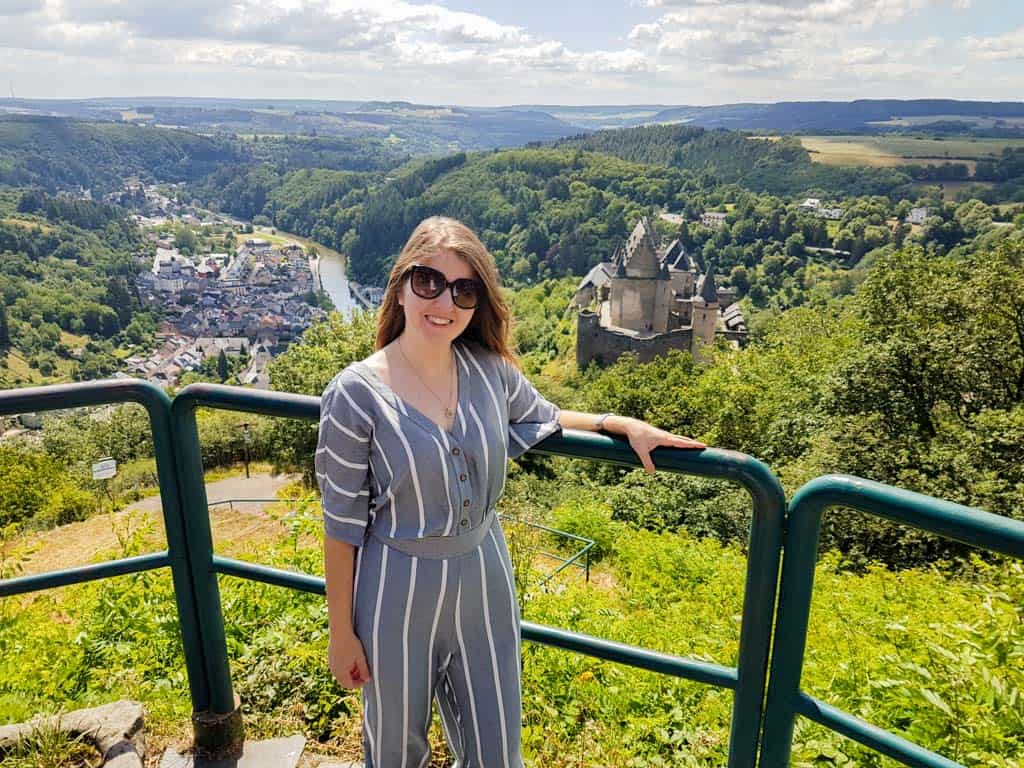
Places to visit in Luxembourg
There are numerous places to visit in Luxembourg, from the fascinating Luxembourg City to the rural towns and villages with scenic viewpoints, hiking trails, and terraced vineyards. This list will give you some ideas of the many things to do in Luxembourg.
Luxembourg City
Luxembourg City is the largest city and capital of the country. It has plenty of fun things to do, from historical attractions and scenic viewpoints to extensive art collections and archaeological finds. The city casements and bock, at the heart of the old quarter, are a unique look into the once-indefensible city. Visitors can walk through some of the old fortifications which once housed soldiers, horses, kitchens, and armories. Nearby, the Municipal Park and Fort Thungen also have some ruins of the former city. The Corniche opens up over the Grund area, which is a charming neighborhood along the river. Its picturesque buildings and architectural heritage attract a lot of visitors to the local cafes, restaurants, and shops in the area. Another popular district is the Clausen district, home to great nightlife and former home of many of Luxembourg’s breweries.
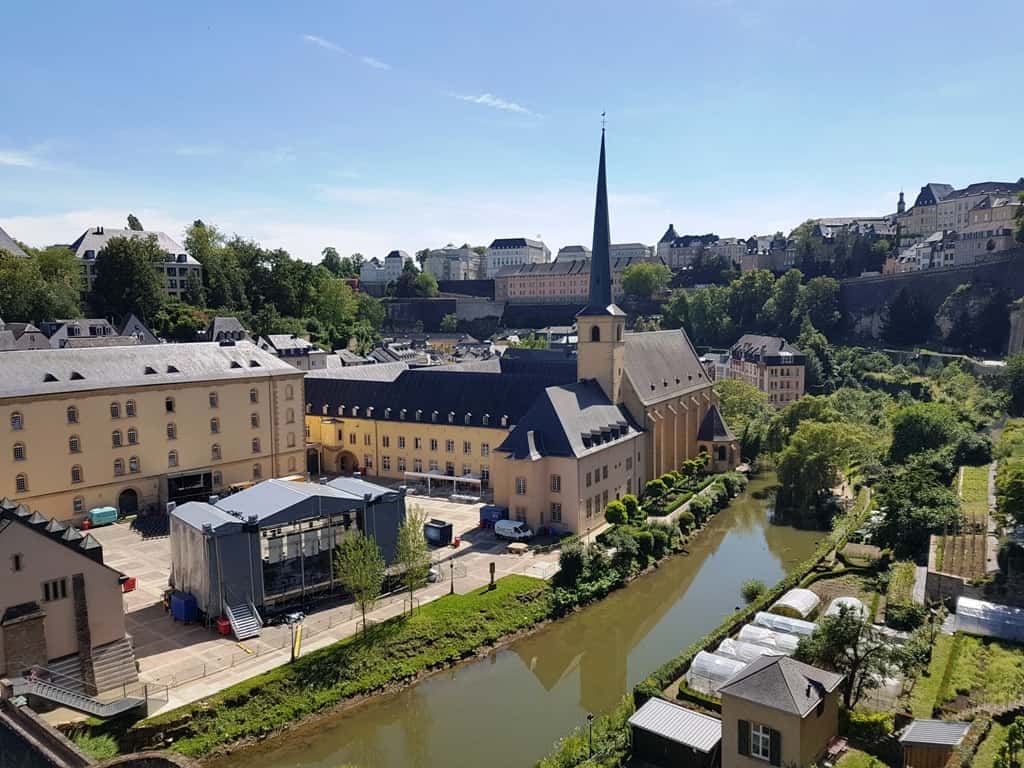
Town of Vianden
Vianden lies in Luxembourg’s northeast, along the border with Germany. At just under 50 kilometers from Luxembourg City, it’s a very easy day trip by either car or train. Its impressive fortress dates back to the 11th-14th centuries and was the seat of the Counts of Vianden for 400 years. The castle was restored recently and now boasts a museum tracing the royal families of Europe and their links to Vianden. A nearby house museum displays letters and sketches from Victor Hugo, who lived in Vianden for several months in 1871. Other monuments in the city include the castle belltower and ramparts, castle houses, and several historic churches. There is also a memorial on a hill near the castle that commemorates the liberation of the city in World War II. Vianden was the last city in Luxembourg liberated by the American army in 1945, following fierce battles between the Luxembourg Resistance and German/Axis forces. The town is surrounded by excellent hiking and many people come just to walk along the trails. In the summer, a chair lift takes people to high above the castle, which affords amazing views of the city from above.
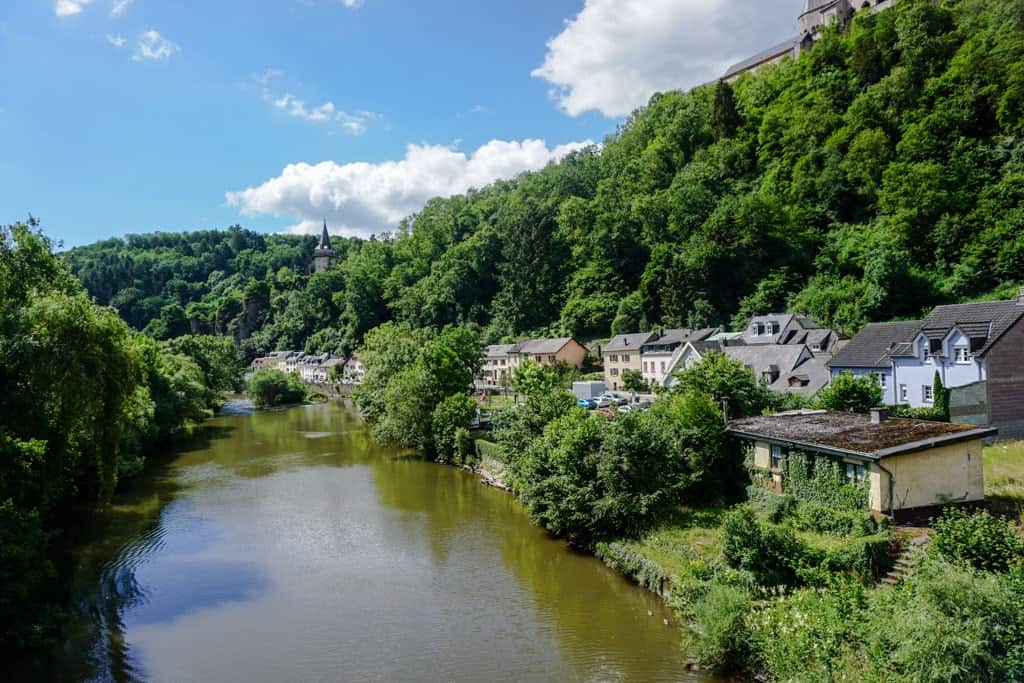
Visit the town of Echternach
Echternach is a city in eastern Luxembourg, on the German border near the city of Trier. It grew around the outer walls of the Abbey, which was founded in the 7th century by a Northumbrian (modern-day England) monk. Saint Willibrord is still remembered in Echternach in festivals and dancing on Whit Tuesday. The town had royal patronage and its library and scriptorium were famous across Europe. Following the French Revolution, the early manuscripts were auctioned off – some are now in Paris. The Abbey and Scriptorium still have some 11th century illuminated manuscripts. The Romanesque Basilica of St Willibrord, inside the Abbey walls, houses the saint’s tomb. Parts of the Abbey are Baroque style, having been rebuilt in the 18th century. The Orangerie was built during this time and at one point had hundreds of fruit trees in the garden. Much of the city was damaged in the Second World War when Echternach was the southernmost point of the German forces trying to retake Antwerp in the Battle of the Bulge. The town and its medieval watchtowers have since been restored.
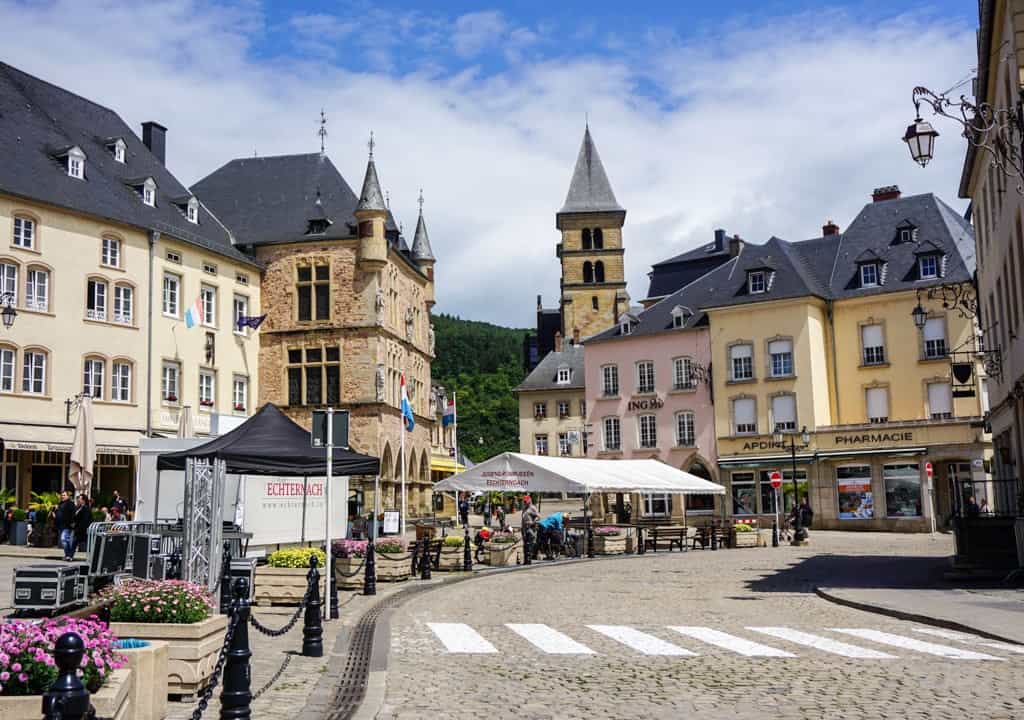
The Schiessentümpel waterfall
The Schiessentümpel waterfall is located in the Mullerthall region of Luxembourg, which is south of Echternach. It is a very wooded, hilly region with plenty of great hiking (see below). The waterfall is a popular attraction because of its picturesque stone bridge and large boulders. It is just a short walk from either the tourist center in town (1km) or from a larger parking area along the main road (500m).
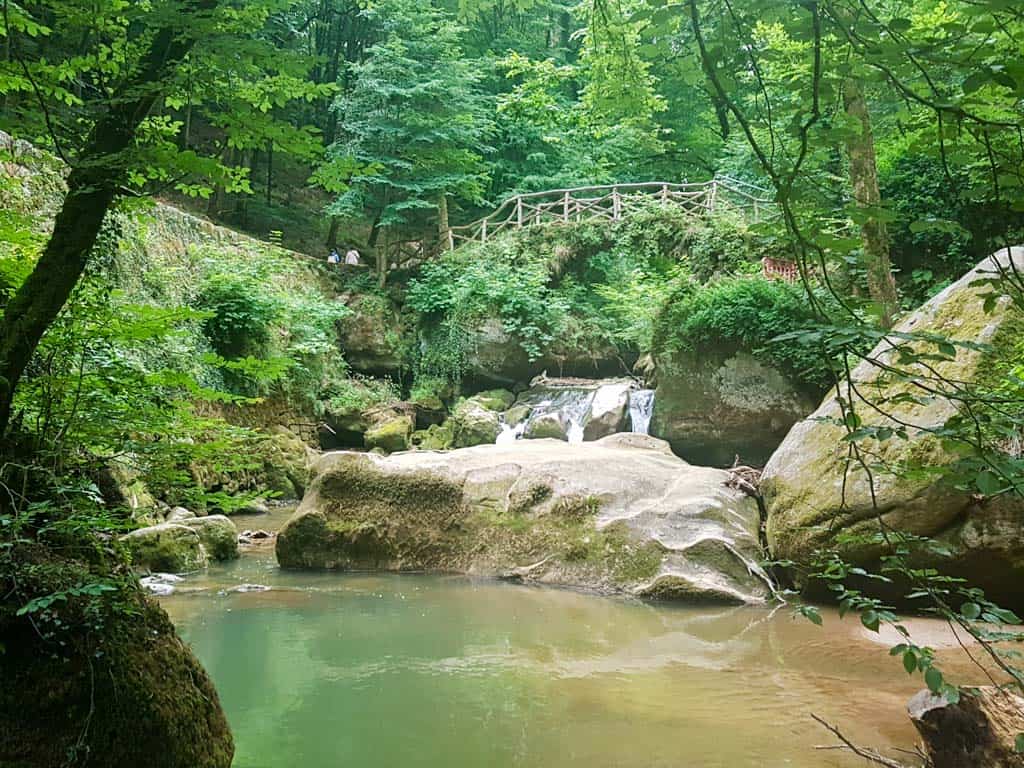
Hiking in the Mullerthal region
The Mullerthal region of Luxembourg is a wooded, hilly region with excellent hiking trails. It is known as Luxembourg’s Little Switzerland for its charming villages, hilly landscape, and unique rock formations. The major town of the region is Echternach (above) with its famous abbey. Most people come here for hiking. The Mullerthal Trail is a 112km long trail made up of three major loops and then four extra smaller portions. We did a four-kilometer hike on the C2 route, located in Bech, which includes incredible rock formations named Goldkaul, Goldfralay, and Eulenberg.
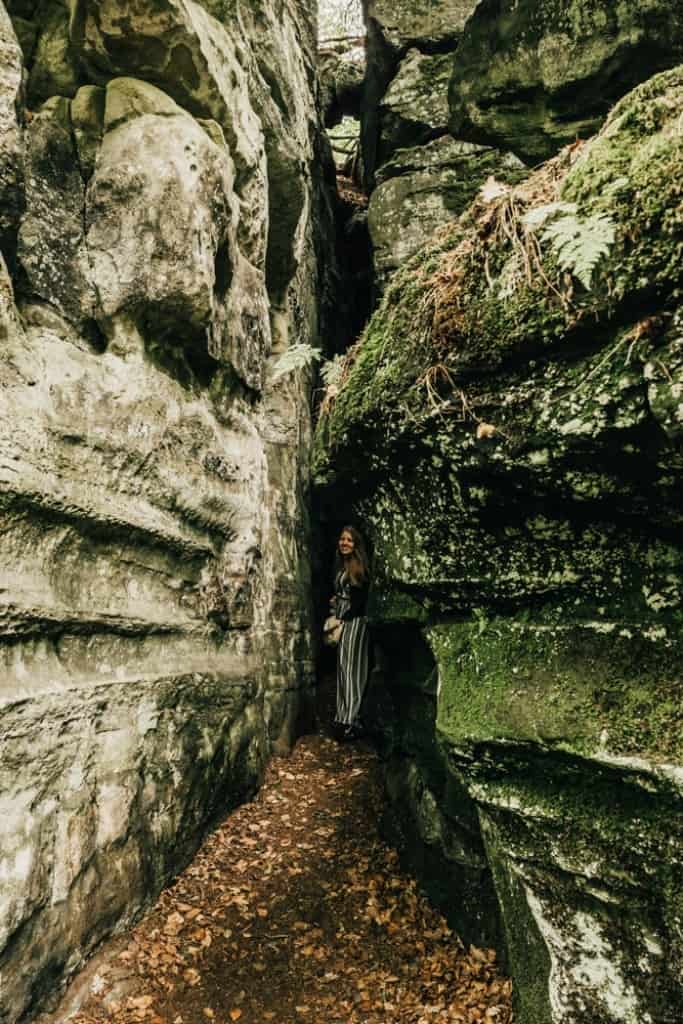
Visit Clervaux town and Castle
Clervaux is located in the far north of Luxembourg, along the Belgian border. It has only been a town for a little over 100 years, although the castle dates to the 12th century. It was one of the areas in the infamous Battle of the Bulge during World War II; the castle was destroyed by fire but has since been rebuilt. Inside Clervaux Castle there are several exhibitions on both the town and its role in the Second World War, along with a US Sherman tank and a German 88 anti-tank/anti-aircraft artillery piece. A second exhibition inside the castle display models of all the castle and palaces in Luxembourg. Finally, Edward Steichen’s Family of Man series is housed here. The Family of Man is a photography collection dedicated to the expression of humanity and what binds us as a collective world.
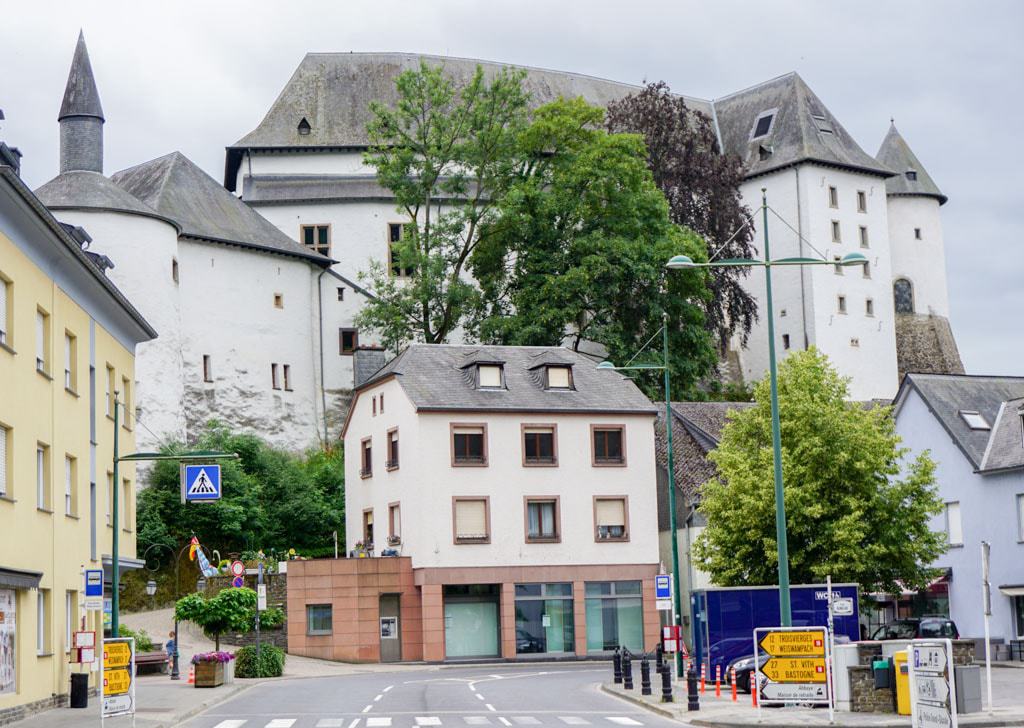
The oldest parts of Clervaux Castle date to the 12th century, while the remaining towers and large palace date to the 14th century. It sits above the town on a rocky outcrop along a bend in the River Clerve in Luxembourg’s north. The castle houses the town’s administrative offices as well as the museums listed above.
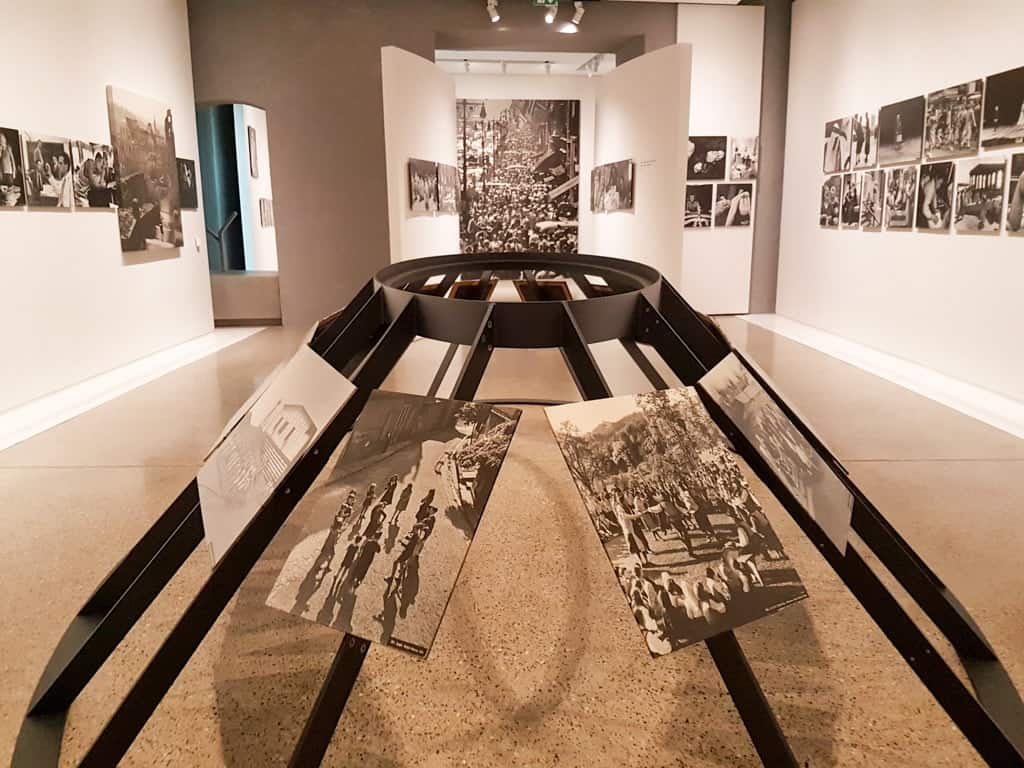
Explore the Valley of the Moselle
The Moselle River forms the Luxembourg-German border and is one of the world’s premier wine regions. It is most well-known for its Riesling wines. Popular activities here include wine-tasting at Grevenmacher and visiting the wine cellar caves at Bernard-Massard. Another great option is to take a river cruise, which highlights the interesting castles along the river. We went in the late afternoon, and unfortunately, the wine cellars were closed. Instead, we had some local wines and cheeses at Bistro Quai, in town along the Moselle River. There are plenty of great dining options along this tourist promenade.
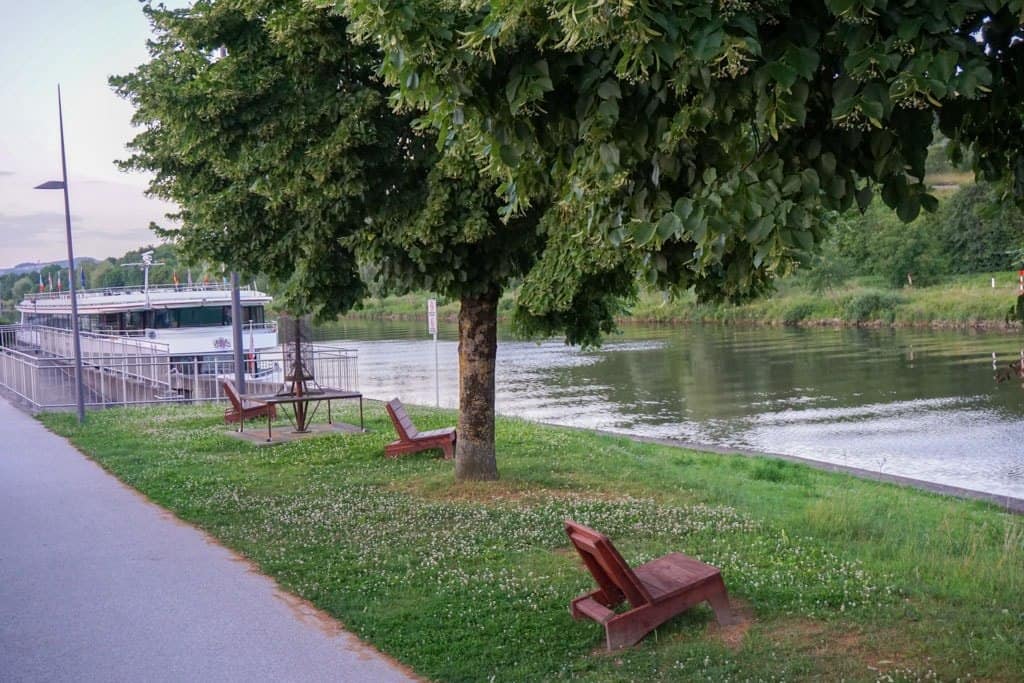
Go castle hunting
Luxembourg, like most of northern Europe, has a lot of castles. Everyone, from counts to dukes to kings, lived in castles or palaces in their respective towns. Today, many of these castles are tourist attractions, although only five of them are open to the public as true attractions. These include Vianden Castle, Beaufort Castle, Clervaux Castle, Bourglinster Castle, and Bourscheid Castle. There are also plenty of castle ruins to explore. The restored castles showcase the history and heritage of Luxembourg from medieval times onward. In Eisch, in the northern part of the country, avid walkers can explore the 37-km Valley of the Seven Castles, a national hiking trail that stops at seven majestic castles. It is possible to drive this if you prefer.
Check out some more castles in Luxembourg here.
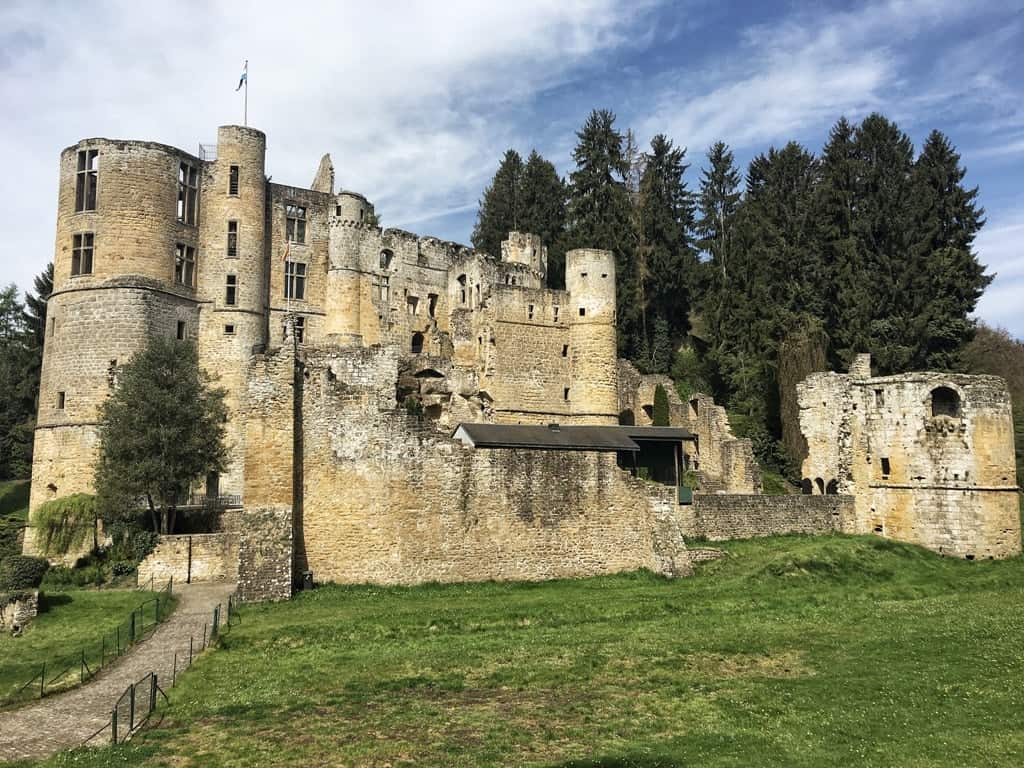
Why use the Luxembourg Card
The Luxembourg Card is a very good idea for travelers wishing to see a lot during their visit to Luxembourg. Unlike other tourist cards, it includes attractions across the country, making it perfect for those who plan to also explore some of the smaller towns in Luxembourg. Visitors can purchase either a 1, 2, or 3-day pass, which gains access to more than 60 different museums and attractions in Luxembourg. It even includes free public transportation!
I really enjoyed my visit to Luxembourg. The picturesque towns and villages were interesting and historical, the food and wine were both phenomenal, and the people were very welcoming. I enjoyed visiting the museums and castles in the city and surrounding towns, as well as hiking along the trails in the Mullerthal region. Our guides were knowledgeable and happy to share their home country with us, and I definitely recommend that Luxembourg be a stop on a European itinerary.
I was a guest of Visit Luxembourg but as always opinions are my own.
Sharing is caring!
2 thoughts on “Most Beautiful Places to Visit in Luxembourg You Shouldn’t Miss”
Amazing place! Thanks for sharing!
Leave a Comment Cancel reply
Save my name, email, and website in this browser for the next time I comment.

Touropia Travel
Discover the World
17 Top Tourist Attractions in Moscow
By Alex Schultz · Last updated on May 4, 2024
The capital of Russia is an incredible place to explore. Visitors to Moscow come away spellbound at all the amazing sights, impressed at the sheer size and grandeur of the city. Lying at the heart of Moscow, the Red Square and the Kremlin are just two of the must-see tourist attractions; they are the historical, political and spiritual heart of the city – and indeed Russia itself.
A fascinating city to wander around, stunning cathedrals, churches, and palaces lie side-by-side with bleak grey monuments and remains from the Soviet state. In addition to its plethora of historical and cultural tourist attractions, Moscow is home to world-class museums, theaters and art galleries.
Renowned for its performing arts, fantastic ballets and amazing circus acts, catching a show while in Moscow is a must. The wealth of brilliant restaurants, trendy bars, and lively nightlife means there is something for everyone to enjoy.
See also: Where to Stay in Moscow
17. Tsaritsyno Palace
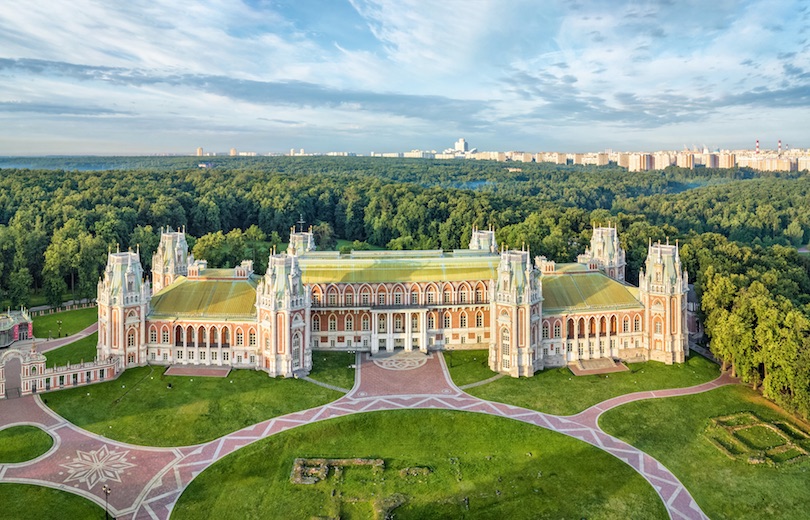
Once the summer residence of Catherine the Great, the stunning Tsaritsyno Palace is now a museum-reserve. The architecture is magnificent and there is a lovely park surrounding it for visitors to explore.
Located in the south of Moscow, the palace was commissioned in 1775 and recent renovations mean its lavish interior looks better than ever before with its elegant halls and beautiful staircases.
The exhibits on display look at the life of the empress as well as the history of Tsaritsyno itself. The huge palace grounds are also home to some other delightful buildings with the elegant opera house and wonderful brickwork of the Small Palace being particularly impressive to gaze upon.
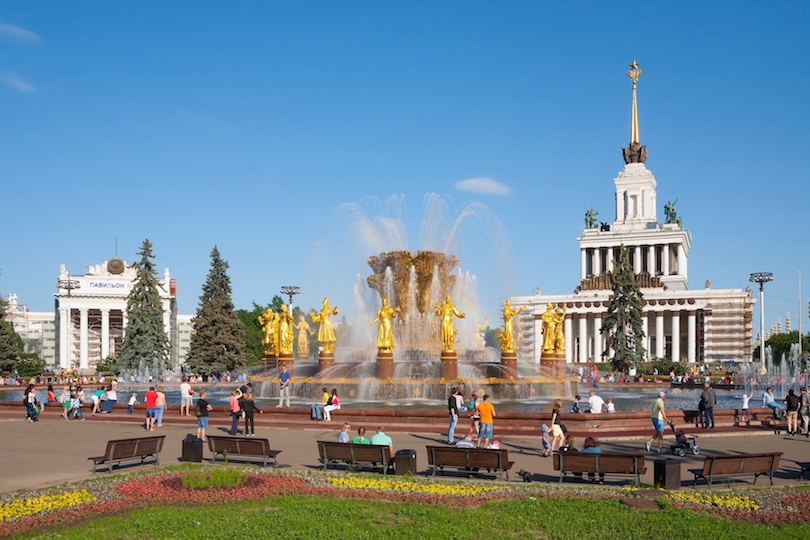
Starting out in 1935 as the ‘All-Union Agricultural Exhibition’, VDNKh has slowly morphed over the years into the fascinating open-air museum of today. Remarkably, over 400 buildings can now be found within its confines.
The huge park complex has numerous pavilions representing former Soviet republics on show, such as those of Armenia and Turkmenistan and the distinctive architecture of each of the buildings is always interesting to gaze upon. In addition to this there is the fascinating Memorial Museum of Cosmonautics which is dedicated to space exploration and the fun Moskvarium aquarium even offers you the chance to swim with dolphins.
With lots of eateries scattered about and numerous entertainment options such as horse-riding and zip-lining, there is something for everyone to enjoy; the Friendship of Nations fountain truly is wonderful.
15. Kremlin Armoury
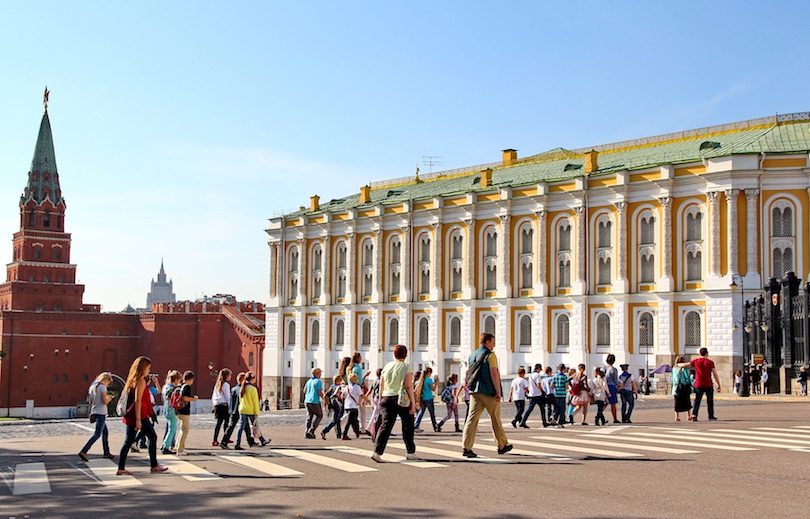
One of the oldest museums in the city, the Kremlin Armoury has a wealth of treasures; highlights include the ornate Grand Siberian Railway egg, the historic Cap of Monomakh and the stunning Imperial Crown of Russia which often has a crowd of tourists around it, jostling to take a photo.
Once the royal armory, there are loads of fascinating objects on display. Perusing the many sabers, jewelry, armor and more is as interesting as it is educational and entertaining and the swords are so finely crafted that you’ll almost wish you could pick up one and wield if yourself.
Established in 1851, the museum is situated in the Moscow Kremlin.
14. GUM Department Store

Standing for ‘Main Universal Store’ in Russian, GUM is stunning. Its wonderful skylights and beautiful facades mean it doesn’t look out of place alongside its illustrious neighbors on Red Square.
With over 200 shops, boutiques and upmarket eateries inside, it is a shopaholic’s heaven and concerned partners will be glad to find more affordable options alongside luxury brands such as Dior and Prada.
The main department store in the city, GUM was opened in 1893. The stunning architecture makes it well worth a visit even if shopping isn’t your thing.
13. Moscow Metro
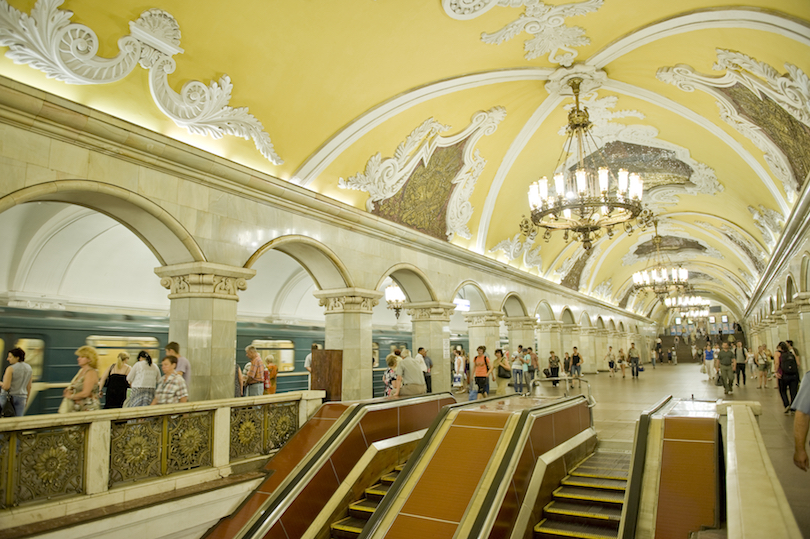
It’s not often that public transport looks like a work of art. So many stops on the Moscow Metro will astound visitors with their beauty and elegance.
Decked in marble and with frescoes covering the walls, the stations are amazing to gaze upon and are part of one of the longest metro systems in the world, with the first stations opened in 1935.
Using the metro is the quickest and easiest way to get around Moscow and braving the crowds of commuters is well worth it for the beauty all around you.
12. Arbat Street
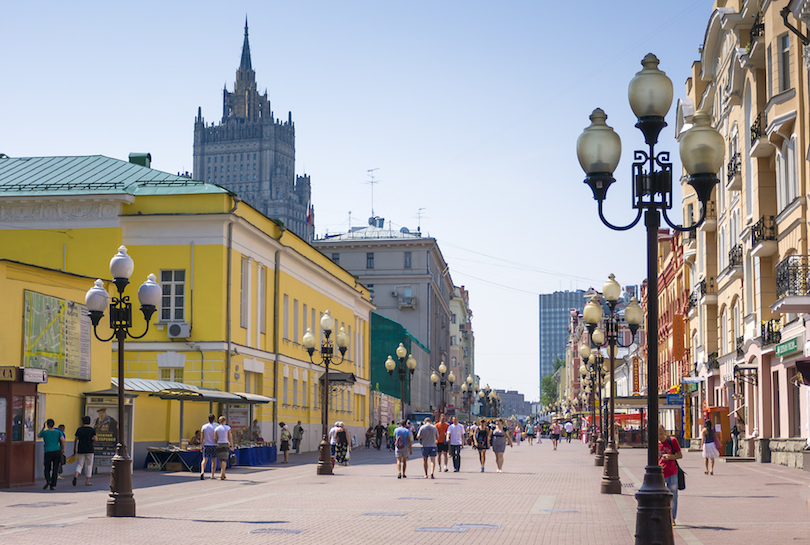
An elegant yet lively street, Arbat is full of impressive architecture and was once a popular place to live for aristocrats, artists, and academics.
A historic place, it is down Arbat Street that Napoleon’s troops are said to have headed on their way to capture the Kremlin.
Nowadays, there are many cafes, restaurants, and shops, as well as various monuments and statues to former residents such as Alexander Pushkin who was reputed to be a lover of the Russian Empress due to his massive influence in court.
11. Novodevichy Convent
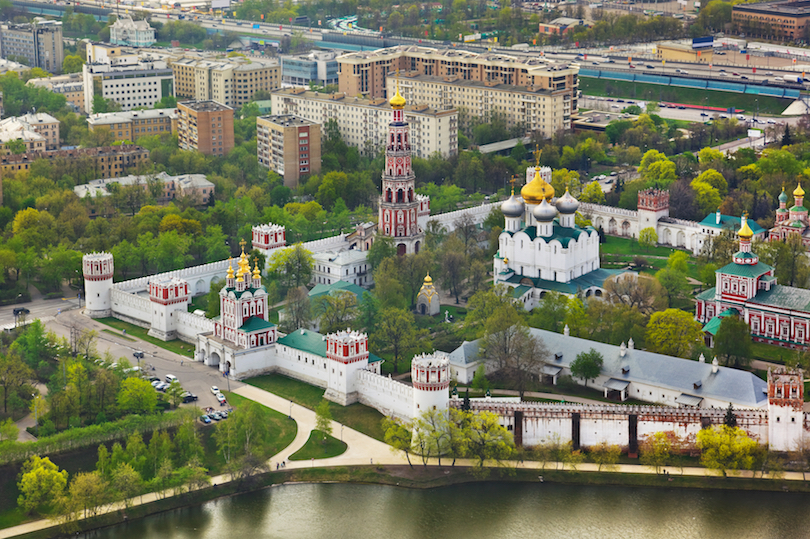
Drenched in history, the Novodevichy Convent is located in a striking building that was once a fortress. This captivating place is well worth visiting when in Moscow.
Founded in 1524, the convent houses four cathedrals; Smolensk Cathedral is the undoubted highlight due to its delightful 16th-century frescoes.
Wandering around the grounds is like stepping back in time. The Novodevichy Cemetery is where many famous leaders of the Soviet Union are buried, such as Yeltsin and Khrushchev.
10. Pushkin Museum
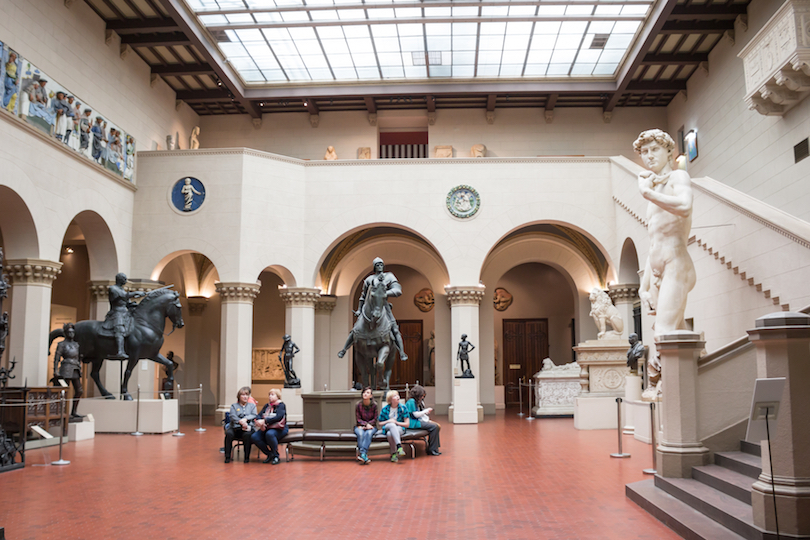
Despite its name, the Pushkin Museum of Fine Arts actually has no connection at all to the famous poet other than that it was named in his honor after his death. A delight to visit, its extensive collection focuses on European art with masterpieces by Botticelli, Rembrandt, and van Gogh all featuring.
Sculptures, graphic art, paintings and more can be found in its beautiful galleries; various sections look at themes and epochs such as the Renaissance, the Dutch Golden Age, and Byzantine art.
Among the many highlights are the clownish characters which can be found in Cezanne’s Fastnacht (Mardi Gras) and the twirling ballerinas who look so elegant in Degas’ Blue Dancers. Picasso’s Young acrobat on a Ball is also well worth checking out for its interesting use of shapes and colors.
9. Christ The Savior Cathedral
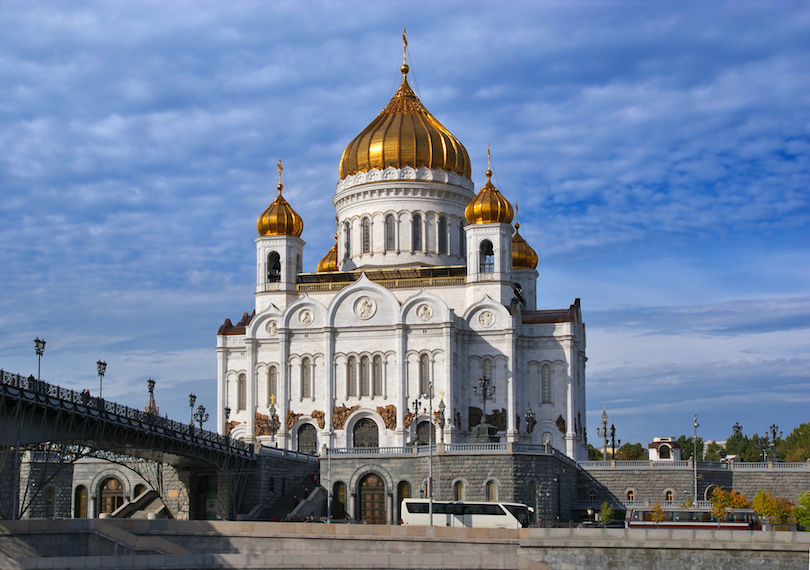
This gorgeous Russian Orthodox cathedral is located on the banks of the Moskva River, just a stone’s throw away from the Kremlin.
The church as it stands today was consecrated in 2000, as the original church that stood here was destroyed on the command of Josef Stalin in 1931 due to the anti-religious campaign.
With its delightful golden dome, spires and dazzling white facades, the Christ the Savior Cathedral is stunning. The interior is just as captivating to wander around, with its beautifully tiled floors and impressive altar.
8. Lenin Mausoleum
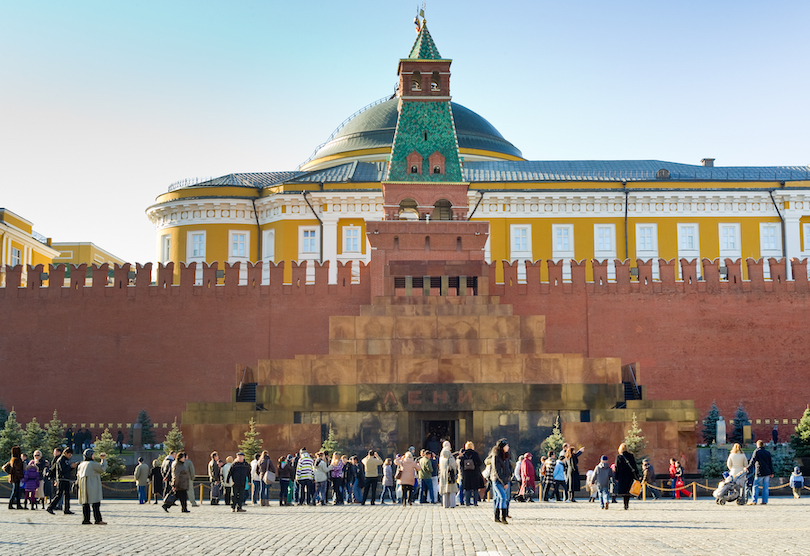
Opened to the public in 1924, Lenin’s Mausoleum is one of the most popular tourist attractions in Moscow. The red granite structure is located at the heart of the city in Red Square.
Lenin’s embalmed body lies in a glass sarcophagus; it is a somewhat eerie experience walking past the former leader of the Soviet Union but is well worth doing as you understandably can’t do it anywhere else in the world.
After visiting the mausoleum, head to the Kremlin wall right next to it for more graves of important communist figures such as Stalin and Brezhnev.
7. Tretyakov Gallery
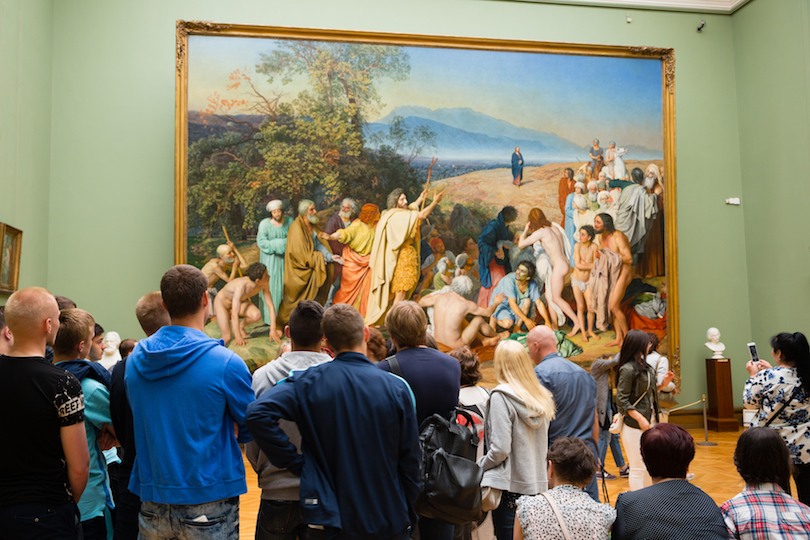
Home to the most extensive and impressive collection of Russian fine art in the world, the State Tretyakov Gallery is definitely worth visiting when in Moscow for the wealth of amazing art pieces that it has on display.
Having started out as the private art collection of the Tretyakov brothers, there are now over 130,000 exhibits. Highlights include the iconic Theotokos of Vladimir which you will almost certainly recognise despite probably not knowing the name and Rublev’s Trinity which is considered to be one of highest achievements in Russian art.
An absolute must for art lovers, the State Tretyakov Gallery will delight visitors with all that is has to offer.
6. Kolomenskoye
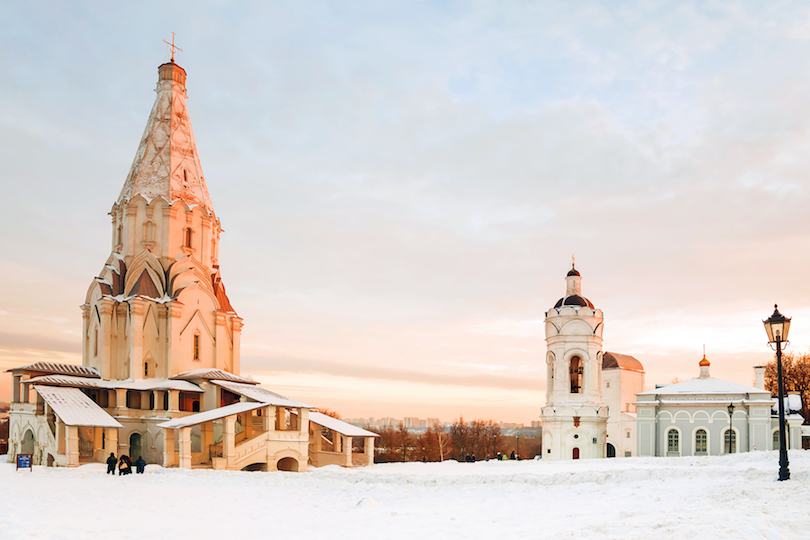
Once a royal estate, Kolomenskoye is now a museum-reserve and lies a few kilometers outside of the city center. A captivating place to visit, there is a plethora of history on show and the site overlooks the Moskva River.
Consisting of four historical sites, there are extensive gardens for visitors to explore, as well as loads of interesting old buildings, the former village of Kolomenskoye itself and the impressive Palace of the Tsar Alexey Mikhailovich – once considered the Eighth Wonder of the World by contemporaries.
Among the many stunning sights, it is the brilliantly white Ascension Church that is the undoubted highlight – dating back to 1532.
5. Gorky Park
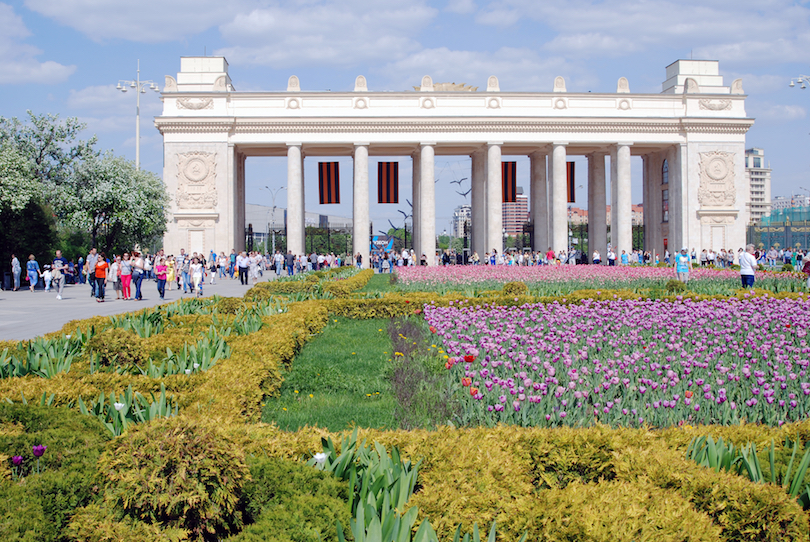
Lying alongside the Moskva River, the huge Gorky Park is a lovely place to visit. Its extensive gardens are home to numerous cultural institutions and visitors should definitely check out the Garage Museum of Contemporary Art and while the eclectic exhibits may not always feature such incredible sights as a balloon-covered rider on a zebra; they certainly always succeed in pushing back the boundaries of art.
Pop-up exhibitions and festivals can be found from time to time in the park itself and there is an open-air theatre and numerous eateries alongside a plethora of leisure activities.
Whether it’s cycling, table tennis or yoga that you are after or beach volleyball and rowing, Gorky Park certainly has it. In winter, there is a huge ice rink for visitors to enjoy.
4. Bolshoi Theatre
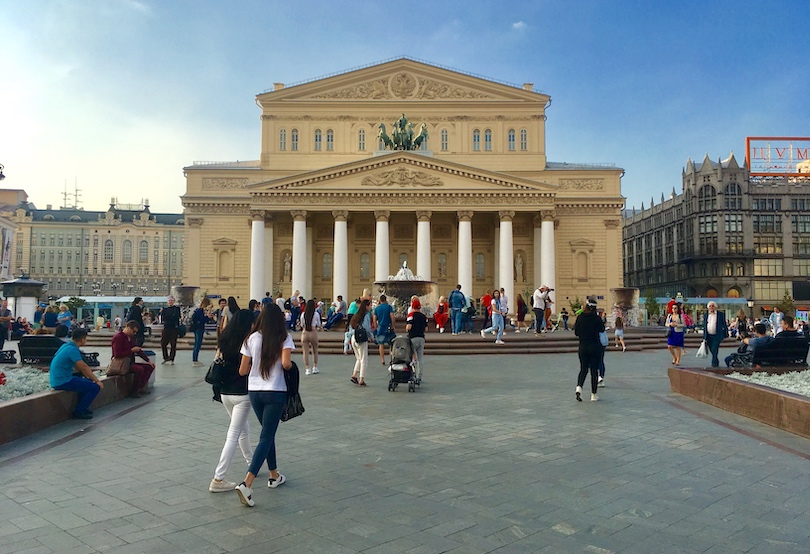
The Bolshoi Theatre is the main theater in the country. The amazing opera and ballet performances it has put on over the centuries go a long way in explaining Russia’s rich history of performing arts.
While the Bolshoi Ballet Company was established in 1776, the theater itself was opened in 1825. The glittering, six-tier auditorium is lavishly and decadently decorated; it is a fitting setting for the world-class performances that take place on its stage.
Spending a night watching a performance of such classics as The Nutcracker or Swan Lake at the Bolshoi Theatre is sure to be a memorable experience and the beauty all around you only adds to the sense of occasion.
3. Moscow Kremlin
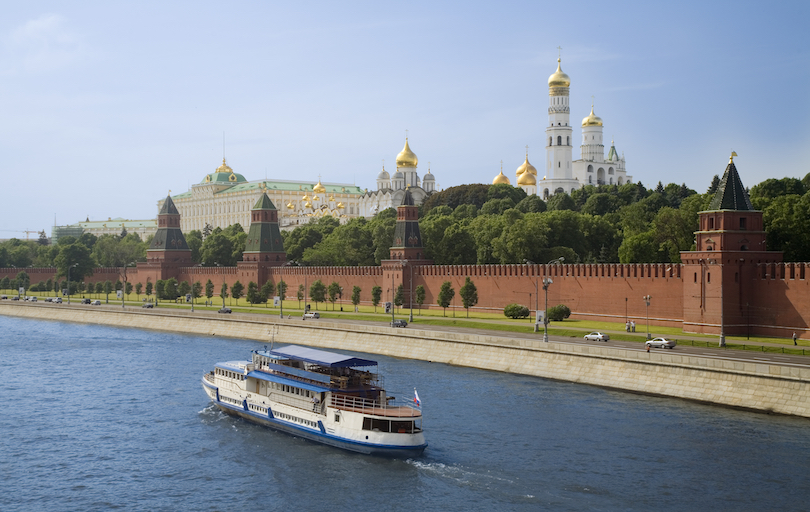
This famously fortified complex is remarkably home to five palaces and four cathedrals and is the historic, political and spiritual center of the city. The Kremlin serves as the residence for the country’s president. It has been used as a fort, and this fact is made clear by its sheer size. The Kremlin’s outer walls were built in the late 1400s.
Under Ivan III, better known as Ivan the Great, the Kremlin became the center of a unified Russian state, and was extensively remodeled. Three of the Kremlin’s cathedrals date to his reign that lasted from 1462-1505. The Deposition Church and the Palace of Facets were also constructed during this time. The Ivan the Great Bell Tower was built in 1508. It is the tallest tower at the Kremlin with a height of 266 feet (81 meters).
Joseph Stalin removed many of the relics from the tsarist regimes. However, the Tsar Bell, the world’s largest bell, and the Tsar Cannon, the largest bombard by caliber in the world, are among the remaining items from that era. The Kremlin Armory is one of Moscow’s oldest museums as it was established more than 200 years ago. Its diamond collection is impressive.
The Kremlin’s gardens – Taynitsky, Grand Kremlin Public and Alexander – are beautiful. The Kremlin has also served as the religious center of the country, and there is a tremendous number of preserved churches and cathedrals here. The collections contained within the museums include more than 60,000 historical, cultural and artistic monuments. Those who enjoy the performing arts will want to consider attending a ballet or concert at the State Kremlin Palace. Completed in 1961, it is the only modern building in the Kremlin.
2. Red Square
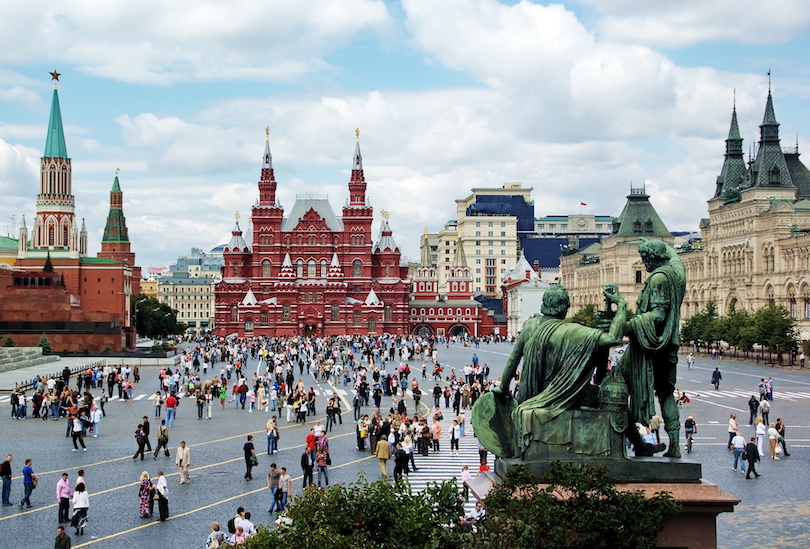
Lying at the heart of Moscow, Red Square is the most important and impressive square in the city. It is one of the most popular tourist attractions due to its wealth of historical sights and cultural landmarks.
Drenched in history, the huge square is home to incredible sights such as the Kremlin, St. Basil’s Cathedral and Lenin’s Mausoleum, among others. Consequently, it is not to be missed when in Moscow as it really is home to the city’s most stunning monuments.
It is here that many important moments in Russian history took place; the former marketplace has hosted everything from Tsar’s coronations and public ceremonies to rock concerts and Soviet military parades. Wandering around the massive square is a humbling experience and undoubtedly one of the highlights the city has to offer.
1. Saint Basil’s Cathedral
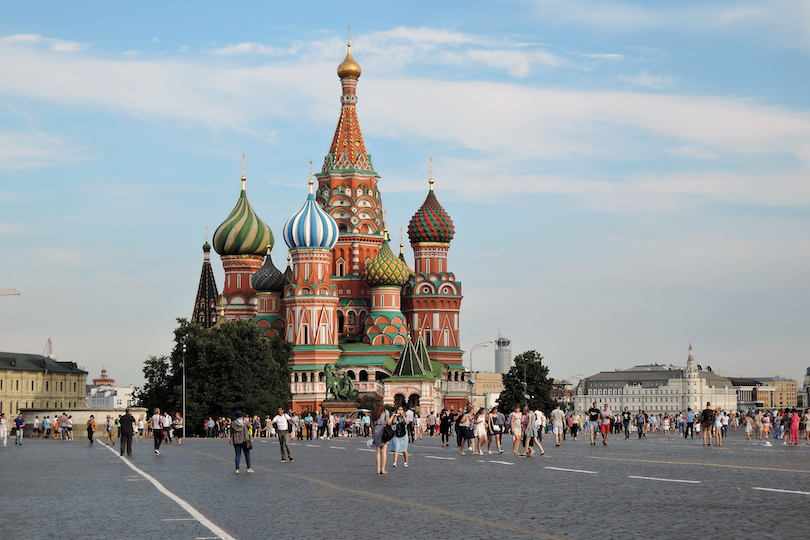
Located in the impressive Red Square, St. Basil’s Cathedral is gorgeous; its delightful spires appear as if out of a fairytale. The most recognizable building in the country, the cathedral is very much a symbol of Russia. No visit to Moscow is complete without having taken in its unique and distinctive features.
Ivan the Terrible ordered the cathedral’s construction in the mid-16th century, and legend holds that Ivan put out the architect’s eyes so that he would be unable to build another cathedral more glorious than St. Basil’s. Designed to resemble the shape of a bonfire in full flame, the architecture is not only unique to the period in which it was built but to any subsequent period. For various reasons, both Napoleon and Stalin wanted to destroy the cathedral but fortunately did not succeed.
Known for its various colors, shapes and geometric patterns, St. Basil’s Cathedral houses nine different chapels that are all connected by a winding labyrinth of corridors and stairways. On the lower floor, St. Basil’s Chapel contains a silver casket bearing the body of St. Basil the Blessed.
Throughout the cathedral are many beautiful murals, frescoes, wooden icons and other art works and artifacts. Outside the cathedral is a lovely garden with the bronze Monument to Minin and Pozharsky, who rallied an all-volunteer Russian army against Polish invaders during a period of the late 16th century known as the Times of Troubles.
Share this post:

10 Most Amazing Destinations in Eastern Russia
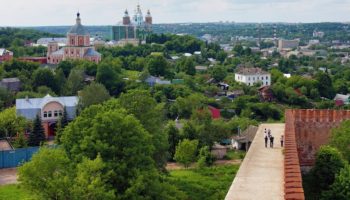
15 Best Cities to Visit in Russia
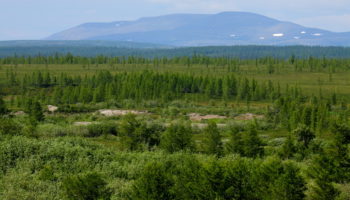
9 Most Beautiful Regions in Russia
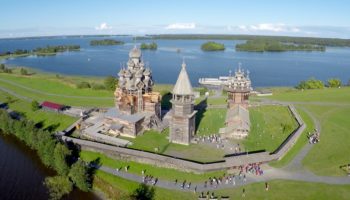
10 Top Tourist Attractions in Russia
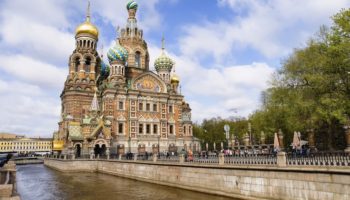
15 Top Tourist Attractions in Saint Petersburg, Russia
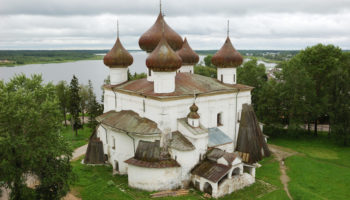
14 Most Scenic Small Towns In Russia
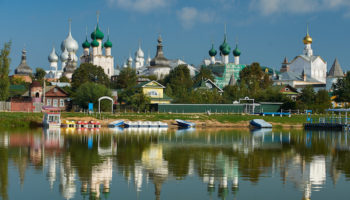
10 Best Places to Visit in Russia
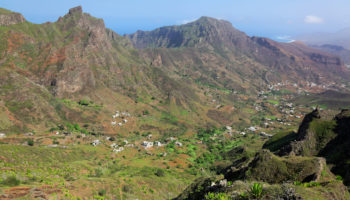
10 Best Cape Verde Islands

A Guide to Climbing Santa Ana Volcano in El Salvador
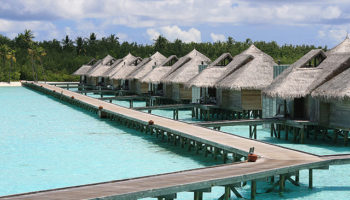
10 Best Luxury Resorts in the Maldives

- gouvernement.lu
- Ministère des Affaires étrangères et européeennes
Visa and immigration
- Share on Facebook
The conditions to enter and stay in Luxembourg do not only depend on the length of the planned stay but also on the country of origin of the foreign national who is making the request.
- List of countries whose citizens are exempted from the visa requirement
- List of countries whose citizens require a visa
Duration of stay
- Short stay (less than 90 days)
- Long stay (more than 90 days)
Special cases
- International protection
- Status as a stateless person
Information on the processing of personal data
The collection of personal data required for all visa applications, including photographs and fingerprints, is compulsory for the examination of a visa application. Failure to provide this information will result in the application being declared inadmissible.
The responsible authorities
Ministère des Affaires étrangères et européennes, de la Défense, de la Coopération et du Commerce extérieur Bureau des Passeports, Visas et Légalisations 6 Rue de l’Ancien Athenée L-1144 Luxembourg [email protected]
Data protection officer: [email protected]
The legal basis
The legal basis for the collection and the processing of personal data is set out in Regulation (EC) 767/2008 (VIS Regulation), Regulation (EU) 2019/1155 amending Regulation (EC) 810/2009 establishing a Community Code on Visas (Visa Code) and Council Decision 2008/633/JHA.
The processing of personal data
The data will be shared with the competent authorities of the Schengen Member States [1] and processed by these authorities for the purposes of decision-making on a visa application. Data and information relating to the decision taken on an application, whether to annul, revoke or extend an existing visa, will be entered and stored in the Visa Information System (VIS) for a maximum period of five years, during the course of which they will be accessible to the visa authorities and to the authorities responsible for carrying out visa checks at the external borders and within the Member States, to immigration and asylum authorities in the Member States, in order to check whether the conditions for entry, stay and legal residence on the territory of the Member States are fulfilled, to identify persons who do not meet or no longer meet these conditions, to examine an asylum application and to determine responsibility for this examination. Under certain conditions, the data will also be made available to the designated authorities of the Member States and to Europol for the purposes of the prevention, detection and investigation of terrorist offences and other serious criminal offences.
Third countries and international organisations
Personal data may also be transferred to third countries or international organizations in order to verify the identity of third-country nationals, including for return purposes. Such transfers only take place under certain conditions [2]. You can contact the authority responsible for data processing to obtain further information on these conditions and how they are met in your particular case.
Transparency and rights of the data subject
Under the General Data Protection Regulation [3] and the VIS Regulation [4], you have the right to obtain access to your personal data, including a copy thereof, as well as the identity of the Member State that transmitted it to the VIS. You also have the right to have inaccurate or incomplete personal data corrected or completed, to have the processing of your personal data restricted under certain conditions, and to have personal data that has been processed unlawfully deleted.
You may address your request for access, rectification, restriction or erasure directly to the authority responsible for processing the data. Further details on how you may exercise these rights, including the related remedies according to the national law of the State concerned, are available on its website and can be provided upon request.
You may also address your request to any other Member State. The list of competent authorities and their contact details is available at:
https://edpb.europa.eu/about-edpb/about-edpb/members_en#member-lu
Lodge a complaint
You are also entitled to lodge at any time a complaint with the national data protection authority of the Member State of the alleged infringement, or of any other member State, if you consider that your data have been unlawfully processed.
The data protection authority of Luxembourg is :
National Commission for Data Protection (CNPD), 15 Boulevard du Jazz, L-4370 Belvaux Phone: (+352) 26 10 60 – 1
Web contact: https://cnpd.public.lu/en/support/contact.html Website: https://cnpd.public.lu/en/commission-nationale.html
[1] Austria, Belgium, Bulgaria, Croatia, Czechia, Denmark, Estonia, Finland, France, Germany, Greece, Hungary, Iceland, Italy, Latvia, Liechtenstein, Lithuania, Luxembourg, Malta, the Netherlands, Norway, Poland, Portugal, Rumania, Slovakia, Slovenia, Spain, Sweden and Switzerland.
[2] Article 31 of Regulation (EC) 767/2008 (VIS Regulation)
[3] Article 15 to 19 of Regulation (EU) 2016/679 (GDPR)
[4] Article 38 of Regulation (EC) 767/2008 (VIS Regulation)
The Visa Information System (VIS) is a system for exchanging data on short-stay visas between Schengen states. The main objectives of the VIS are to facilitate visa application procedures and external border controls, and to enhance the security of the Schengen area.
The aim of the global VIS introduction process is to provide applicants with greater protection against identity theft, and to prevent document fraud and the practice of "visa shopping". Fingerprints are widely used in the EU as one of the most secure means of identification. The use of biometric data to identify a visa holder is a faster and more precise way of identifying a visa holder by the border police.
The VIS incorporates a central database, a national interface in each Schengen state, and a communication infrastructure between the central database and the national interface. The VIS is linked to the national visa systems of all the Schengen States via the national interfaces, enabling the competent authorities in the Schengen States to process data on visa applications and on visas either issued, refused, annulled, revoked or extended.
The VIS consists of two systems: the VIS database, which conducts alphanumeric searches, and the Automated Fingerprint Identification System (AFIS), which compares fingerprints received with the database and returns a positive or negative response, including any matches.
The main central VIS is located in Strasbourg (France) and a back-up central VIS, capable of providing all the functions of the main central VIS, is located in Sankt Johann in Pongau (Austria).
The VIS is continually processing information gathered by the consulates of the Schengen states. For instance, information entered locally by visa authorities can be available in the VIS in a matter of minutes. The VIS offers rapid verification services for visa holders at border crossings, taking just a few seconds to conduct a visa check.
The Commission was responsible for developing the central database, the national interfaces and the communication infrastructure between the central VIS and the national interfaces. Individual Schengen States are responsible for the development, management and operation of their respective national systems.
The EU Agency for large-scale IT systems, eu-LISA, is responsible for the operational management of VIS.
What is the legal basis for the VIS?
The main acts constituting the legal framework of the VIS are the following:
· Council Decision 2004/512/EC of 8 June 2004 establishing the Visa Information System (VIS), OJUE L 213, 15.6.2004, p. 5.
· Regulation (EC) No 767/2008 of the European Parliament and of the Council of 9 July 2008 concerning the VIS and the exchange of data between Member States on short-stay visas (VIS Regulation), OJUE L 218, 13.8.2008, p. 60.
· Council Decision 2008/633/JHA of 23 June 2008 concerning access for consultation of the VIS by designated authorities of Member States and by Europol for the purposes of the prevention, detection and investigation of terrorist offences and of other serious criminal offence, OJUE L 218, 13.8.2008, p. 129.
· Regulation (EC) No 81/2009 of the European Parliament and of the Council of 14 January 2009 amending Regulation (EC) No 562/2006 as regards the use of the Visa Information System (VIS) under the Schengen Borders Code, OJUE L 35, 4.2.2009, p. 56.
· Regulation (EC) No 810/2009 of the European Parliament and the Council of 13 July 2009 establishing a Community Code on Visas (Visa Code), OJUE L 243, 5.9.2009, p. 1.
What are the consequences of VIS in practice for visa applicants?
First-time visa applicants must always present themselves in person when submitting their application to provide their photograph and fingerprints.
The photograph is currently scanned from an existing paper photograph. At a later stage, the photograph will be taken digitally at the moment of the application.
For all new subsequent applications submitted within a period of 59 months, the fingerprints can be copied into the VIS from the previous application file.
Nevertheless, it should be stressed that in the event of reasonable doubt as to the applicant's identity, the consulate will collect fingerprints again within the 59 months referred to above. Moreover, the applicant may ask for fingerprints to be taken if, at the time the application is submitted, it is not immediately possible to confirm that the fingerprints were taken within the aforementioned period.
The biometric data of visa applicants may be collected by Schengen State consulates and external service providers (such as VFS, TLS and others), but not by commercial intermediaries (e.g. travel agencies).
Upon arrival at the Schengen external border, visa holders must provide their fingerprints for comparison with those registered in the VIS, at the request of the Schengen States' border control authorities. Searches in the VIS by Schengen border guards are based on the visa sticker number in combination with fingerprints.
Visa holders whose fingerprints have not been taken at the time of application, on the grounds that they have been exempted from this requirement, will not be asked to provide fingerprints at the border.
What happens to those who refuse to provide fingerprints for various reasons?
As a result, a Schengen visa will not be issued if biometric data is not provided. However, in accordance with Article 13(7) of the Visa Code, there are several categories of citizens who are not required to provide this data, as indicated in the FAQ under Question 18.
If I already have a biometric passport, do I also need to submit my fingerprints?
Yes, holders of biometric passports must also appear in person when applying for a short-stay Schengen visa for the first time to submit their fingerprints.
How is my biometric data protected in the VIS?
Strict data protection rules are defined in the VIS regulation and are subject to control by national and European data protection authorities.
Data is kept in the VIS for a maximum of five years from the visa expiry date, if a visa has been issued, or from the new visa expiry date, if a visa has been extended, or from the date on which a refusal decision is issued by the visa authorities.
All individuals have the right to obtain communication of the data recorded in the VIS concerning them from the Schengen State which entered the data in the system. Individuals may also request that inaccurate data concerning them be rectified, and that illegally recorded data be deleted.
In each Schengen State, the national supervisory authorities independently monitor the processing of personal data recorded in the VIS by the respective Schengen State.
The European Data Protection Supervisor monitors the data processing activities of the VIS Management Authority.
Which data are registered in the VIS?
The visa authorities in each Schengen state register data relating to short-stay visa applications (i.e. applications to stay in the Schengen area for 90 days or less) in the VIS. Data relating to national long-stay visas are not yet recorded in the VIS.
Upon reception of an application, the visa authorities of the relevant Schengen State create an application file in VIS and record the alphanumeric data contained in the Schengen visa application form, the applicant's digital photograph and the ten fingerprints collected.
If the applicant is traveling in a group, the travelers' application files will be linked in the VIS. If a previous application has been registered for the same applicant, the two applications will also be linked in the VIS.
Once a decision has been taken on the application (visa granted/refused) or post-decision (annulment, revocation, extension), the information is recorded in the VIS by the visa authorities of the relevant Schengen States. Once the visa has been issued and all applicant data - including fingerprints - have been recorded in the VIS, a code is inserted in the visa sticker.
Which authorities have access to the VIS?
The visa authorities of the Schengen States have access to the VIS for both data recording and consultation. Application and decision data are entered into the VIS by the visa authorities of the Schengen State responsible for examining the application or taking the decision. The data entered by one Schengen State can then be consulted by the visa authorities of all the other Schengen States, for example when examining another application from the same applicant.
Other authorities from the Schengen States have access to the VIS for consultation only.
National border authorities have access to the VIS in order to verify the identity of the visa holder, the authenticity of the visa and whether the conditions for entry into the territory of the Schengen states have been fulfilled. VIS checks at the Schengen area's external borders, with systematic fingerprint verification, are compulsory, except in a limited number of cases.
The national authorities responsible for carrying out identity checks on the territory of the Schengen states have access to the VIS in order to verify the identity of the visa holder, the authenticity of the visa and whether the conditions for entry, stay or residence on the territory of the Schengen states have been fulfilled.
National asylum authorities have access to the VIS to determine the Member State responsible for examining an asylum application in accordance with Regulation (EC) No 343/2003 and for processing the application.
Europol has access to the VIS for consultation purposes as part of the prevention, detection and investigation of terrorist offences and other serious criminal offences.
National law enforcement authorities have access to VIS data for the same purposes, provided certain legal conditions are respected: access to VIS data must be necessary in a particular case, and there must be reasonable grounds for considering that consultation of the data will make a substantial contribution to the prevention, detection and investigation of terrorism and other serious crimes.
As a general rule, VIS data may not be transferred or made available to a third country or international organization. By way of derogation, certain data recorded in the VIS (name, nationality, travel document number, residence) may be communicated to a third country or international organization when a specific case requires it to prove the identity of a third-country national, including for return purposes.
For detailed information on how to exercise your access rights, please visit the following site:
https://cnpd.public.lu/en/particuliers/vos-droits/droit-acces.html
CITIZENS’ RIGHTS IN THE FIELD OF THE SCHENGEN INFORMATION SYSTEM
1. General presentation of the Schengen Information System
The Schengen Information System (SIS) was implemented as a search system for persons and objects by the Convention implementing the Schengen Agreement of 19 June 1990. The SIS was designed as a compensatory measure to the lifting of internal border controls with the aim of ensuring a high level of security in the European Union’s area of freedom, security and justice.
The system includes alerts
i. On persons, namely :
- Third-country nationals subject to a return decision,
- Third-country nationals subject to a refusal of entry and stay,
- Persons wanted for arrest for surrender or extradition purposes,
- Missing persons, including :
- Children at risk of abduction by a parent, a family member or a guardian, o Vulnerable persons who need to be prevented from travelling,
- Persons sought to assist with a judicial procedure,
- Persons for discreet, inquiry or specific checks,
- Unknown wanted persons for the purpose of identification under national law.
ii. On objects:
- For discreet, inquiry or specific checks,
- For seizure or use as evidence in criminal proceedings.
2. Legal framework applicable to SIS as well as to data protection
The SIS is established by the following legal instruments:
- Regulation (EU) 2018/1860 of the European Parliament and of the Council, of 28 November 2018 on the use of the Schengen Information System for the return of illegally staying thirdcountry nationals,
- Regulation (EU) 2018/1861 of the European Parliament and of the Council of 28 November 2018 on the establishment, operation and use of the Schengen Information System (SIS) in the field of border checks, and amending the Convention implementing the Schengen Agreement, and amending and repealing Regulation (EC) No 1987/2006,
- Regulation (EU) 2018/1862 of the European Parliament and of the Council of 28 November 2018 on the establishment, operation and use of the Schengen Information System (SIS) in the field of police cooperation and judicial cooperation in criminal matters, amending and repealing Council Decision 2007/533/JHA, and repealing Regulation (EC) No 1986/2006 of the European Parliament and of the Council and Commission Decision 2010/261/EU.
The following legal instruments are applicable in terms of data protection:
- Loi du 1er août 2018 relative à la protection des personnes physiques à l'égard du traitement des données à caractère personnel en matière pénale ainsi qu’en matière de sécurité nationale (Law of 1 August 2018 on the protection of natural persons with regard to the processing of personal data in criminal and national security matters, transposing into national law the Directive 2016/680 of the European Parliament and of the Council of 27 April 2016 on the protection of natural persons with regard to the processing of personal data by competent authorities for the purposes of the prevention, investigation, detection or prosecution of criminal offences or the execution of criminal penalties, and on the free movement of such data, and repealing Council Framework Decision 2008/977/JHA) (hereafter « LPD »),
- Regulation (EU) 2016/679 of the European Parliament and of the Council of 27 April 2016 on the protection of natural persons with regard to the processing of personal data and on the free movement of such data, and repealing Directive 95/46/EC (General Data Protection Regulation, hereafter « GDPR »)
- Loi du 1er août 2018 portant organisation de la Commission nationale pour la protection des données et du régime général sur la protection des données » (Law of 1 August 2018 on the organisation of the National Data Protection Commission and the general data protection framework).
3. Information to be made available to the individual on data processing in the SIS
i. The data controller
In Luxembourg, the data controller for the data processing in the context of the SIS is the Grand Ducal Police, represented by its General Director.
ii. The purposes of the processing
The purposes of the processing for which the personal data are intended are the following:
- Prevention, investigation, detection or prosecution of criminal offences or the execution of criminal penalties, including the safeguarding against and the prevention of threats to public security,
- External border control,
- Immigration control.
iii. The categories of personal data that may be processed
The personal data that may be included in a SIS alert are listed in article 20 of Regulation 2018/1861 and of Regulation 2018/1862 as well as in article 4 of Regulation 2018/1860.
iv. The recipients or categories of recipients
National competent authorities of the Schengen Member States that can access the SIS and are thus to be considered as recipients are listed in article 34 of Regulation 2018/1861 and articles 44 to 47 of Regulation 2018/1862. In addition to these national competent authorities, SIS can also be accessed by Europol, Frontex and Eurojust in accordance with articles 35 and 36 of Regulation 2018/1861 and articles 48 to 50 of Regulation 2018/1862.
v. The storage period
Alerts on persons and on objects shall be kept only for the time required to achieve the purposes for which they were entered.
The above-mentioned regulations foresee several time limits for a periodic review of the need for the storage of personal data with the possibility to renew the alerts.
Alerts on persons subject to a discrete, inquiry or specific check as well as certain categories of missing persons have in principle to be re-examined at the latest after one year.
Alerts on persons subject to a return decision, subject to a refusal of entry and stay, sought to assist with a judicial procedure as well as unknown wanted persons for the purpose of identification have in principle to be re-examined at the latest after three years.
Alerts on persons wanted for arrest for surrender or extradition purposes as well as certain categories of missing persons are in principle to be re-examined at the latest after five years.
Alerts on objects are in principle to be re-examined at the latest after ten years.
vi. The rights of individuals
Concerning the right for information provided under articles 13 and 14 of the GDPR, respectively article 12 of the LPD, the Grand-Ducal Police refers to the information on its website under the heading « Data protection » (Link https://police.public.lu/fr/support/protection-des-donnees-a-caractere-personnel.html).
As foreseen in article 53 of Regulation 2018/1861 and article 67 of Regulation 2018/1862, individuals have the right to introduce
- A request for access to their data,
- A request for correction of inaccurate data,
- A request for deletion of unlawfully stored data,
In accordance with articles 15, 16 and 17 of the GDPR and 13 and 15 of the LPD.
These requests may be submitted to any Member State of the European Union operating the system and any of the four Schengen Associated States (Switzerland, Norway, Liechtenstein and Island). The receiving Member State will process the request according to their own national procedures in place as well as according to the European rules in force.
With regard to deadlines for processing such requests, it should be noted that both the requests for access and the requests for rectification and deletion must be answered within 1 month (article 53(4) of the Regulation 2018/1861 and article 67(4) of the Regulation 2018/1862, both referring to article 12(3) of the GDPR).
Regarding the form, Member States will have to strive to respect both the form (letter or email) of the requestor as well as the language used by them, this of course as far as possible. In general, the Grand Ducal Police processes access requests as well as correction or deletion requests if they are introduced in any of the administrative languages of the country (Luxembourgish, French, German) or in English.
In accordance with article 12(6) of the GDPR and article 11, paragraph 5 of the LPD, the Grand-Ducal Police must have sufficient guarantees to establish with certainty the identity of the person requesting information, so as not to prejudice the rights of others. The following documents have therefore to be enclosed to the requests:
For a request from an individual:
- A signed letter,
- A copy of an identity document (identity card or passport).
For a request from an individual on behalf of another individual:
- A power of attorney duly signed by both parties,
- A letter signed by the represented party,
- A copy of an identity document of represented party (identity card or passport),
- A copy of an identity document of the representing party (identity card or passport).
For a request from an attorney:
- A power of attorney duly signed by the client and the attorney,
- A copy of an identity document of the client (identity card or passport),
- A copy of an identity document of the attorney (identity card or passport),
- A copy of an attorney card or equivalent.
It goes without saying that the transmission of a copy of an identity card or passport via the Internet may present a certain risk in the event of possible abuse by a third party (for example, interception).
Finally, in exceptional circumstances and in accordance with article 53(3) of the Regulation 2018/1861, article 67(3) of the Regulation 2018/1862, and articles 14 and 15, paragraph 4 of the LPD, a Member State may take a decision not to provide information to the data subject, in whole or in part, in order to safeguard national security, defence and public security, or for the prevention, investigation, detection and prosecution of criminal offences, for as long as such a restriction constitutes a necessary and proportionate measure in a democratic society with due regard for the fundamental rights and legitimate interests of the data subject concerned.
vii. Right to lodge a complaint or to seek judicial remedy
In case the reply which is provided by the Grand Ducal Police does not satisfy the requestor, the latter has the right to file a complaint with the national supervisory authority, namely the « Commission nationale pour la protection des données », in accordance with article 77 of the GDPR, respectively in accordance with article 44 of the LPD. The national supervisory authority may be contacted under the following contact details:
Commission nationale pour la protection des données (CNPD)
Service des réclamations
15, Boulevard du Jazz
L-4370 Belvaux
Luxembourg.
Furthermore, the requestor also has the right to seek judicial remedy within three months after the receipt of the final reply at the Administrative Court of Luxembourg (Tribunal administratif) with the assistance of an attorney.

IMAGES
VIDEO
COMMENTS
Grand Ducal Palace, Luxembourg City Grand-Ducal Palace, Luxembourg City. The Grand Ducal Palace (Groussherzogleche Palais) is a must-see landmark in Luxembourg City. This gorgeous Renaissance building dates from 1572 and serves as the official residence of the country's reigning monarch, Grand Duke Henri.It was built as the city's original city hall in 1572, a role it served until 1795 before ...
The heart of the country has been listed as a UNESCO World Heritage site and each region holds a ton of surprises for its visitors. Lets explore the best places to visit in Luxembourg: 1. Echternach. Source: Photomann7 / shutterstock. Echternach. This cosy little town near the German border is the oldest in all of Luxembourg.
3. Mullerthal Trail. 486. Hiking Trails. The Mullerthal Trail is the leading hiking track in the Mullerthal Region - Luxemburg's Little Switzerland. The Mullerthal Trail with more than 112 km is composed by 3 big tracks (Route 1, Route 2…. 2024. 4. Luxembourg American Cemetery Memorial.
What are the most popular tourist places in Luxembourg. Luxembourg is a treasure trove of attractions, offering a diverse range of sights and experiences that cater to all types of travellers. If you love castles, there are about 50 (!) to visit in the Grand Duchy, if you are more of a nature lover, there are also unmissable paradises, and if ...
Le Chemin de la Corniche. 1,595. Historic Walking Areas. Scenic walkway through the lower town, lined with historic houses and panoramic views of rolling hills and a meandering river. Ideal for tranquil strolls and photography. See ways to experience (17) 2024. 2. Vianden Castle.
Destinations Discover the capital and the regions Let yourself be surprised by Luxembourg's diversity and enjoy getting to know the multifaceted character of this small land of short distances. Your next destination is never far away, and each area has its own special charm. ... Luxembourg for Tourism 6, rue Antoine de Saint-Exupéry L-1432 ...
Here are the 25 best things to do in Luxembourg …. 1. Wander around the Old Quarter. Source: RPBaiao / shutterstock. Old Quarter. The Old Quarter in Luxembourg City is the perfect place to kick off a trip to this delightful country and is also a UNESCO World Heritage Site.
Discover Luxembourg, a small, multicultural country in the heart of Europe that is open to the world. You can travel to the capital city of the Grand Duchy of Luxembourg by train from Belgium, France and Germany. The capital is also a 20-minute bus ride from Luxembourg Airport. Plan your stay with the VisitLuxembourg App, maps and travel guides ...
While the ravines of Luxembourg City may look intimidating at first, it's a small place of just 132,000 and is easily walkable. And in news that always brings a surprised smile to first-time visitors' faces, all public transit in Luxembourg (buses, trams, and trains) has been free of charge since February 2020.
The Moselle River is Luxembourg's wine country and one of its most scenic nature spots. Tourists flock here in the summer and enjoy a glass of Riesling or the local Elbling on riverbank terraces ...
1. Bourscheid Castle. The Bourscheid Castle represents the diverse history and culture of Luxembourg. Perched above the River Sûre, it's undeniably one of the most beautiful places in Luxembourg. The castle's walls and turrets, having withstood the test of time, narrate tales of bygone eras, each epoch leaving an indelible imprint on its stones.
Built from sandstone on the site of a Roman camp, the five-storey medieval…. Ramborn Cider Company. Luxembourg. Over 100 varieties of apples and pears are used by Ramborn to make its unique ciders and perries, found at cafes, bars and restaurants throughout…. Abbaye d'Echternach.
12. Stay in the romantic town of Wiltz. Wiltz is a small town in the northwest of Luxembourg that's big on romance. Situated on the picturesque banks of the River Wiltz, the town is home to a fairytale-esque castle, rustic homestays, excellent restaurants, and beautiful countryside.
The capital city of Luxembourg, a UNESCO World Heritage Site, and a significant European financial center, the City of Luxembourg, is one of those Luxembourg destinations tourists would want to spend most of their time in. The Adolphe Bridge, Place d'Armes, Notre Dame Cathedral, and Grand Ducal Palace are among the top places to visit in ...
Vianden. Vianden (in Luxembourgish, Veianen or Veinen) is, simultaneously, a town and the capital of the canton of the same name, located in the district of Diekirch and the region of Oesling (also called Ösling), in the northeast of the Grand Duchy of Luxembourg.. Despite having just over two thousand inhabitants, the small town is one of the most tourist destinations in Luxembourg, because ...
Restaurants Wine country Luxembourg Local products Submit. Food & Drink. Activities with children. Activities with children Submit. Activities with children. Grand Tour de Luxembourg. ... Tourist information Train stations Bike Services Bike rentals Submit. Services. less. more.
Unlike other tourist cards, it includes attractions across the country, making it perfect for those who plan to also explore some of the smaller towns in Luxembourg. Visitors can purchase either a 1, 2, or 3-day pass, which gains access to more than 60 different museums and attractions in Luxembourg.
Get information on Luxembourg Travel Guide - Expert Picks for your Vacation hotels, restaurants, entertainment, shopping, sightseeing, and activities. Read the Fodor's reviews, or post your own.
Visit Luxembourg . Be captivated by a stay in Luxembourg, a cosmopolitan country in the heart of Europe. Discover a multicultural city, the Grand Duchy of Luxembourg's capital and seat of many European institutions. Between tradition and modernity, let yourself be surprised by its many tourist places to visit. Nature and sports lovers?
To apply for a visa, you need a valid passport that is valid for at least 3 months beyond the expiry date of the visa you are applying for. However, if the applicant's passport is due to expire in less than 6 months, it is advisable to apply for renewal before entering Luxembourg. Applications may be submitted no earlier than six months and no ...
Completed in 1961, it is the only modern building in the Kremlin. 2. Red Square. Lying at the heart of Moscow, Red Square is the most important and impressive square in the city. It is one of the most popular tourist attractions due to its wealth of historical sights and cultural landmarks.
Furthermore, the requestor also has the right to seek judicial remedy within three months after the receipt of the final reply at the Administrative Court of Luxembourg (Tribunal administratif) with the assistance of an attorney. Passport, visa and legalisation office. 6, rue de l'Ancien Athénée. L-1144 Luxembourg.